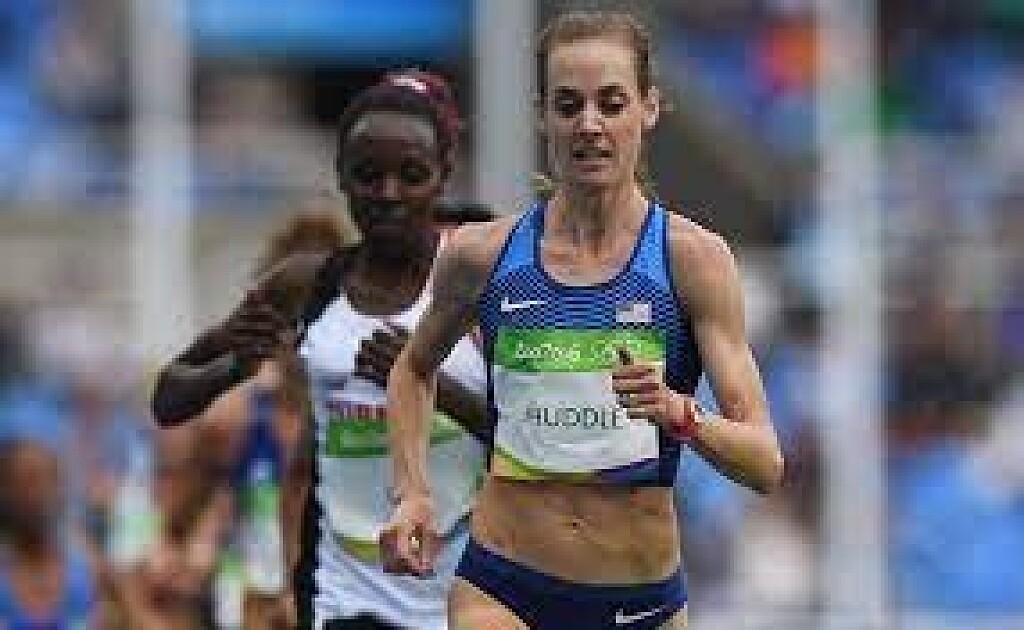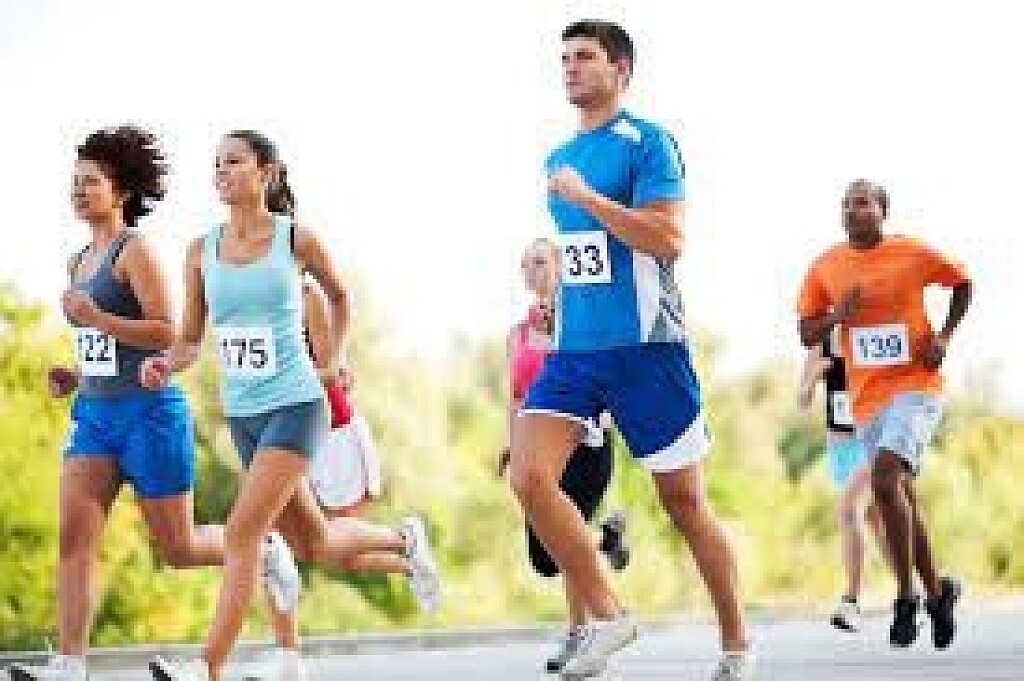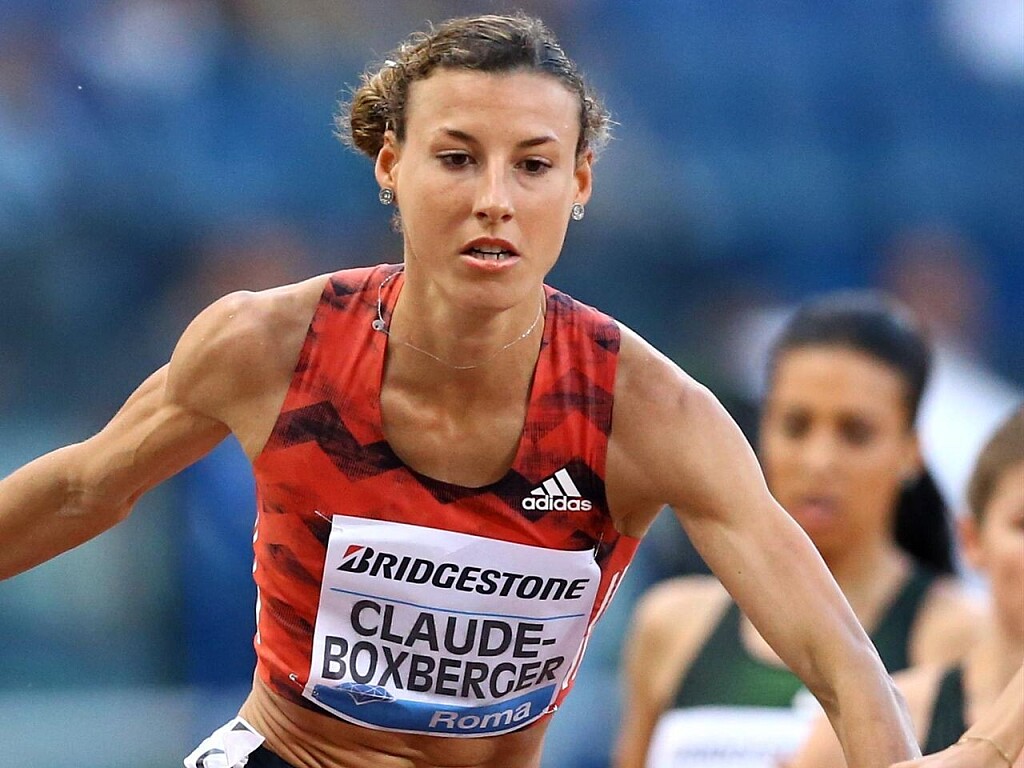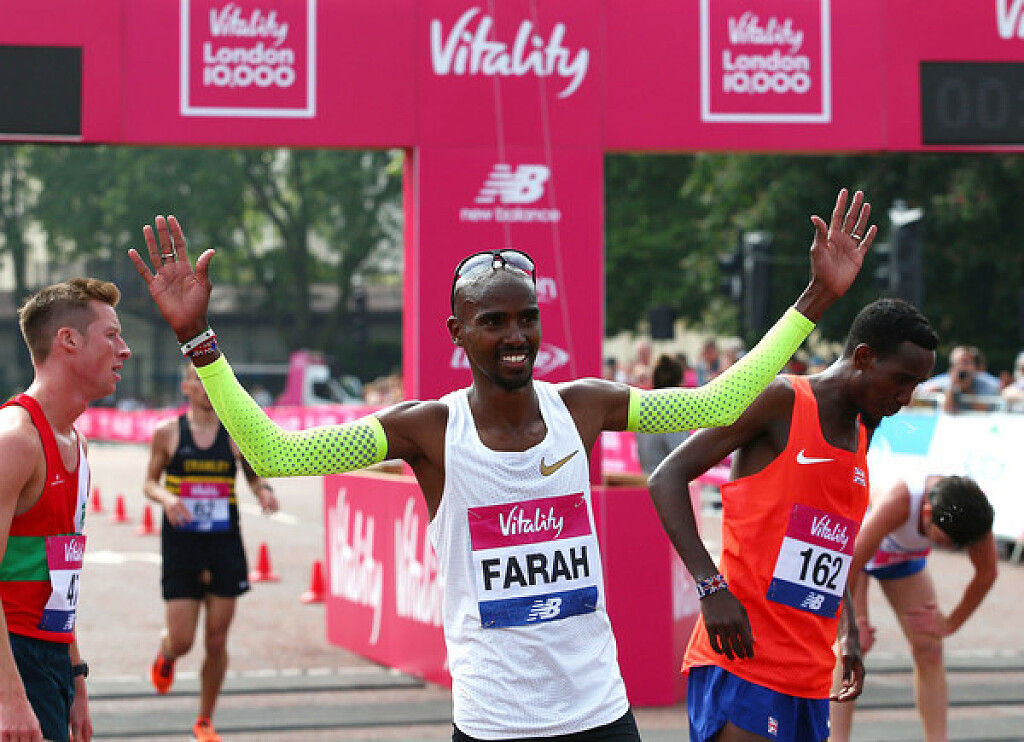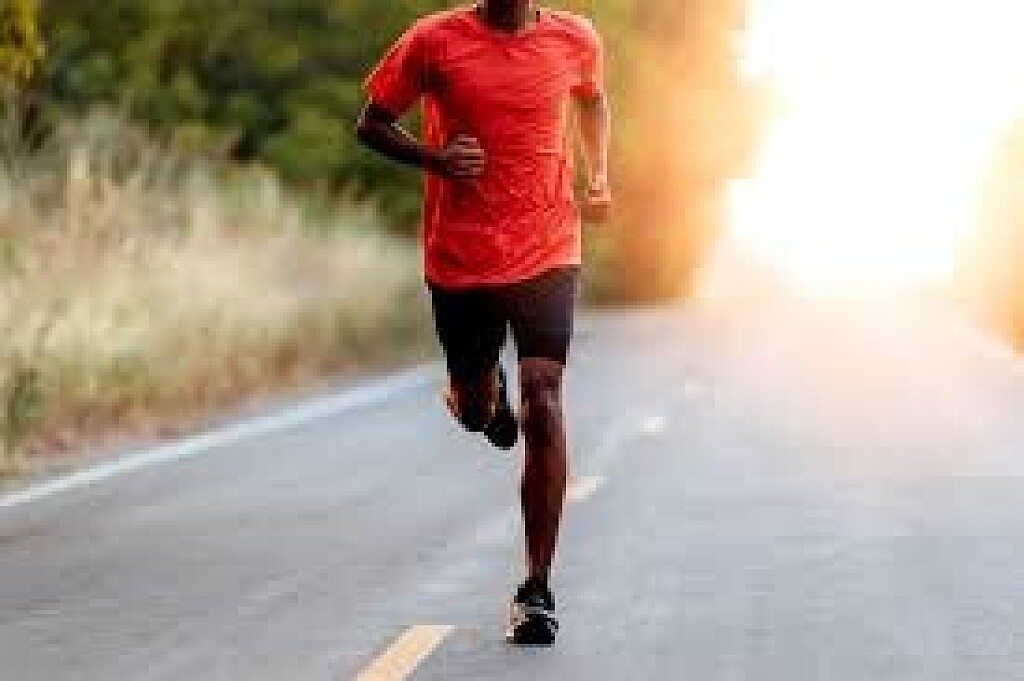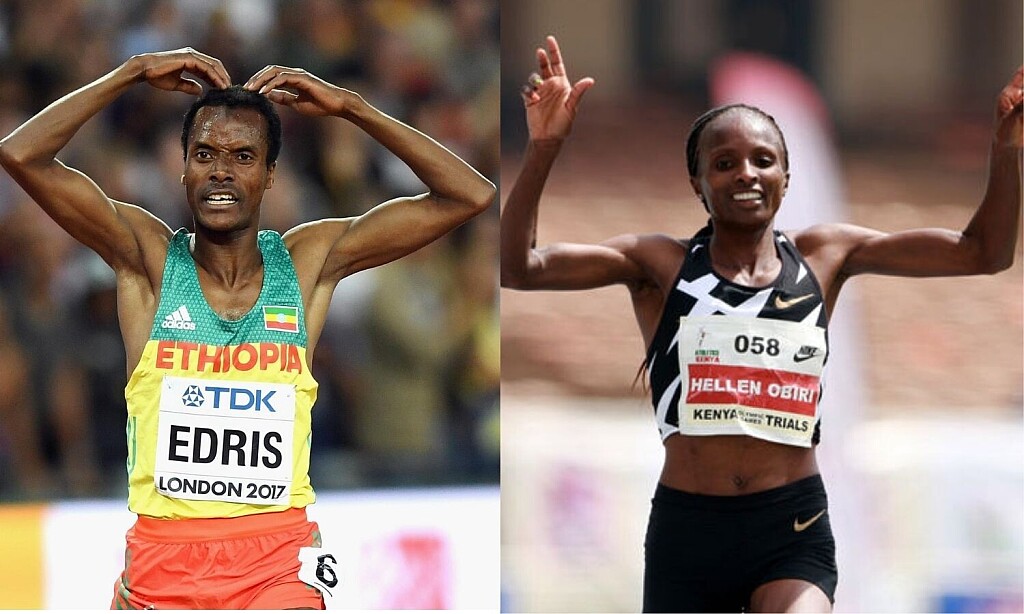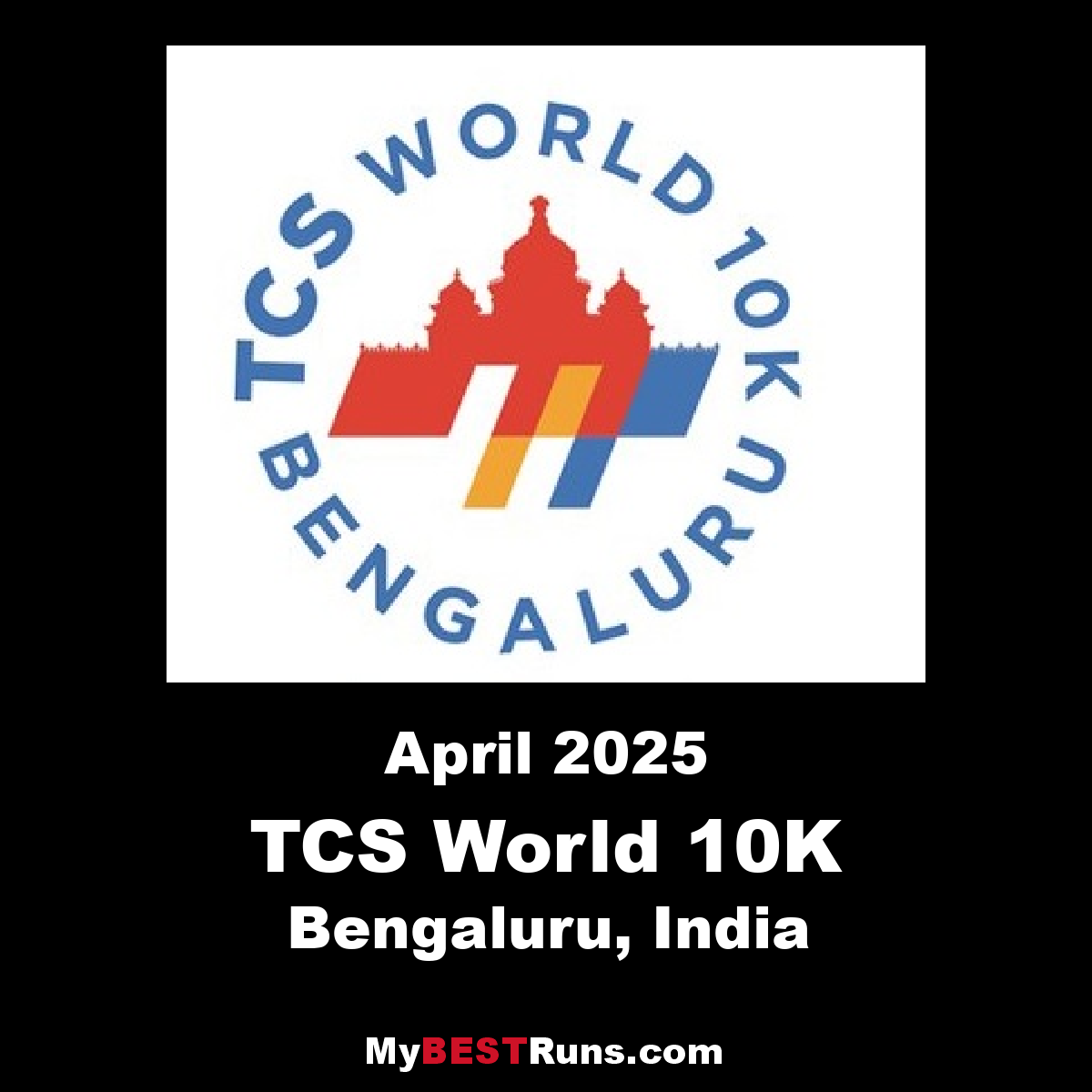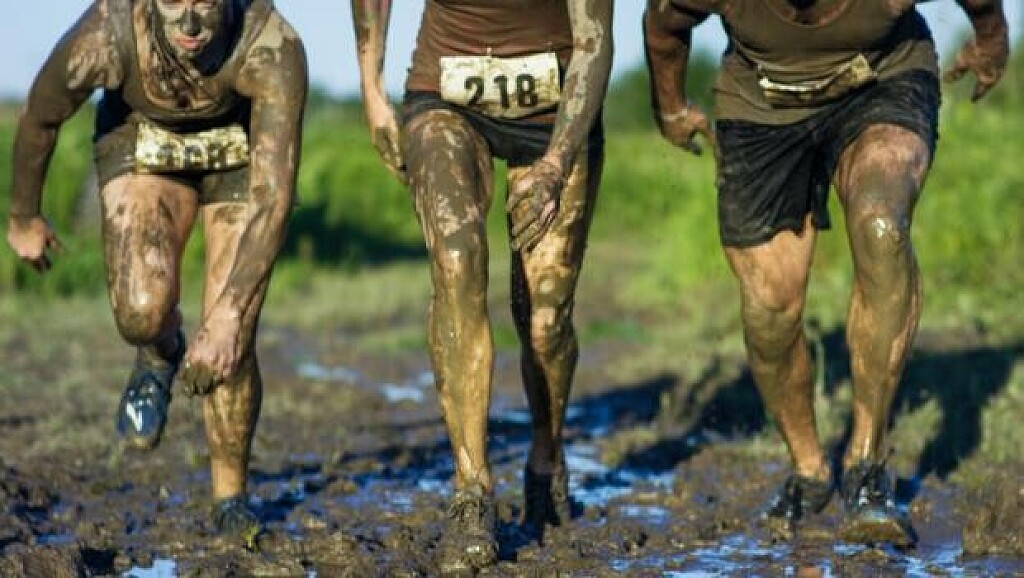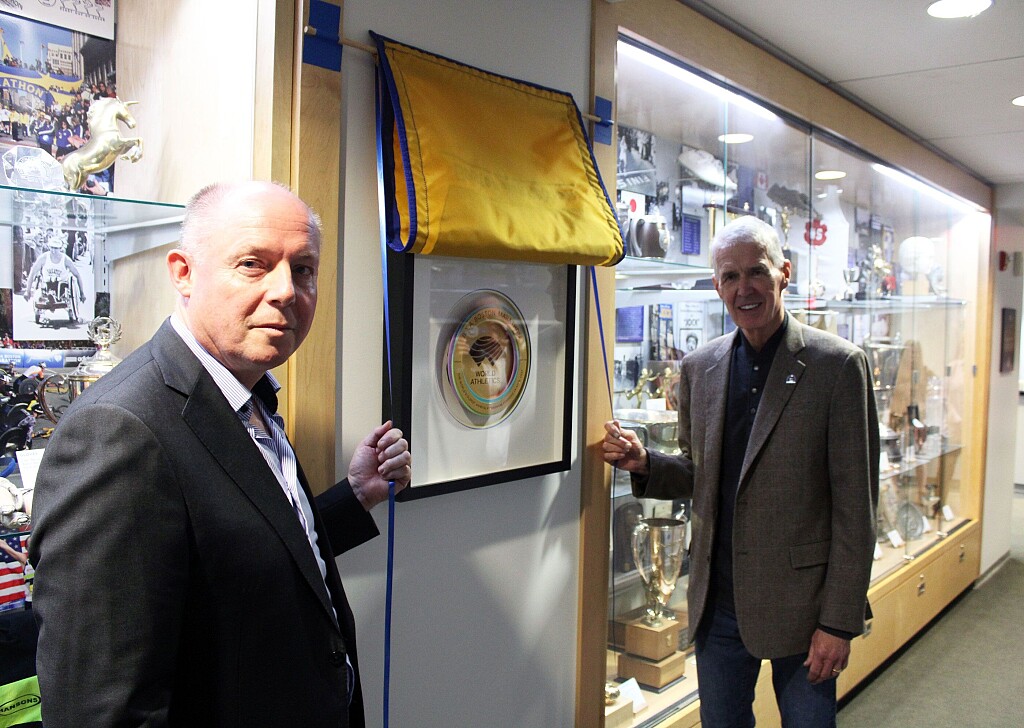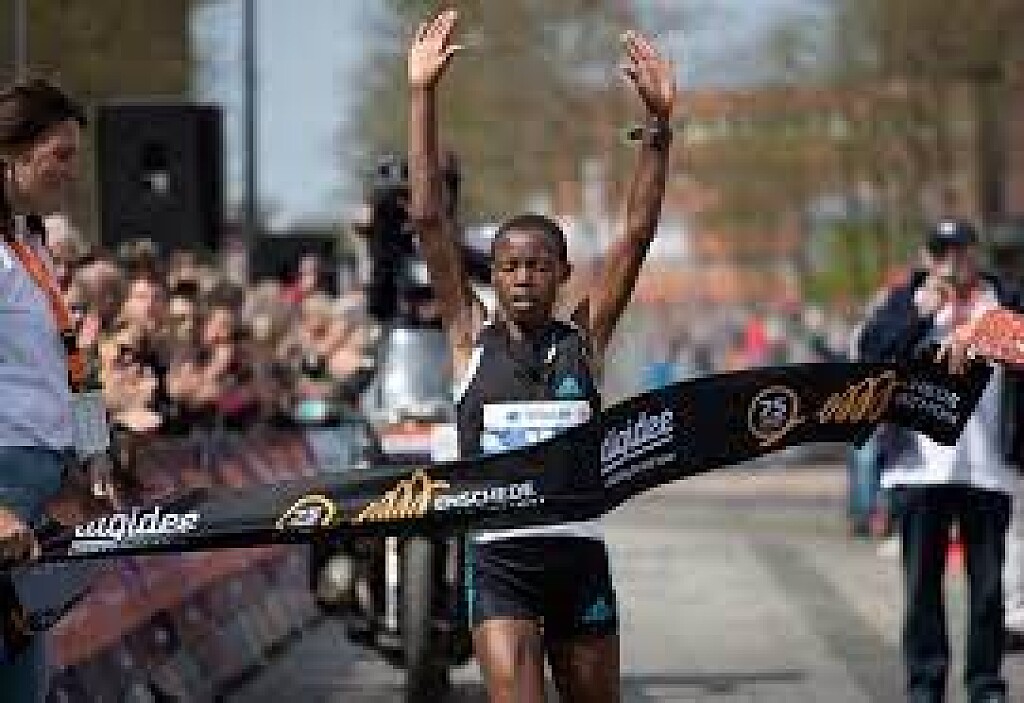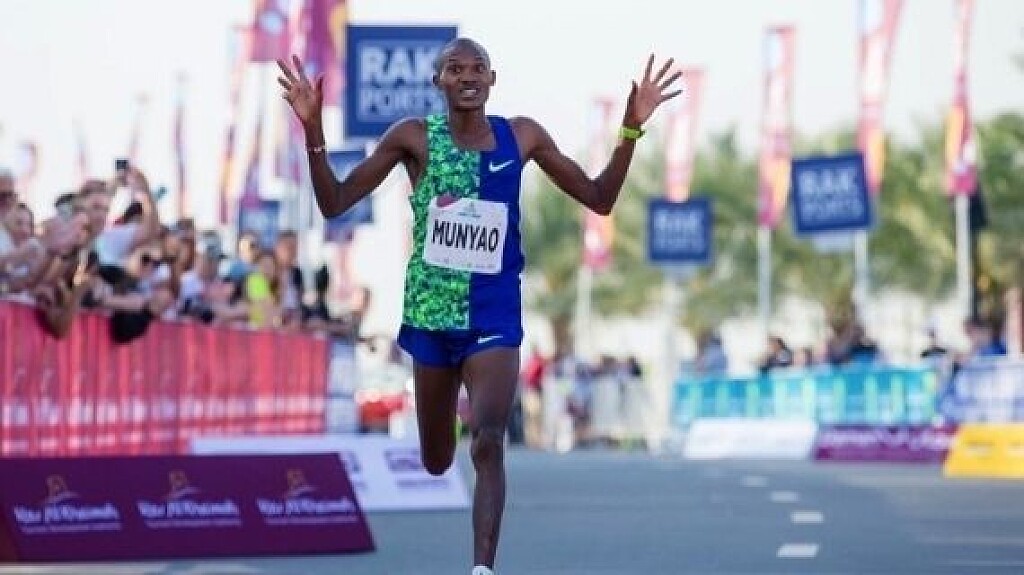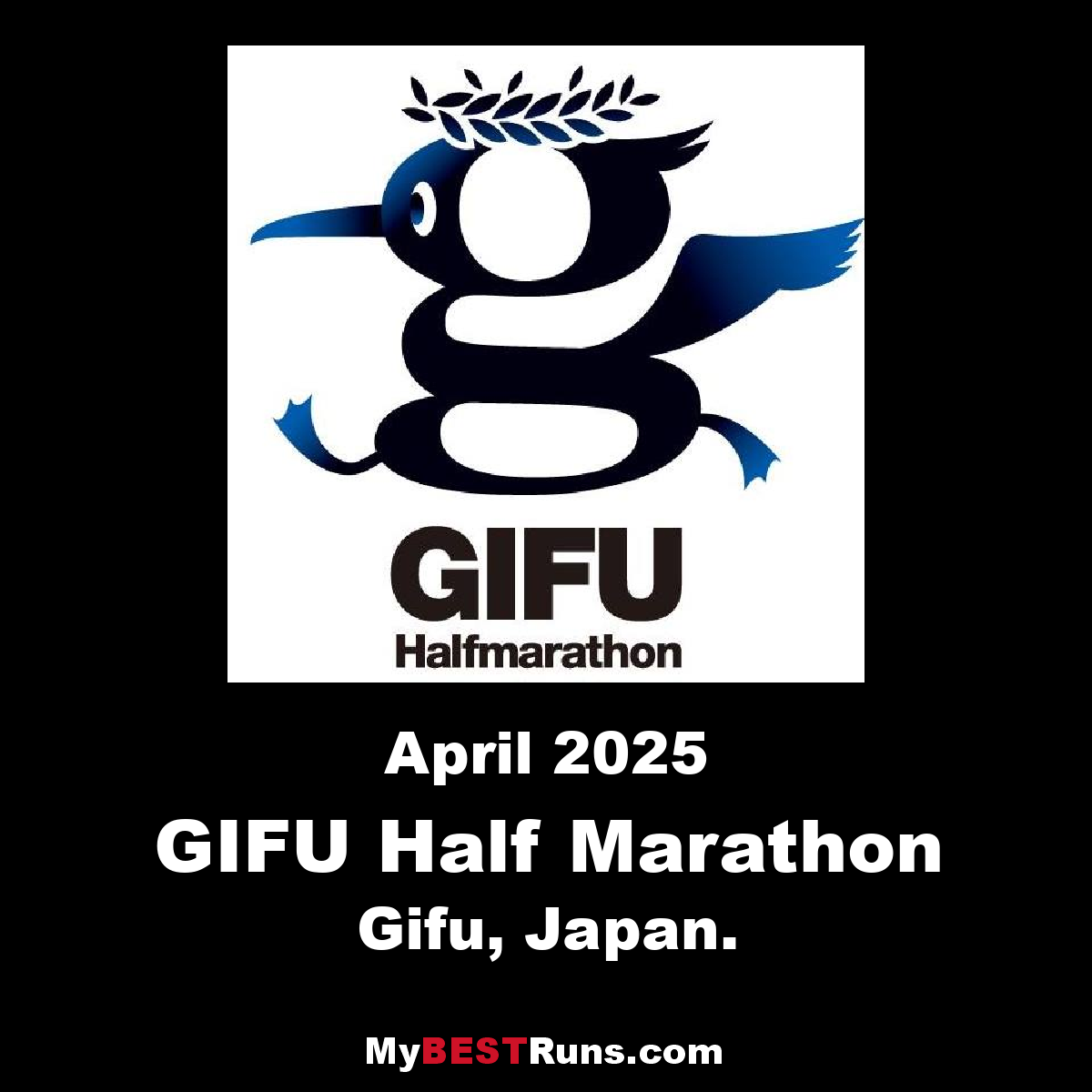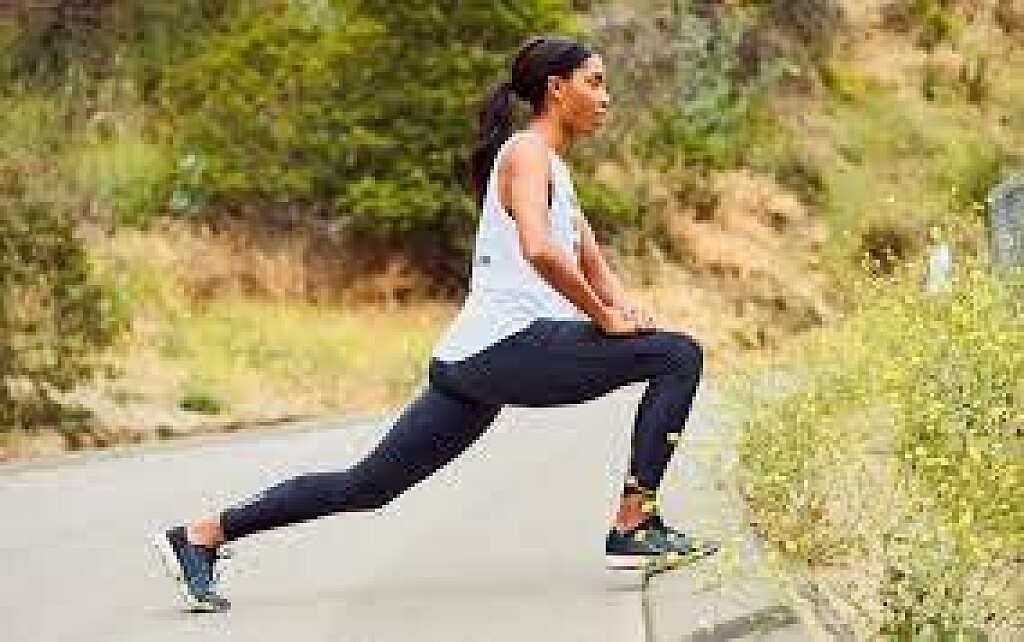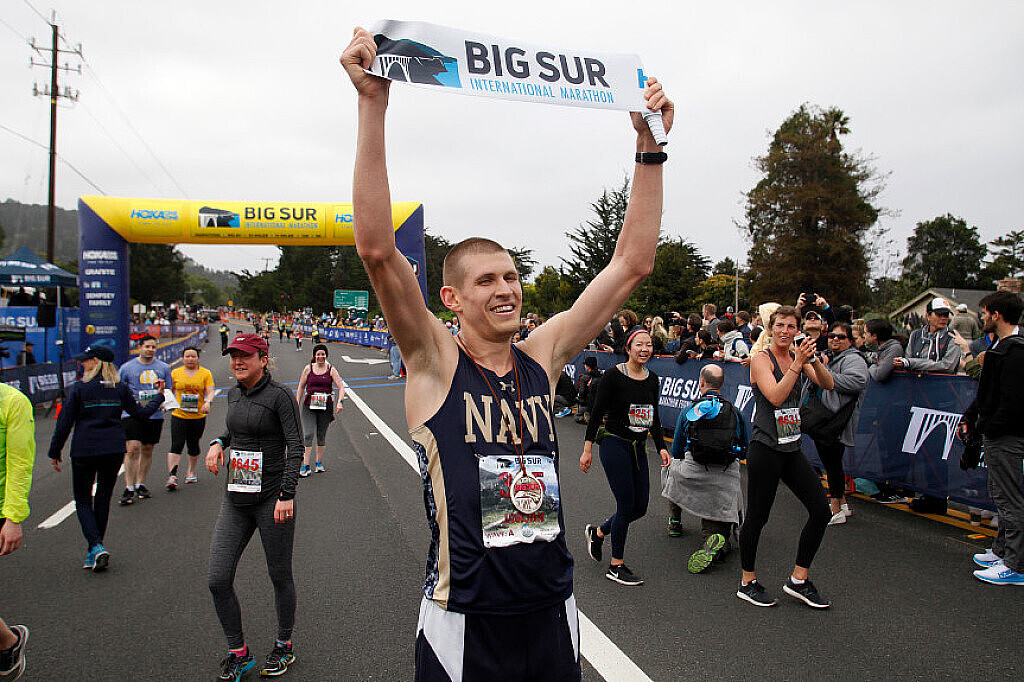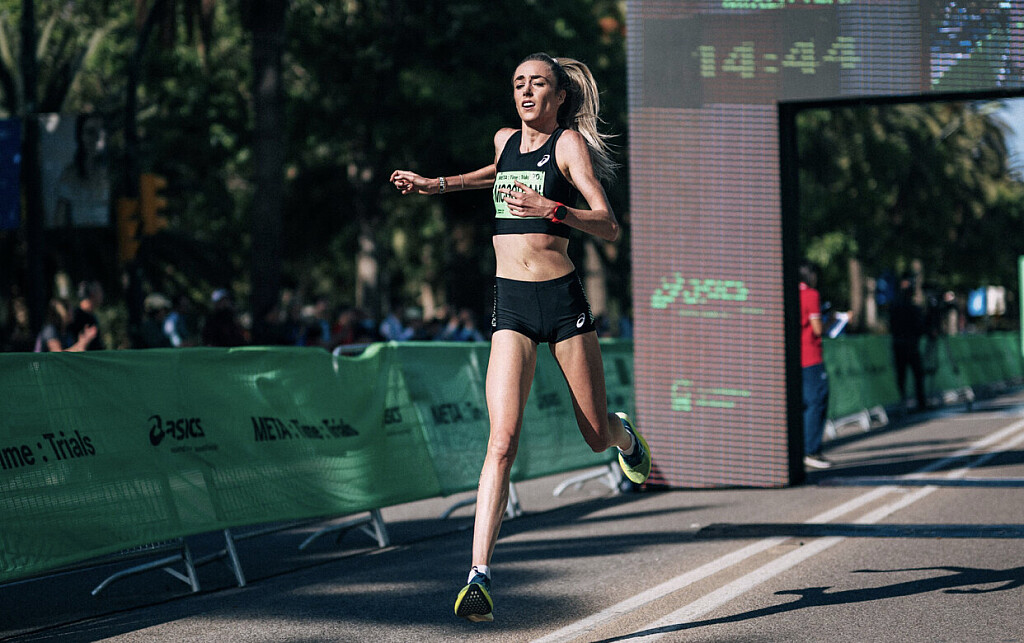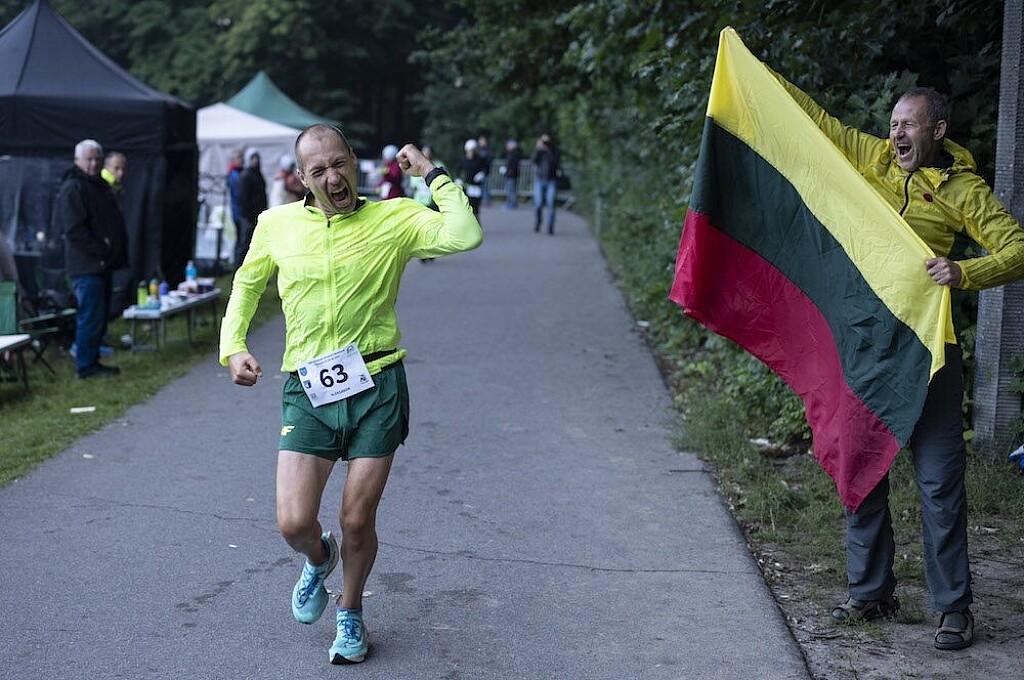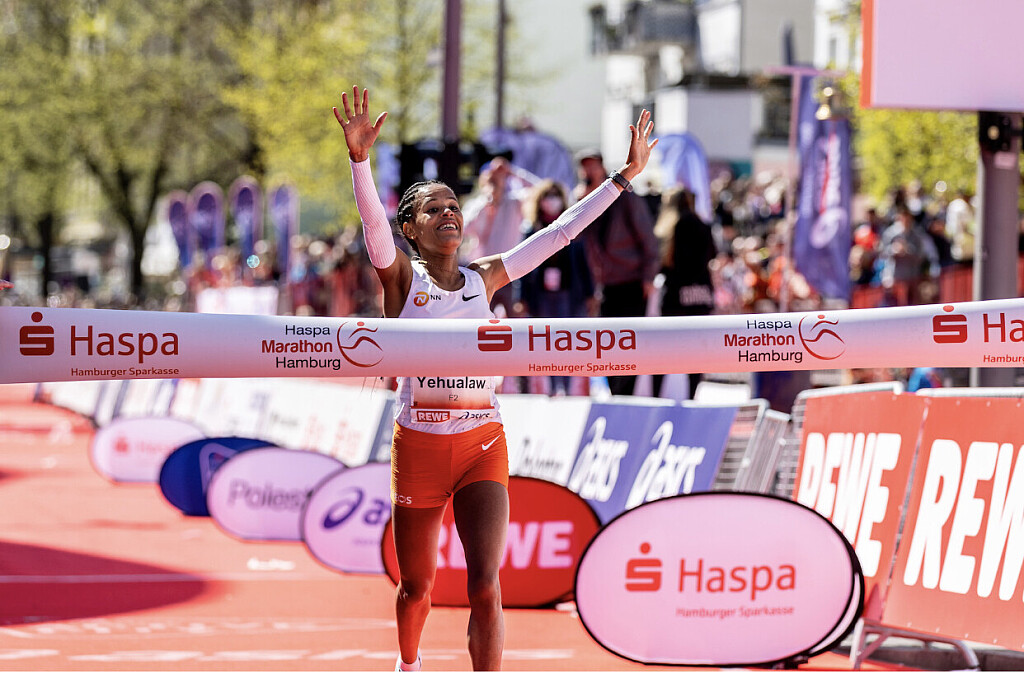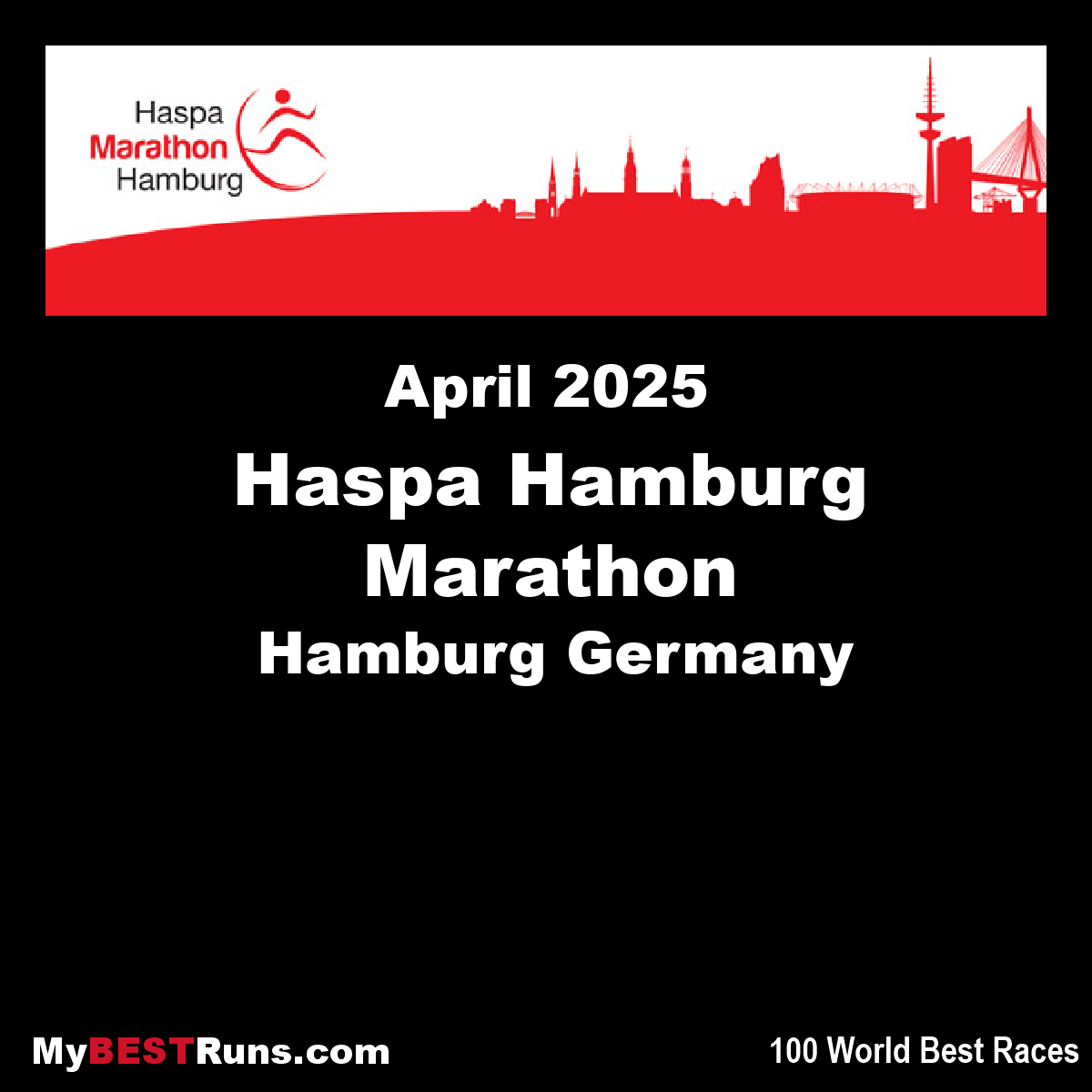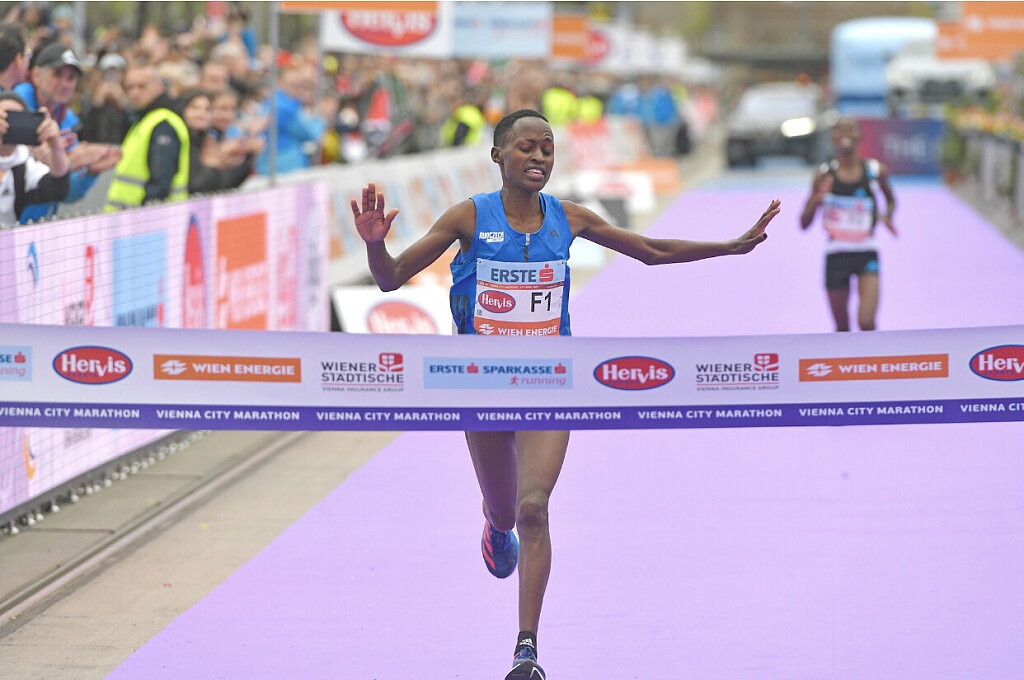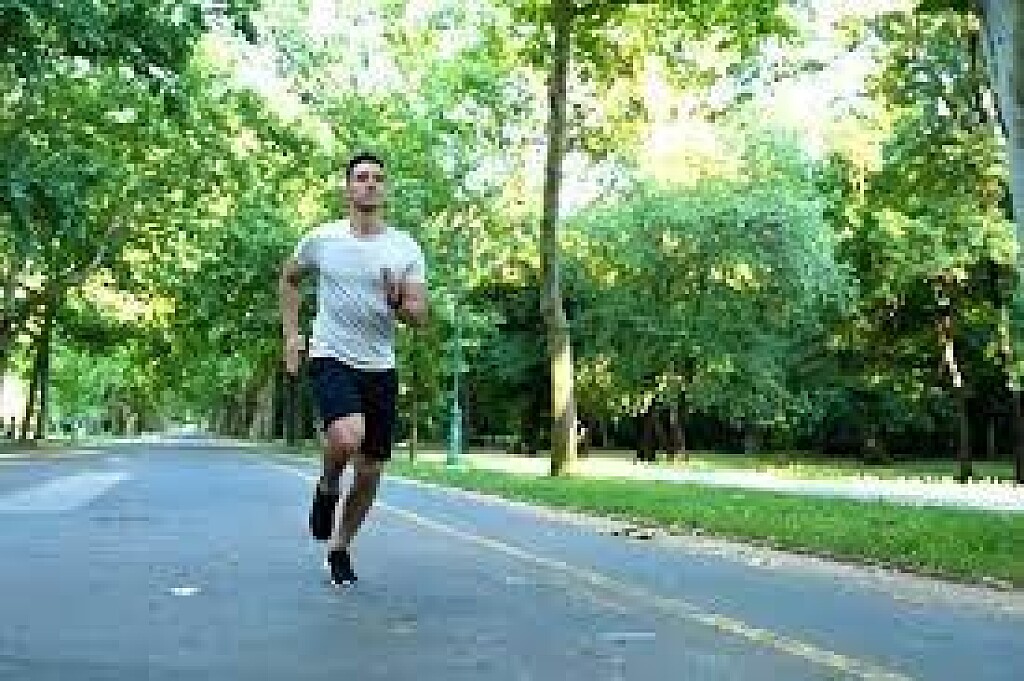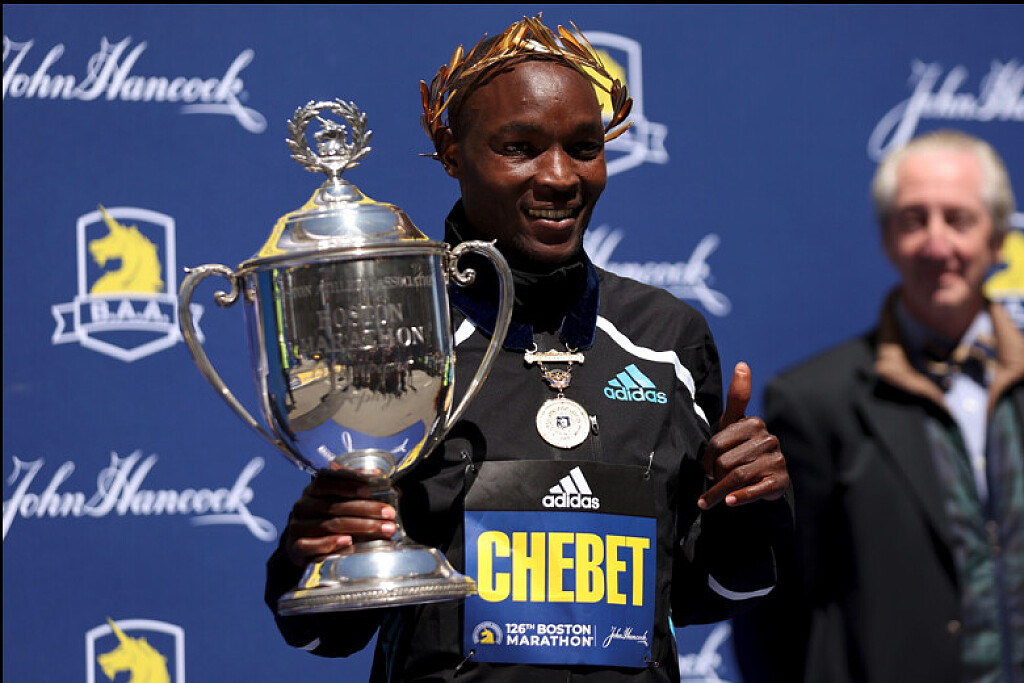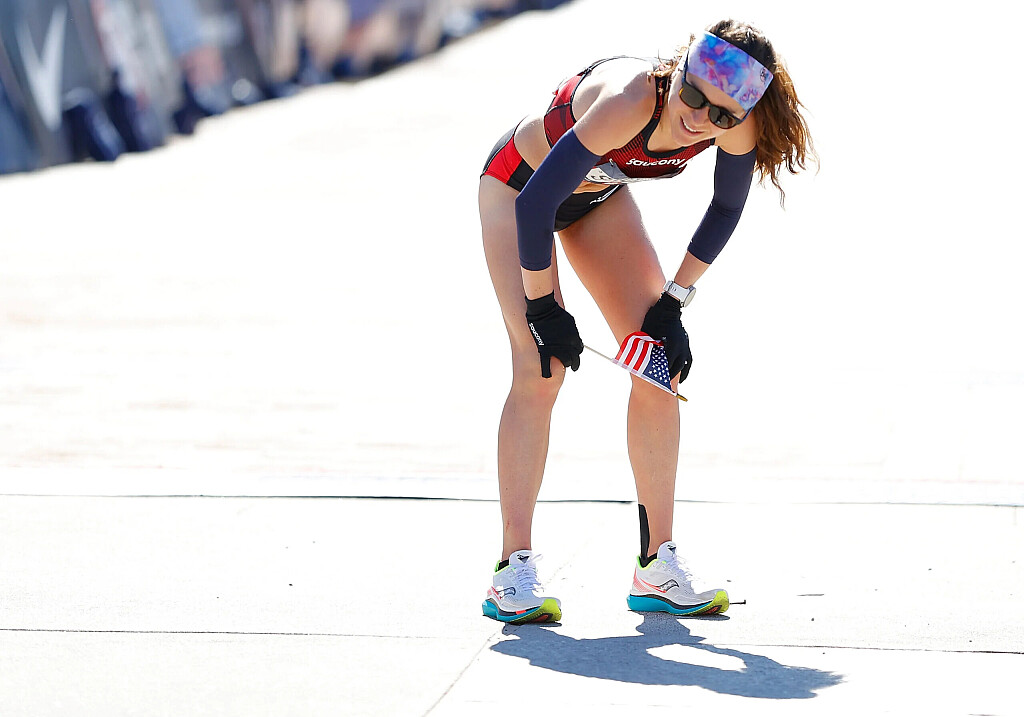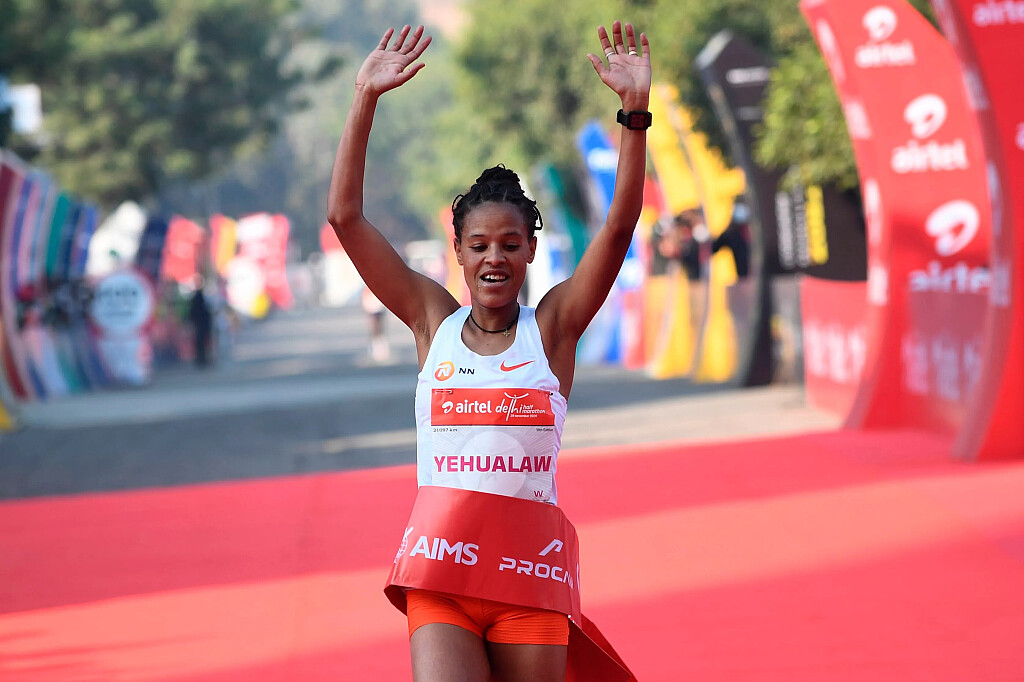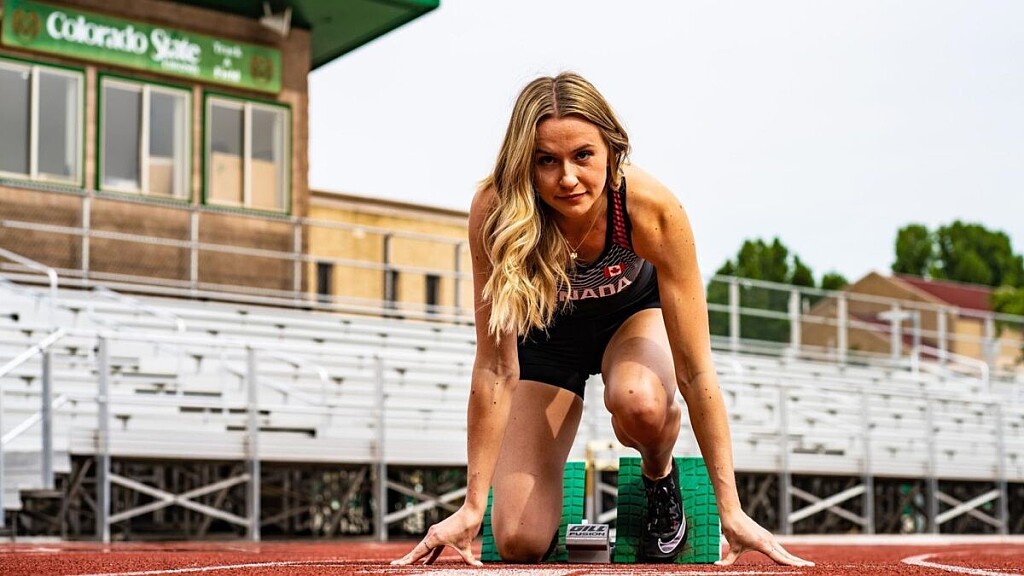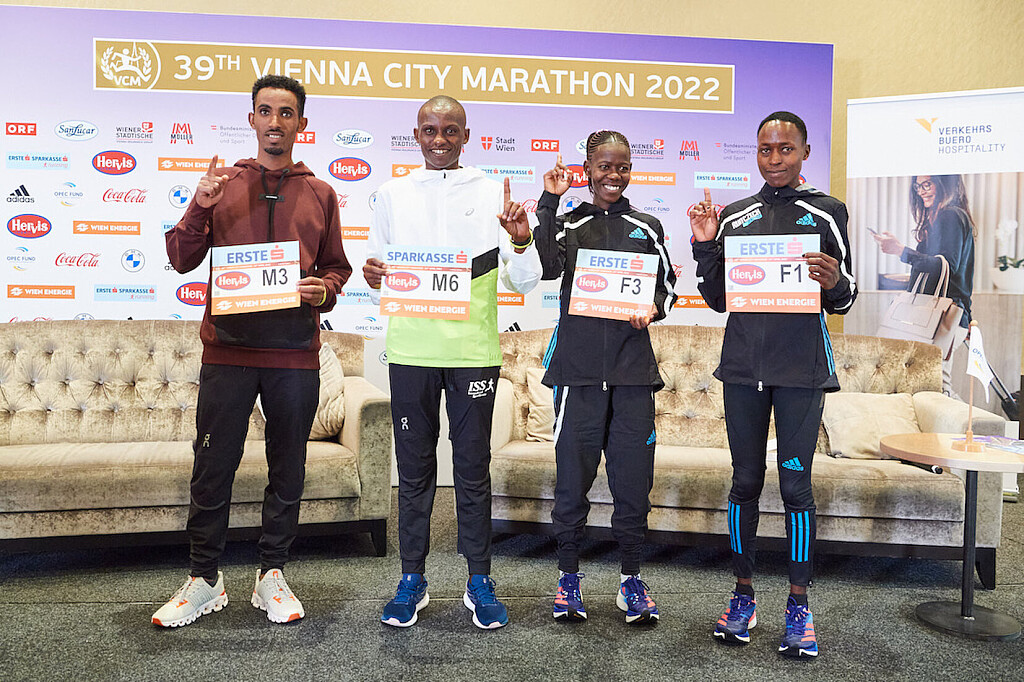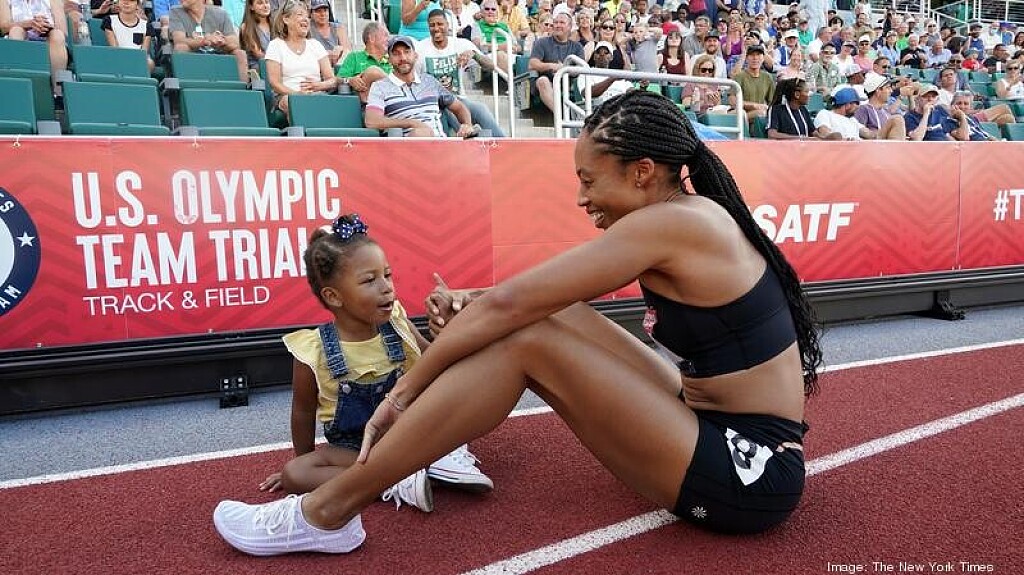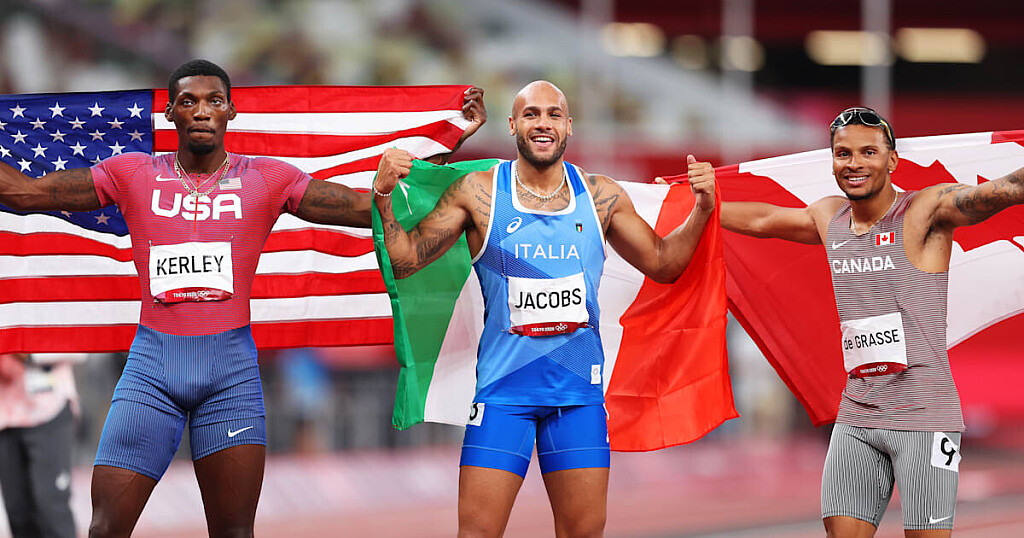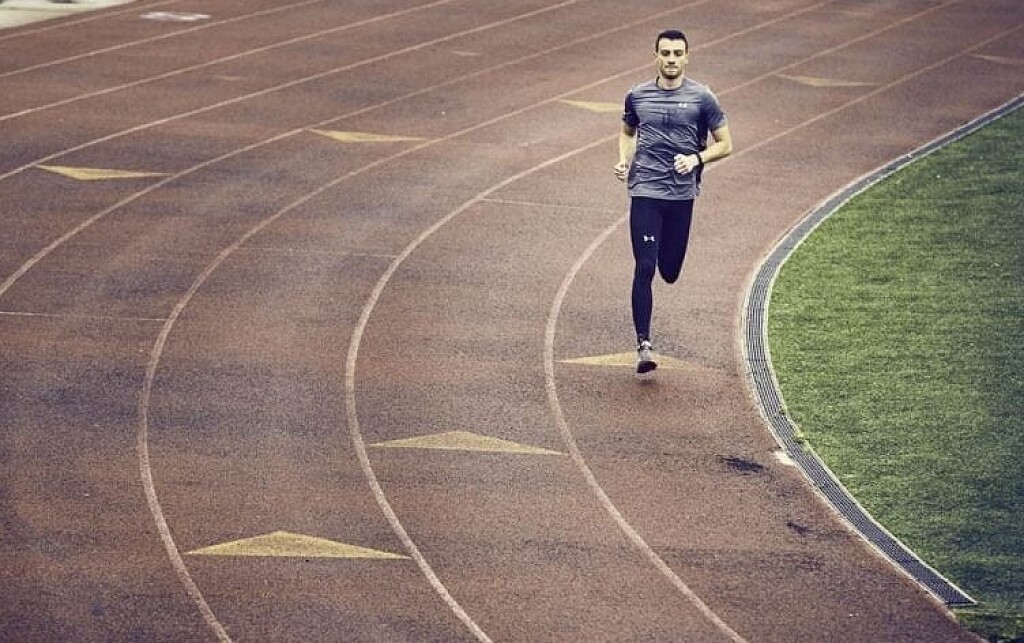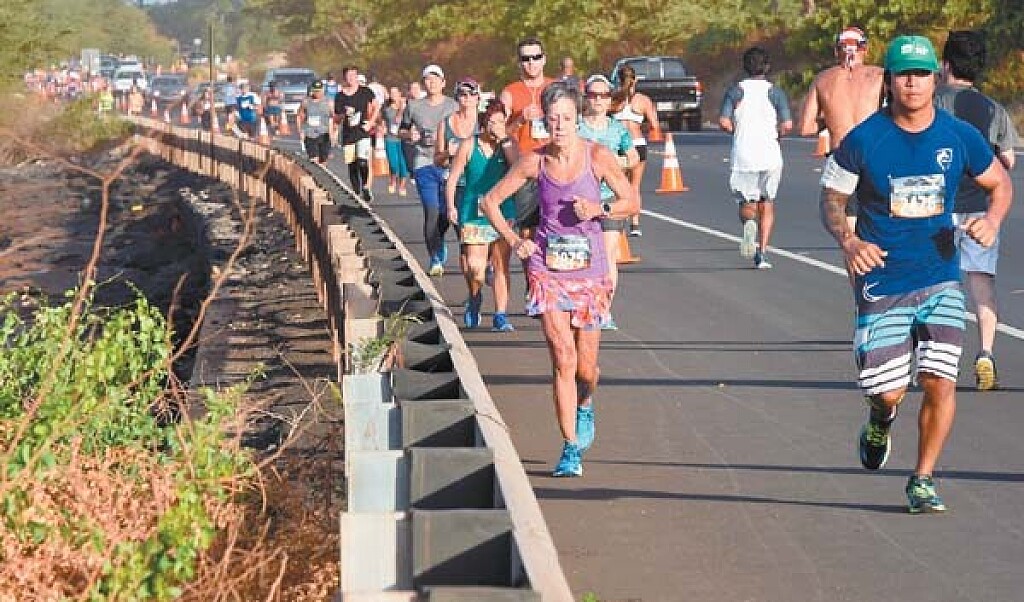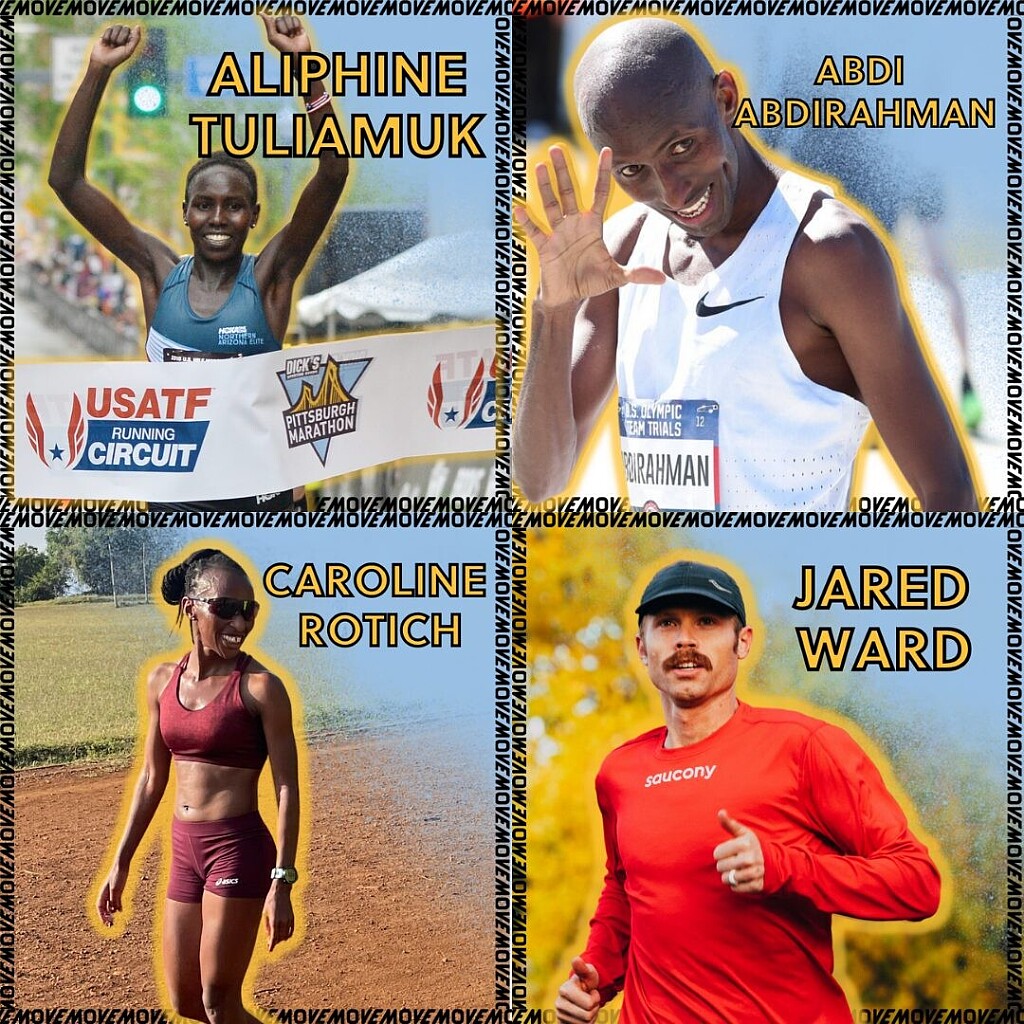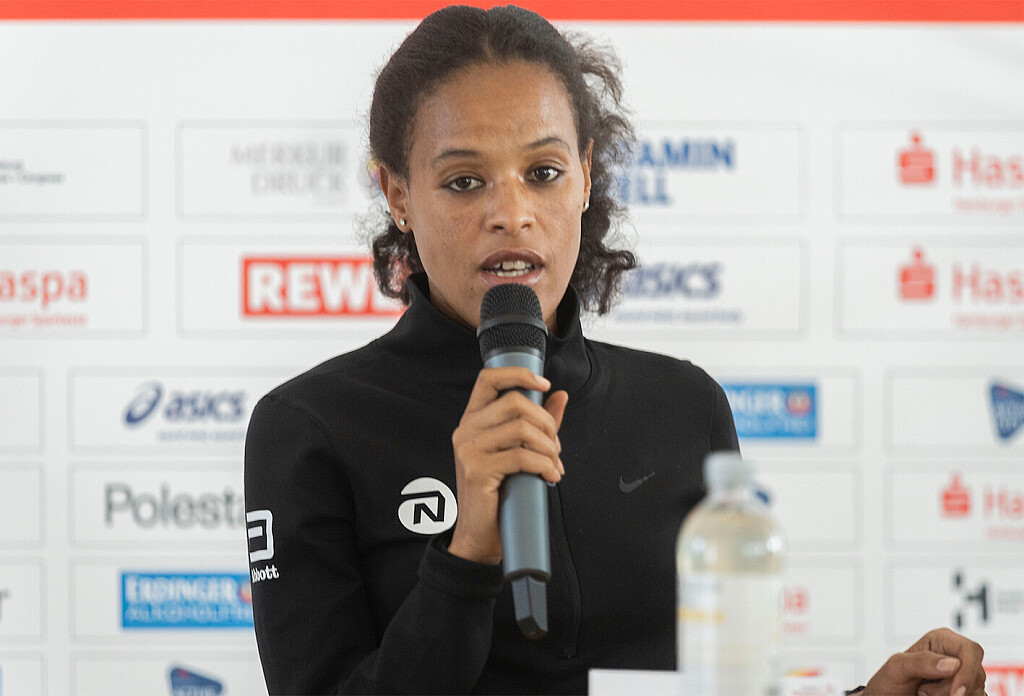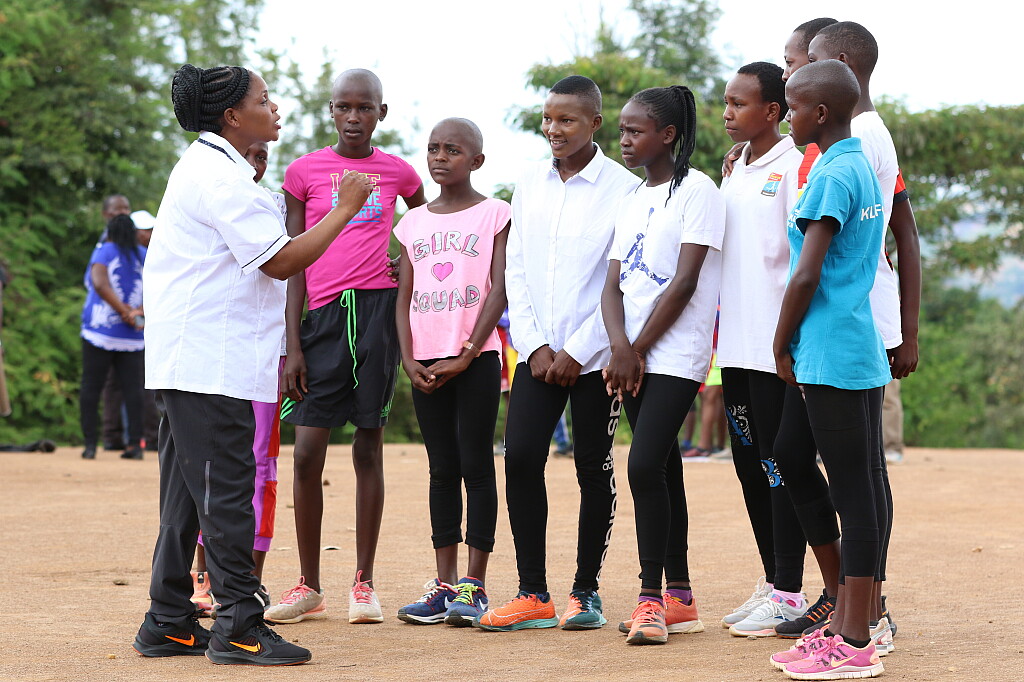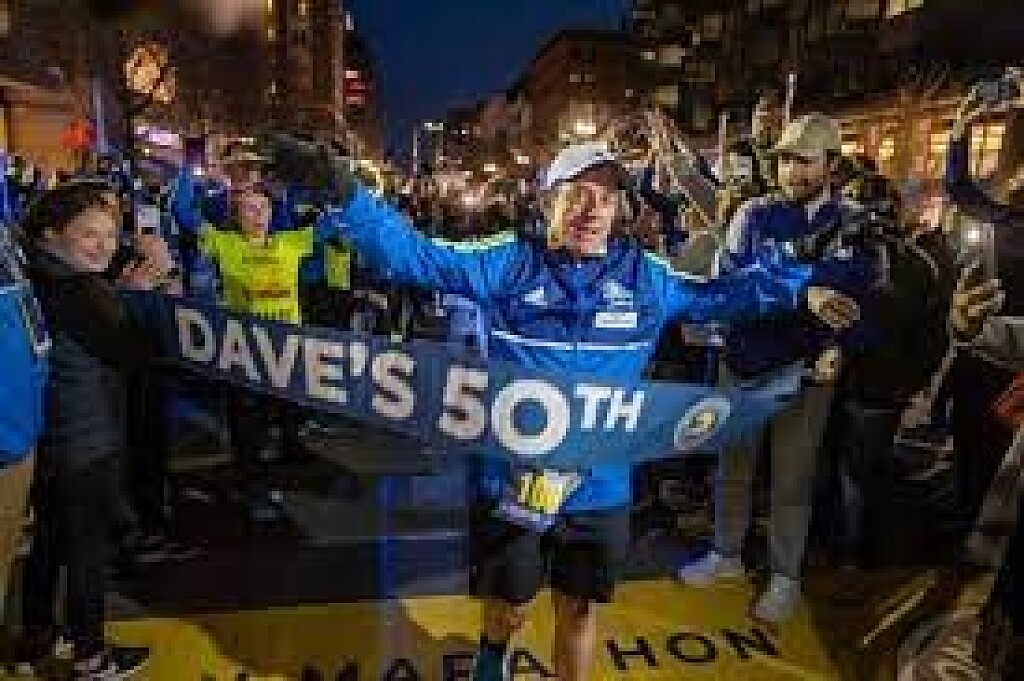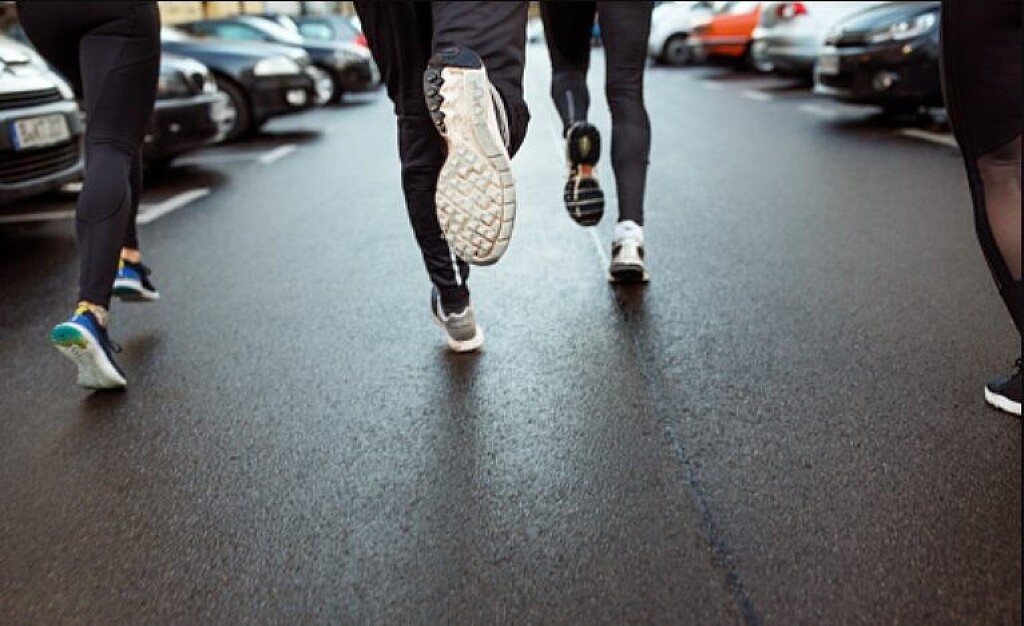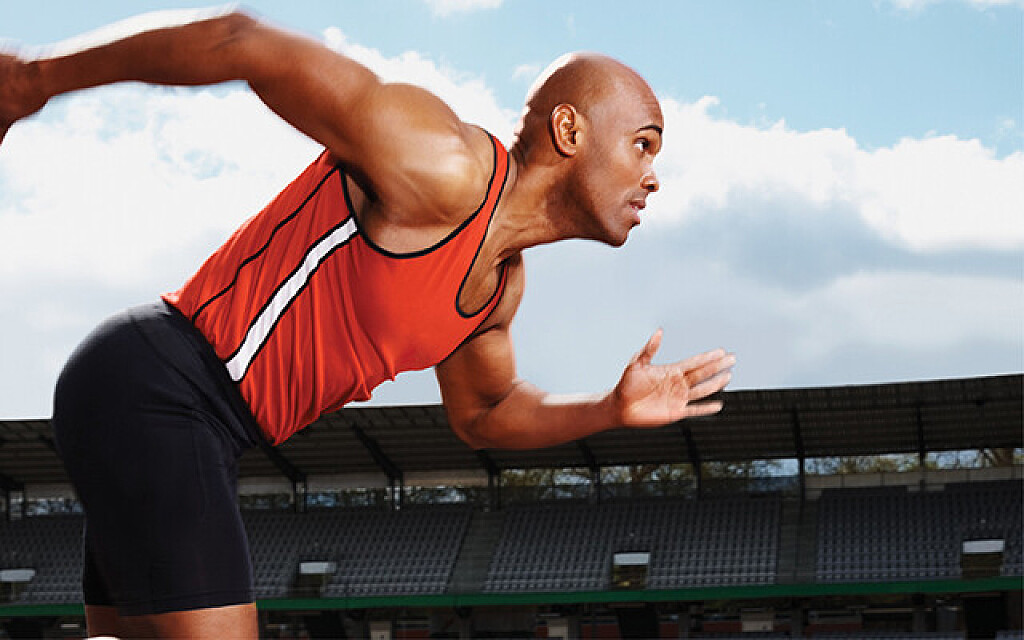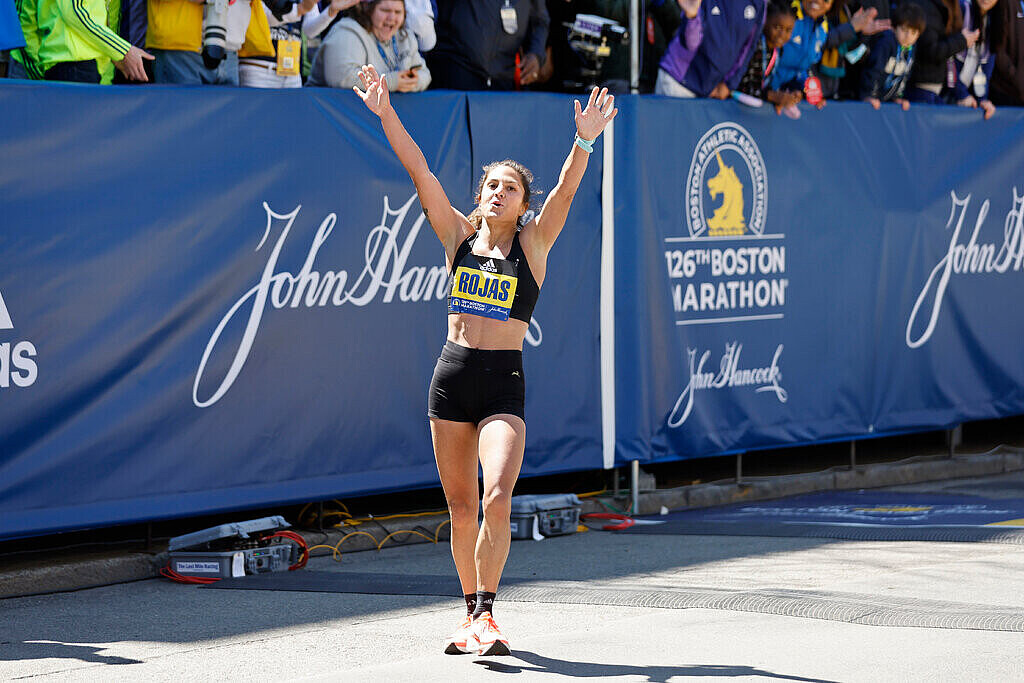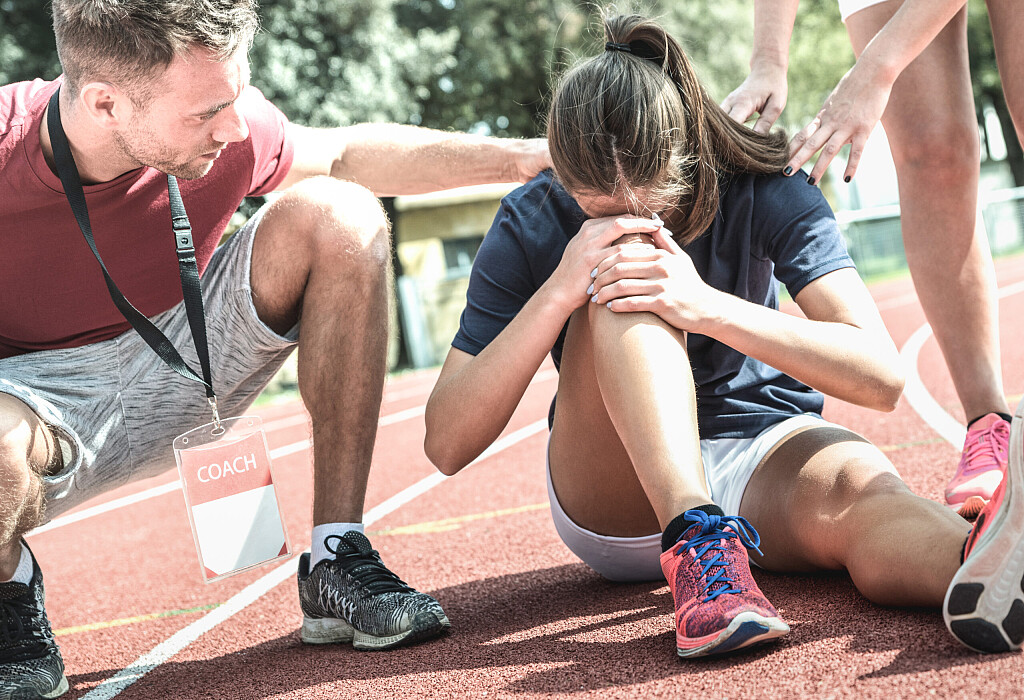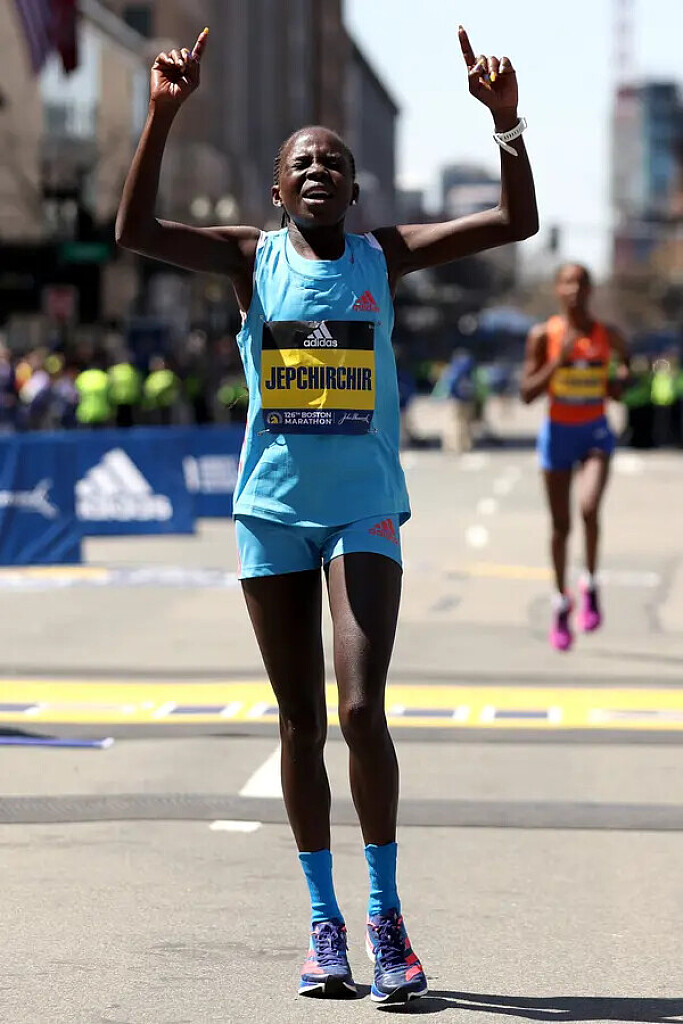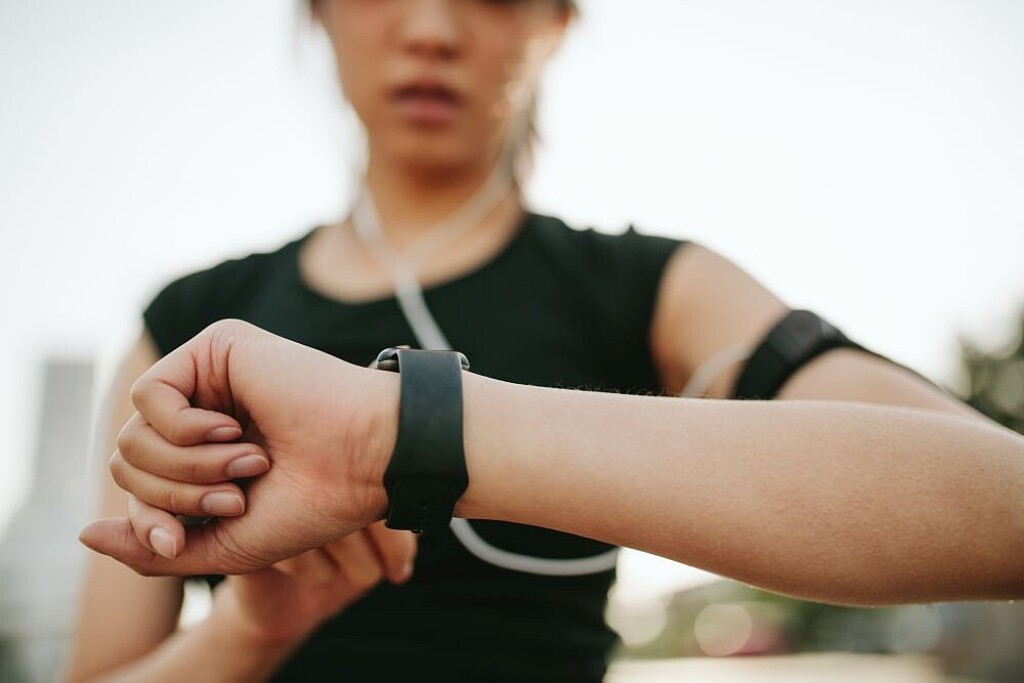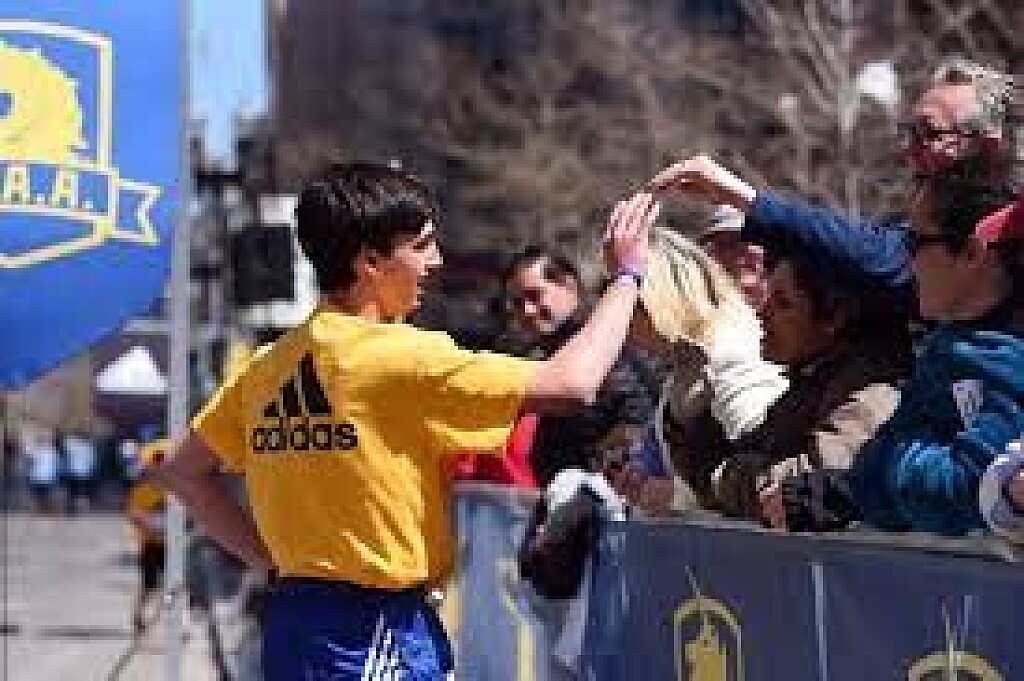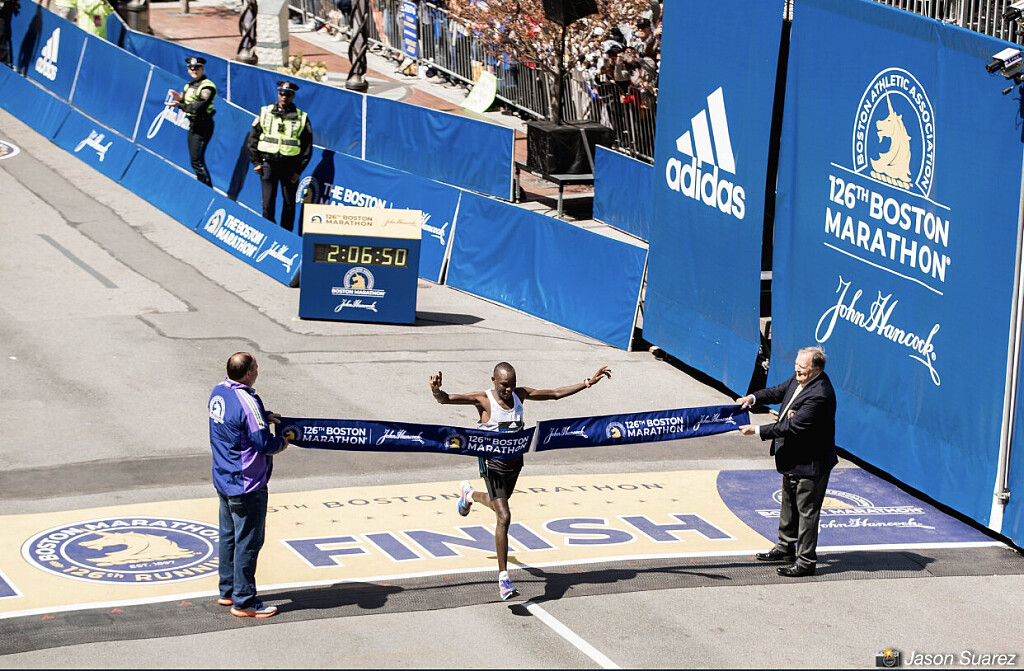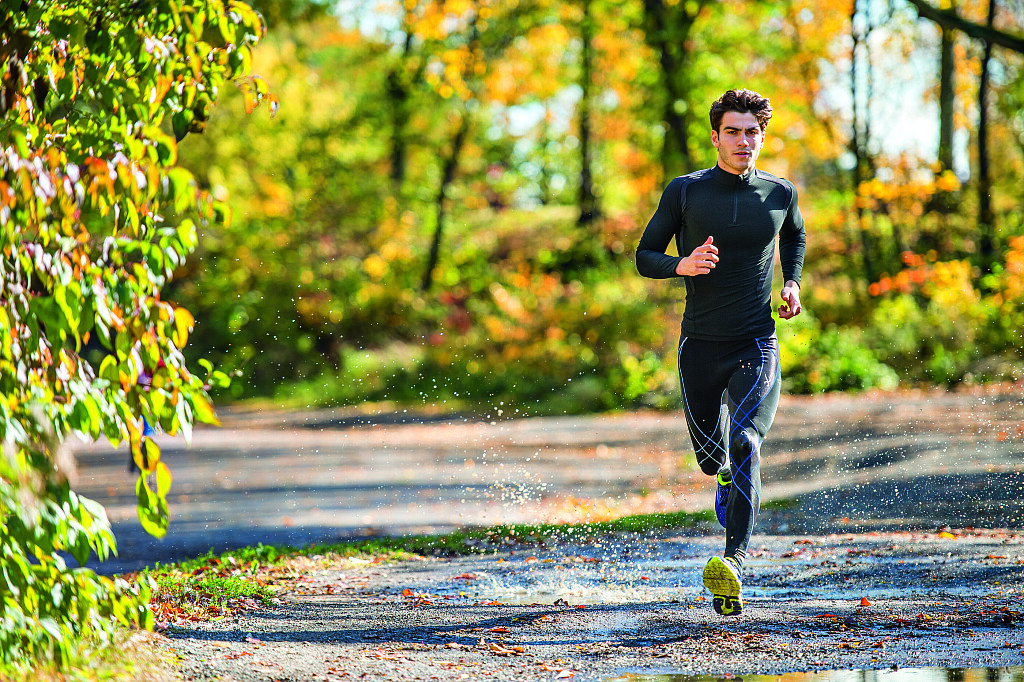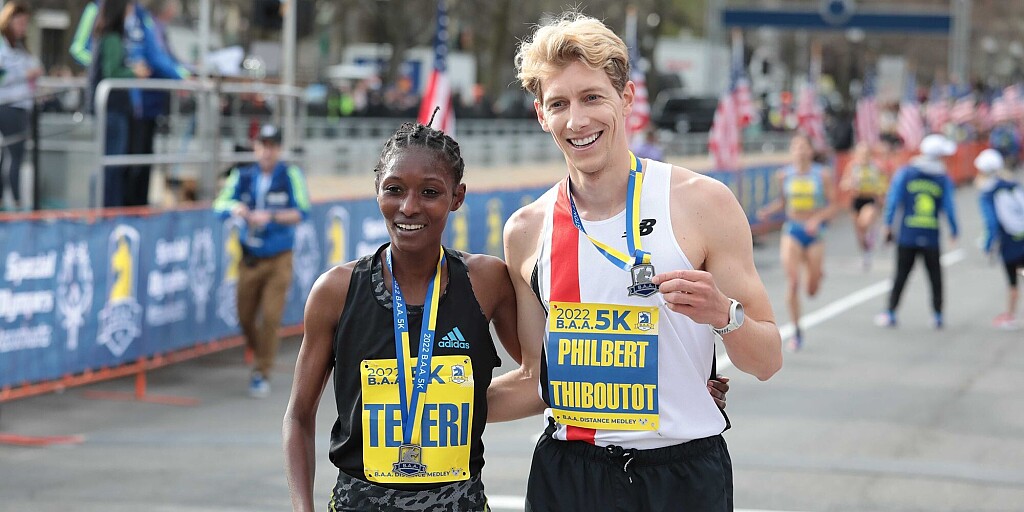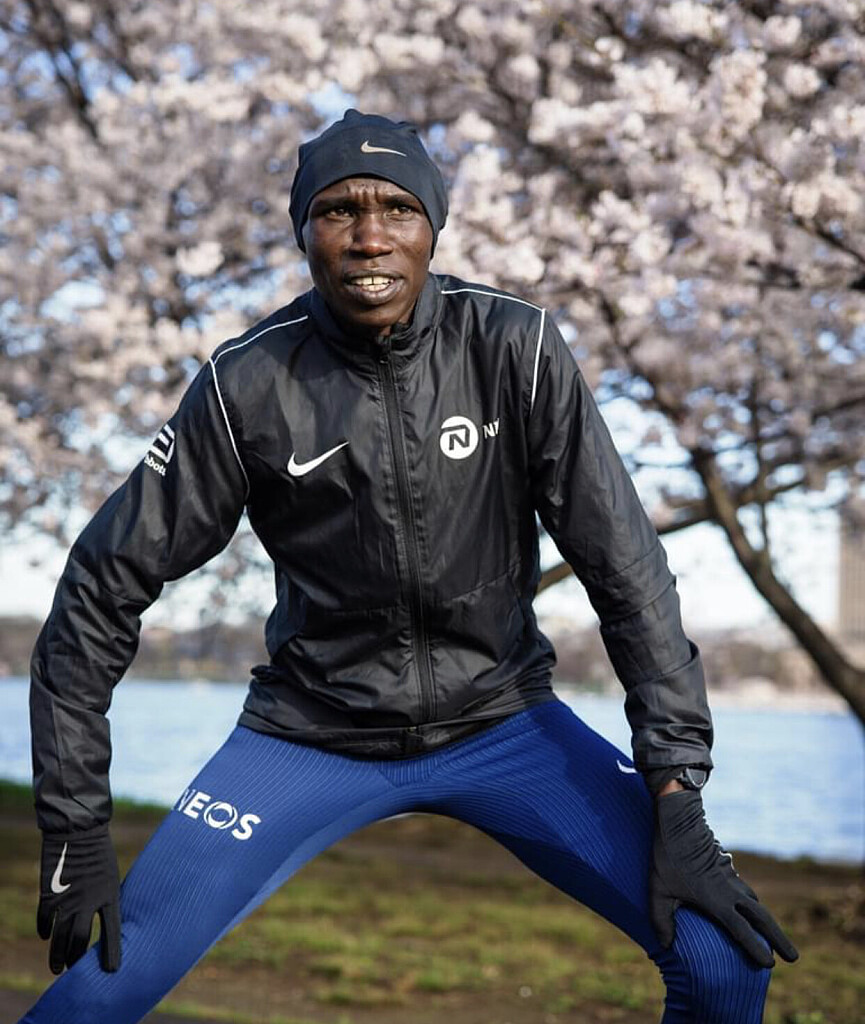Running News Daily
Running News Daily is edited by Bob Anderson in Mountain View, California USA and team in Thika Kenya, La Piedad Mexico, Bend Oregon, Chandler Arizona and Monforte da Beira Portugal. Send your news items to bob@mybestruns.com Advertising opportunities available. Over one million readers and growing. Train the Kenyan Way at KATA Running Retreat Kenya. (Kenyan Athletics Training Academy) in Thika Kenya. Opening in june 2024 KATA Running retreat Portugal. Learn more about Bob Anderson, MBR publisher and KATA director/owner, take a look at A Long Run the movie covering Bob's 50 race challenge.
Index to Daily Posts · Sign Up For Updates · Run The World Feed
Multiple U.S. record holder Molly Huddle and partner Kurt Benninger welcome their first baby
On April 26, Olympian and American-record holder Molly Huddle and her husband, Kurt Benninger (who is Canadian), welcomed the birth of their first child, Josephine Valerie Benninger. The couple met during their undergrad years at Notre Dame University in Indiana.
Huddle’s pregnancy was extremely well documented. Returning to elite competition after pregnancy remains poorly understood, and Huddle wanted to do her part by giving other women a peek behind the curtain. Huddle posted weekly updates to her Instagram, letting her followers know what she’d done for training and how it made her feel.
“Week 31: A lot of track and treadmill. It’s easier to stay flat and I can keep a water bottle nearby. Modifications are the name of the game at this stage. Made some adjustments to the core routine to avoid “the doming” happening on exercises that were fine only a few weeks ago,” she writes.
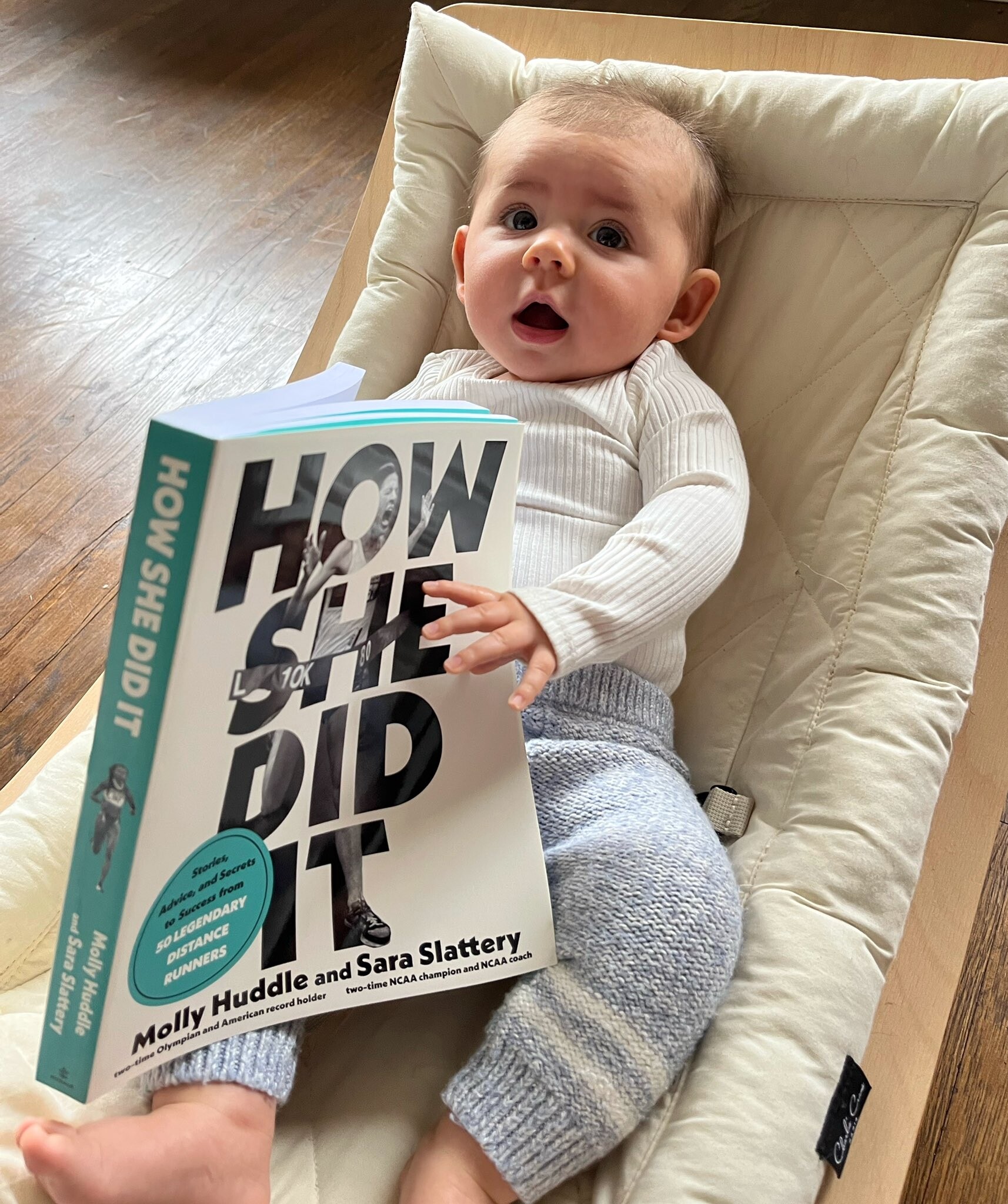
Beyond keeping followers up to date with her training, Huddle also provided tips and outlines things that, in retrospect, she wishes she’d done differently.
This year, Huddle, along with NCAA champion Sara Slattery, co-wrote their first book, How She Did It. The two women wanted to outline their paths from high school to becoming NCAA champions, to Olympic start lines.
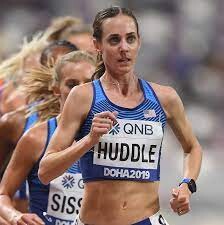
Beyond detailing their own stories, they compiled advice from more than 50 female runners, to help demystify the process for the next generation. The book features runners as diverse as Joan Benoit Samuelson and Raevyn Rogers, and shares their insights on the sometimes winding route to success.
Huddle and Benninger relocated from Phoenix, Ariz. to Providence, R.I. in 2021.
(04/29/2022) ⚡AMPby Madeleine Kelly
Five things you wish you had known before your first race
If you are preparing to tackle your first road race. Whether it’s a 5K or 42.2K (or something in between), we are here to help you out with what you wish you had known before your first race.
Here’s what fellow first-time racers had to say:

1.- “Have fun!”
Having fun is the most important thing all runners should remember to do going into their first race. There’s no need to put any pressure on yourself; have fun with the race, and take in the entire experience. Enjoy the music, the crowds and the general fun aura that builds around races.
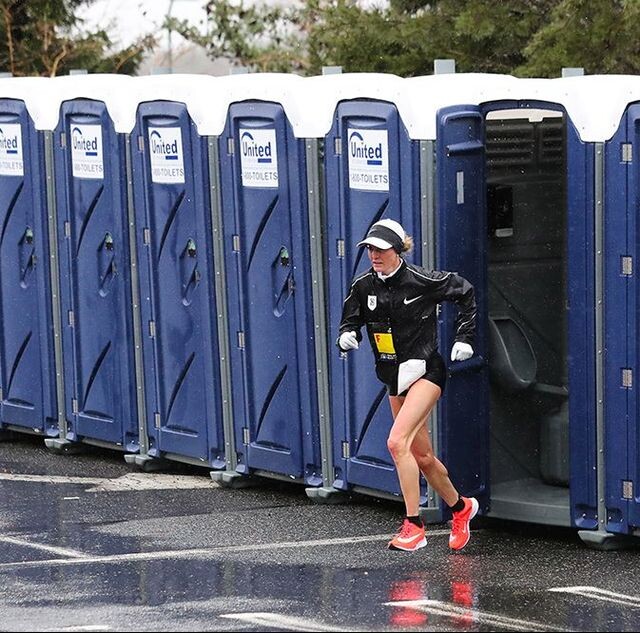
2.- “Rest up in days prior”
It’s important to make sure you’re well-rested three to five days before the race, as the excitement may prevent you from having a good sleep the night before. Don’t partake in any strenuous activity you normally wouldn’t do the day before your race. Another thing one runner recommends is not to drink too much the night before. One or two drinks won’t hurt you, but any more than that are likely to impact your performance.
3.- “Don’t go out too fast”
It’s obvious that you’ll feel best at the beginning of the race. But with all the emotion of the start, it’s tempting to sprint off. But if you do this, you’ll pay the price later when you run out of gas.
4.- “Don’t try anything new on race day”
Avoid eating anything you wouldn’t normally eat before going for a run. That applies to anything, not just food–including shoes and clothing. It’s better to go with things your body has been comfortable with during training.
5.- “Go to the bathroom before the start”
Even if you feel like you don’t have to go, GO. We cannot stress enough that there is no worse feeling than having to halt your run for a porta-potty stop. If you go before the start, you can (hopefully) avoid needing to go again mid-race. Avoid lineups by going 15 to 30 minutes before the start of the race.
(04/28/2022) ⚡AMPby Running Magazine
How to dress for spring running, if anything is certain, it's the uncertainty of spring weather
If anything is certain in the spring, it’s the uncertainty of the weather. Cold, windy mornings can give way to sunny, warm afternoons. It’s often cold enough to make rain especially miserable, and in many places, snow remains a serious possibility until late spring.
It’s easy to remain either underdressed or uncomfortably warm from wearing too much clothing. The following tips will help you make the best choices for what to wear on your springtime runs.
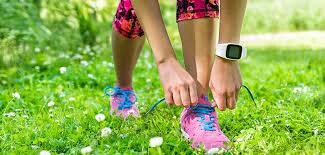
Create your own ‘feels like’ temperature
Your body produces a lot of heat when you run, so add about 10 degrees to the ‘feels like’ temperature of the weather report. For example, if the weather says it’s 12 C outside, but feels like 8 C, you can assume that once you’re warmed up, it’ll feel more like 18 C, so plan to be comfortable at this temperature. If it’s raining, only add about five degrees to the forecasted feels-like temperature.

Of course, some people are much more sensitive to the cold, so understanding how your body reacts to various temperatures is important.
Layers still apply
You may think that the days of layering are over when the spring arrives, but don’t be too hasty. No matter how seasoned you are with spring running, you’ll still likely over or underdress some of the time. If you decide to wear a T-shirt but the weather’s dicey, tie a jacket around your waist in case you’re not warm enough. You can always take it off again if you get too warm.
Get a windbreaker
As we’re making the transition from winter to summer, the winds in many parts of the country can get pretty gusty and can make what should be a warm day feel a lot cooler. A lightweight windbreaker will help you control your body temperature, and if you get one that’s waterproof, you can also prevent those spring showers from soaking you to the bone.
Try some half-tights
Too cold for shorts but too warm for tights? Half tights or capris are the answer.
Get a hat
Nothing’s worse than going for a run and having the rain pelt you in the eyeballs the entire time. A ball cap will keep the rain off your face so you can actually see where you’re going. (Glasses-wearers especially appreciate a ball cap when it’s raining.)
Double down on the shoes
Having more than one pair of shoes is a good idea regardless of the season, because it can prolong the life of your shoes. In the spring, having a second pair serves a double purpose, because if your shoes get soaked or muddy one day, you have a dry pair to wear the next day while they’re drying. If getting two pairs of shoes isn’t an option for financial reasons, remove the insoles and stick them in a sunny area of your house (or better yet, outside in the sun) to dry more quickly.
(04/28/2022) ⚡AMPby David Smart
French steeplechaser Claude-Boxberger receives four-year ban for positive EPO test
French steeplechaser Ophélie Claude-Boxberger, who tested positive for the banned blood-booster EPO in 2019, has had her doping suspension extended to four years, according to France’s highest administrative court, le Conseil d’Etat.
Claude-Boxberger initially received a two-year suspension, but both she and the country’s anti-doping agency appealed the initial decision. Claude-Boxberger denied wrongdoing, while the French anti-doping agency believed the two-year ban was too lenient and requested an eight-year ban.
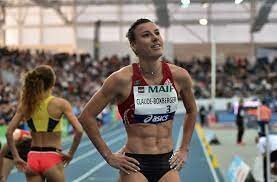
Claude-Boxberger tested positive for EPO during an out-of-competition test carried out on Sept. 28, 2019, before the 2019 World Athletics Championships in Doha, Qatar in October. Afterward, she revealed that she was romantically involved with the French team doctor, Jean-Michel Serra.
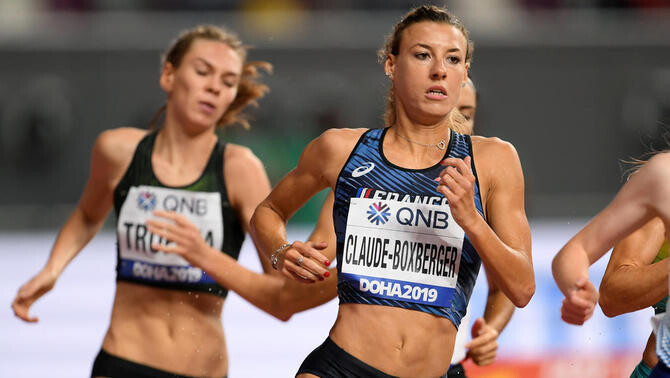
Claude-Boxberger is a five-time national champion in the 1,500m and 3,000m steeplechase and is the fourth fastest French steeplechaser in history, with a personal best of 9:35.56. She represented France at several European Championships and the 2019 World Championships, where she was eliminated in the heats of the 3,000m steeplechase.
She was suspended for two years in March 2021, retroactive to her positive test in 2019; she was allowed to compete until the latest decision. The current ban will run until April 2024, which means she will likely be able to qualify for the 2024 Olympic Games to be held in Paris.
(04/28/2022) ⚡AMPby Marley Dickinson
Sir Mo Farah will be targeting his eight victory at the Vitality London 10,000 as his first race back since picking up an injury last year
More than 16,500 people will take part in the Vitality London 10,000 on Bank Holiday Monday May 2, headed by elite races that will see Sir Mo Farah returning to racing for the first time since June 2021 and the event debut of in-form Eilish McColgan, who could threaten Paula Radcliffe’s 19-year-old British and European 10K record.
Sir Mo is the most successful athlete in the history of the Vitality London 10,000, with seven victories to his name, and the multiple world and Olympic champion will use this year’s event as his first race back since picking up an injury last year while trying to qualify for the Tokyo Olympic Games.
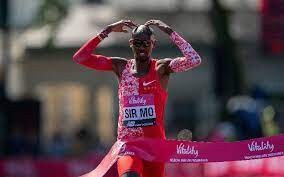
The 39-year-old will face his long-time friend and adversary Chris Thompson, as well as Phil Sesemann, the first British finisher at last year’s London Marathon. Andy Butchart, however, has had to withdraw from the race.
McColgan comes into the elite women’s race in red-hot form having smashed the British 5K record in Malaga, Spain, last Sunday (April 24). The Scottish star is already the owner of the women’s only British 10K record (30:52), which she set at the Great Manchester Run last year.
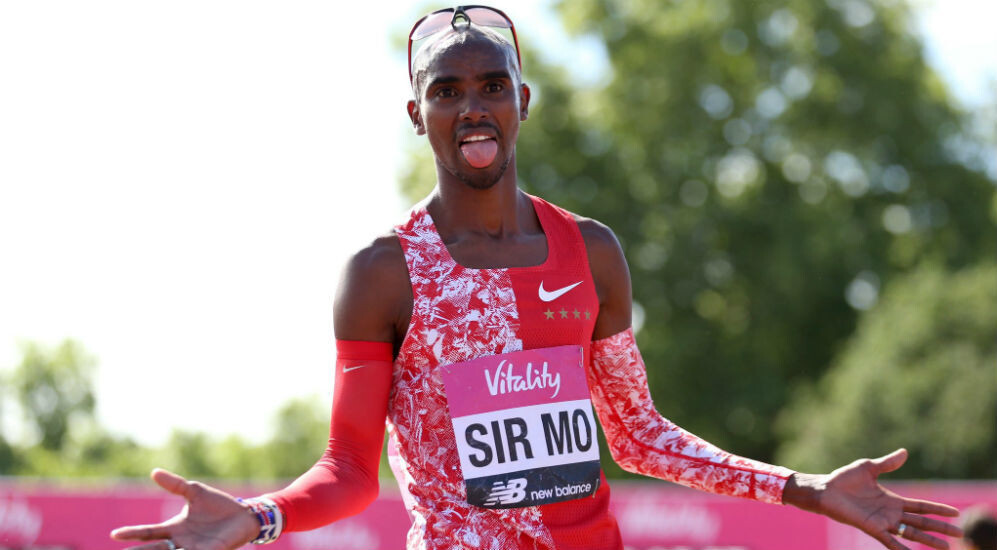
Only two British women have ever run faster over 10K than McColgan: Radcliffe, whose European and British record stands at 30:21, and McColgan’s mum, Liz Nuttall (formerly McColgan) who is the Scottish record holder with her personal best of 30:39 set in Orlando in 1989.
McColgan said: “I couldn’t have asked for a better start to my 2022 season than to set a new British 5K record in my first race. Now I’m really looking forward to coming back to the UK and running the Vitality London 10,000 and seeing what shape I am in over 10K.”
Joining McColgan in the elite women’s field is two-time Vitality London 10,000 champion Steph Twell and Jess Piasecki, the sixth fastest British woman of all time over 10K. Charlotte Purdue, who was ninth at The Boston Marathon earlier this month and was due to race, has had to withdraw due to illness.
A record 18 wheelchair athletes will take part this year, with the field led by Paralympic stars David Weir and Shelly Woods.
There will be 10 start waves at the Vitality London 10,000, including a Run for Ukraine wave, where the 2,000 entrants are encouraged to wearing blue and yellow and fundraise for the Ukraine relief effort. One hundred per cent of the discounted £15 entry fees for this wave will be donated by organisers London Marathon Events to the Disasters Emergency Committee (DEC) Ukraine Humanitarian Appeal.
Anthony Seddon, 40, from Brighton, is one of those who will be joining the Run for Ukraine wave, as part of a 1,569-mile fundraising challenge to raise money for a cause that means so much to him.
Anthony’s wife Anna is Ukrainian and he is running 10 kilometres for as long as it takes to complete 1,569 miles – the distance between the football grounds of Brighton and Hove Albion, the club he supports, and Anna’s favourite football team in her home town of Dnipro.
Anna’s mother has fled Ukraine to live with the couple in Brighton, but the remainder of her family remain in the war-torn country.
Anthony said: “Anna has many friends and family still in Dnipro, some unable to leave but most wanting to stay in their homes.
I met Anna while watching England play football at the Euro 2012 tournament. As it was football that brought us together, I have committed to run those 1,569 miles, the distance from Brighton’s Amex Stadium to the Dnipro Arena by way of running events like the Vitality London 10,000 and other half and full marathons until I complete the distance.
“Between our fundraising page and money donated by friends and family beforehand we have managed to send more than £16,000 of aid so far and we hope we can send so much more. Every penny we raise is spent solely on medical aid.”
After a successful first edition in 2019, the Celebrate You wave returns to this year’s Vitality London 10,000 to promote the mental health benefits that regular exercise delivers.
The wave of 1,000 participants will be led by Celebrate You co-founder, journalist and author Bryony Gordon who will be running her 10th consecutive 10K as part of her ‘10 days of 10Ks’ challenge to promote the importance of activity for mental health and the peer support group Mental Health Mates that she founded in 2016.
Also running in the Celebrate You wave are theatre star Carrie Hope Fletcher, body positivity influencers and models Shareefa J and Jade Seabrook and Helen Thorn, one half of the comedy duo Scummy Mummies.
The Vitality Westminster Mile, staged in partnership with Westminster City Council, takes place on Sunday 1 May, with thousands of participants taking on a series of mile events throughout the day from 10:00 to 14:30.
Among the 15 waves on the day are the #RunforRuth wave for the Ruth Strauss Foundation, led by Sir Andrew Strauss, and a Special Olympics GB Unified Mile. There are also nine family waves, a parkrun wave and a junior wheelchair athletes wave. Parents or guardians have been able to register children under-12 for free.
The free Vitality Wellness Festival takes place in Green Park on both days, featuring exciting free activities for children on the Sunday and the chance to run on the Vitality Tumbleator, a giant treadmill, on both days.
The events share one of the most stunning Start and Finish Lines in sport, with The Mall providing the setting for an iconic start and Buckingham Palace as the backdrop for a stunning finish.
The Vitality London 10,000 will be broadcast live on BBC Sport Online, iPlayer and Red Button, as well as the Vitality London 10,000 Facebook page, from 09:45 to 11:45.
(04/28/2022) ⚡AMPVitality London 10,000
The Vitality London 10,000 takes you past many landmark sites, including the London Eye, Buckingham Palace and the Bank of England – so you even get to do a bit of sightseeing along the way! You will run alongside elite runners and have coverage from the BBC, making this 10km one of the highest in profile of its kind....
more...What not to do after a long run
Sometimes, you actually have to do the wrong things to know what doesn’t work for you. To confirm it’s not just a thing people say to not do, but a thing people say for a reason. For me as a runner, this means knowing what works (and what doesn’t) the afternoon after a marathon training long run.
Sadly, this post could alternatively be called: ‘A list of things I’ve done after long runs and later come to regret.’
What Not To Do After A Marathon Training Long Run

I do more of these things than I should admit.
Consider this post a case of do as I say, not as I do.
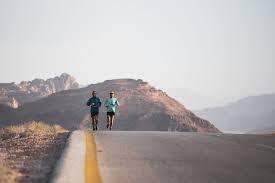
Be A Couch Potato
It will be tempting to do nothing after a long run. After all, you’ll be tired and you’ve earned some rest, right?
Not so fast!
If you sit on the couch and don’t move, your muscles will tighten up.
You will really regret it when you have to move again.
After your run
Stretch and cool down properly.
Keep moving through the day so your muscles stay loose.
Foam roll or use The Stick later in the afternoon.
Take a walk around the neighborhood or an easy bike ride the afternoon after a long run. Nothing too strenuous, but keep your body and your muscles moving, at least a little.
Not Refuel or Rehydrate
I’m often not very hungry when I finish running. By the time I finish stretching and cooling-down, I’ll often forget to eat.
This is bad.
After your run, your body will be depleted. Even if you’ve fueled well on the run, your body’s stores of carbs, glycogen, protein, and water will all be running low.
In order to rebuild the muscles that you’ve broken down on your run, refuel.
After your run
Eat something with a carb to protein ratio of 3:1 (think peanut butter toast) within 20 minutes of finishing.
Eat a full meal within 3-4 hours.
Drink water all day.
Stay in Running Clothes
My apologies for TMI, but I am a super sweaty runner. I could run 100 yards in near freezing temps and I’d likely break a sweat. Can you imagine what I look like after a long run?
I’m often far from home for my long runs, or running with a group where we may socialize or brunch after we’re done running.
All that to say, I often find myself staying in my running clothes way longer than I should.
It can be very bad to stay in sweaty running clothes when you’re done running. It creates all kinds of bacteria and fungus issues.
Staying in damp clothes can also make body temperature issues worse. After a long run, how can I be freezing and roasting at the same time? I have no idea, but staying in damp running clothes doesn’t help.
After your run
If you are at home, get out of running clothes and shower ASAP.
If you are out and about, do a wet wipe shower and change into dry clothes in your car or a nearby bathroom
Ignoring Rest And Recovery
This one has never been a problem for me personally, but I know some people struggle with it: after a marathon training long run, you need to let your body recover.
The day after a long run should be a rest day or an easy run/active recovery day. Don’t do an intense or difficult workout the day after a long run.
Leave the track work and speed work for a few days after a long run.
Rocket Science Or Brain Surgery
OK, not those things exactly, but anything requiring brain power.
Runner’s Brain is a very real thing. The glycogen that fuels your body also fuels your brain. As you run (and your glycogen is depleted) your brain may get a little fuzzy.
I can usually feel myself starting to get stupider around mile 14.
After your run, your brain may stay a little fuzzy while your body refuels.
After your run
Don’t make any important decision, or anything requiring major brainpower, the afternoon after a long run.
Refuel (but you are already doing that from above, right?)
Be easy on yourself and arrange your day (and your to-do list) accordingly.
Have That Important Conversation
Related to not doing brain surgery, don’t do anything that requires (or potentially requires) emotional control or restraint.
Again, you’ll be emotionally and physically exhausted. When that happens, it can be hard to control your emotions.
You don’t want to have to apologize for something you said to your spouse while exhausted after a long run.
After your run
Make sure your family/loved ones know what to expect.
Try to notice if or when you are losing your patience or temper. This is good advice for always, but especially on long run days, when you’ll have a (much?) shorter trigger.
Don’t Give In To Cravings
Marathon Training long run days can be a dangerous one-two punch:
You’ll be tired, so your brain may crave fatty, high-calorie foods (even more so than usual); and
You’ll have done a really hard workout, so you may be more inclined to treat yourself.
There is even a name for this: hedonic compensation. Rewarding yourself for doing something virtuous.
I can’t in good conscience advise you to not treat yourself.
I know the ‘right’ fitness advice is to not use food as a reward for fitness accomplishments, but I know, after years of trial and error, it is one of the few rewards that consistently works for me, so I do it.
Rare is my long run that isn’t rewarded by pizza, a can of coke, and/or a cupcake.
That’s right, I said ‘and.’
I’m not ashamed.
After your run
Don’t use food as a reward for fitness accomplishments (sorry, I still had to include it. It’s good advice, even if I don’t follow it myself).
If you are going to reward yourself with food, plan it out in advance. Don’t buy a dozen cupcakes and tell yourself you’ll only have one after the run. One will lead to two, which will lead to three (not that I know that from first-hand experience or anything).
(04/27/2022) ⚡AMPby Sara Kurth
Reigning world champions Muktar Edris and Hellen Obiri headline World 10K Bengaluru 2022
After a three-year hiatus enforced by the pandemic, with the last edition of the World Athletics Elite Label Race taking place in 2019, race promoters Procam International have pulled out the stops to bring the very best athletes in the world to India’s technology capital.
Edris, from Ethiopia, is the two-time defending world champion over 5000m on the track and will be using the Bengaluru race as part of his preparations to become just the second man to win three consecutive titles in the event at this summer’s World Athletics Championships in Eugene, USA.
He is no stranger to India having made his half marathon debut in the 2020 Delhi Half Marathon, where he finished fourth in the stunning time of 59:04.
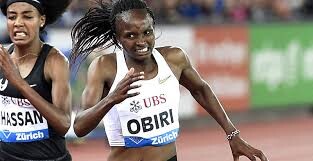
His arrival in Bengaluru fulfils a promise he made after that run. “And when I come back to India, I will certainly be aiming to win and make a bigger impression,” said Edris in November 2020.
Edris will have some strong competition if he is to fulfil his ambition.
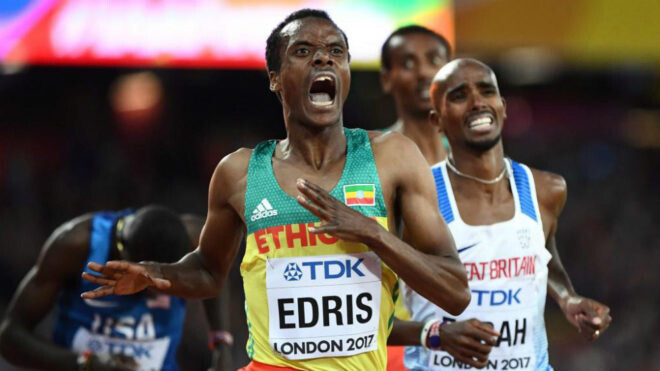
Also announced for this year’s TCS World 10K is the former holder of the world half marathon record Kibiwott Kandie, from Kenya, who has a 10km personal best of 26;51 from last year, almost a minute faster than the course record in Bengaluru.
Ethiopia’s Tadese Worku, who is still only 20, is another man with a 10km best inside 27 minutes, having run 26:56 last September just a few months after he won the world U20 3000m title on the track.
In the women’s race, Kenya’s Obiri will be making her Indian racing debut next month.
Like Edris, she has also won the 5000m at the last two editions of the World Athletics Championships and took silver medals over the same distance at the last two Olympic Games in Rio and Tokyo.
Into the bargain, Obiri can also claim two other world titles to her name after having won the world indoor 3000m crown back in 2012 and, more recently, she was the 2019 world cross country champion.
Both Edris and Obiri will have the TCS World 10K course records as their targets on 15th May.
Kenya’s Geoffrey Kamworor ran the men’s record of 27:44 in 2014 while the late Agnes Tirop, also from Kenya, set the women’s course record of 31:19 in 2018. Tirop also won the TCS World 10K in 2019.
Joyce Tele comes to Bengaluru having won the Agnes Tirop Cross Country Classic in February – a memorial race in her honour after her tragic death in October 2021 shocked the world – and has produced some outstanding half marathon times since the start of 2021. Tele ran a personal best of 1:05:50 to finish second in the Berlin Half Marathon earlier this month.
A third Kenyan to watch out for in the women’s race will be the 2017 world cross country champion Irene Cheptai, who also triumphed at the 2017 TCS World 10K a few months later.
Cheptai has been in good form recently with two strong second-place finishes in the prestigious New York and Prague half marathons in the last six weeks.
The TCS World 10K Bengaluru 2022 has a total prize fund of US$210,000, with the men’s and women’s winners taking home US$26,000. “It’s a true pleasure to be able to bring some of the world’s leading distance running stars to Bengaluru. The pandemic has meant this race has not happened since 2019 but we were always determined that, when conditions allowed, we would once again stage world-class races for elite runners and amateurs,” commented Vivek Singh, joint managing director of race promoters Procam International.
“Our commitment to getting India running again and helping people pursue a healthy lifestyle has never wavered and now we are back with a bang in Bengaluru,” he added.
In addition to the TCS World 10K for elite runners, there is an Open 10K, the Majja Run (5km) the Senior Citizens’ Race and the Champions with Disability Race (both 4.2km).
The Open 10K and the Majja Run can also be participated in virtual run. See the event website https://tcsworld10k.procam.in/ for details.
(04/27/2022) ⚡AMPTCS WORLD 10K BENGALURU
The TCS World 10k Bengaluru has always excelled in ways beyond running. It has opened new doors for people to reach out to the less privileged of the society and encourages them to do their bit. The TCS World 10K event is the world’s richest 10 Km run and has seen participation from top elite athletes in the world. ...
more...Five tips for muddy trails, as the snow melts and the trails thaw out, here are some ways to make muddy running fun
As the snow melts and the trails thaw out, sunshine, cool temps, birds twittering in the trees–what could be better than spring trail running?
Spring brings muddy, wet trails, with puddles and water flowing on the downhills. It can slow you down, affect your footing, comfort and (obviously) cleanliness. Mud’s a part of trail running, though, and with a few tips, you can make it fun.
1.- Choose the right shoes

For muddy runs, use your shoes with the deepest lugs on the outsole. Lace up tight, in case you end up fighting the suction power of deep mud. (And by the way, don’t wear white socks.)
2.- Shorten your stride
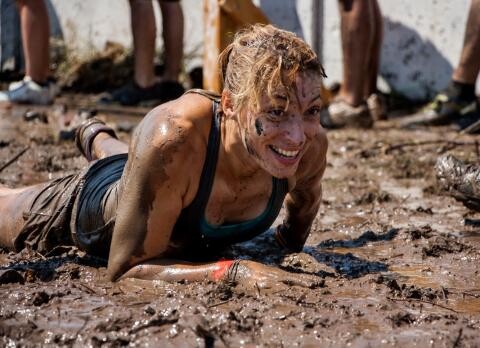
Take short, quick steps to prevent slipping. Pay attention to your shoulders, don’t slump or arch your back, and relax your body. All of this will help you be more aware of your surroundings. It will also be easier to recover your balance if you do slip, in which case you should slide with it until you slow down before correcting your direction of travel.
3.- Read the ground ahead
Trails on south-facing hills or in the sun dry out more quickly. The same goes for higher, more exposed trails, or rocky ground. Your favourite midsummer trail may be a mud pit. Once out on the trail, keep your eye on the terrain ahead and anticipate how it will affect your footing.
4.- Embrace the mud
Well, not literally, but don’t avoid every puddle or a muddy section, which widens trails–a significant problem in trail maintenance everywhere. You won’t be setting any PBs, so just slow down and enjoy the kid-like fun of splashing in puddles.
5.- Après-mud basics
You will be quite, well, muddy, so bring a towel to wipe off before you get in the car, fresh socks and a place where you can put your muddy shoes. Dirty shoes wear out faster than clean ones, so hose down your shoes when you get home, or clean them in a bucket before you use them again.
(04/27/2022) ⚡AMPby David Smart
Boston Marathon's unique running history honored with World Athletics Heritage Plaque
The Boston Athletic Association (B.A.A.), which organizes the B.A.A. Boston Marathon (1897), the world’s oldest annual marathon, officially unveiled the World Athletics Heritage Plaque awarded to the race in 2019.
The World Athletics Heritage Plaque is a location-based recognition, awarded for 'an outstanding contribution to the worldwide history and development of the sport of track and field athletics and of out-of-stadia athletics disciplines such as cross country, mountain, road, trail and ultra-running, and race walking'.
The official presentation of the plaque by World Athletics Heritage, which had been on hold due to the pandemic, took place in the race museum at B.A.A.’s HQ on Dartmouth Street, Boston, Massachusetts, where the plaque will be permanently displayed, and is adjacent to the finish line of the race.

The plaque was unveiled by Thomas S. Grilk, B.A.A. President & Chief Executive Officer, and World Athletics Heritage Director Chris Turner, in the company of Jack Fleming, B.A.A. Chief Operating Officer, and fellow colleagues from the B.A.A. organization.
The tough one

Boston’s notoriously demanding course, with its final incline ‘Heartbreak Hill’ 20 miles into the race that has gone down in marathon folklore, has floored many a world beater.
Amby Burfoot, the 1968 Boston Marathon champion, confirmed on Boston.com that the challenge is also “the downhill from the top of Heartbreak Hill to Cleveland Circle. This is called ‘Cemetery Mile’ for two good reasons: Evergreen Cemetery to the runners’ right, and the way the steep downhill deadens the legs, specifically the quadriceps muscles.”
Notably, despite the stature of the race, only five Olympic champions have ever managed to win in Boston.
Four women, firstly two-time Boston victor Joan Benoit (1979, 1983), who won the 1984 Olympic title in Los Angeles, and two three-time winners in Ethiopia's Fatuma Roba (1997, 1998, 1999), the Atlanta 1996 champion; Portugal's Rosa Mota (1987, 1988, 1990), who took the Olympic title in Seoul in 1988; and Kenya's 2022 Boston winner Peres Jepchirchir, who was the Olympic victor in Tokyo.
The sole male runner so far to accomplish the rare double is Italian Gelindo Bordin (1990), the Seoul 1988 Olympic champion, who took first place in Boston two years later.
The ‘American Marathon’
The racing singlets, running shoes, medals and trophies and hundreds of pieces of historic memorabilia in the B.A.A.'s museum pay tribute to the city’s famous marathon, which was inspired by and founded a year after the running of the inaugural Olympic marathon at the 1896 Games in Athens.
The B.A.A. itself had been established 10 years before. It was one of the association’s members, John Graham, who, as USA team manager at those 1896 Games witnessed the marathon race, proposed creating a similar long distance race in Boston.
The race, originally called the American Marathon, has an annual Monday date which makes it unique among elite international marathons. The Boston Marathon has always been held on the holiday commemorating “Patriots’ Day”, which since 1969 has become officially recognized as the third Monday in April.
The B.A.A., which has a mission to promote a healthy lifestyle, especially through running, has its HQ and museum virtually located at the finish line of the marathon.
Running treasure trove
The plaque, which is mounted on a wall in its own showcase in the museum, has joined a verifiable treasure trove of distance running artefacts associated with the race’s storied history.
The B.A.A.’s collection of memorabilia and its archive is always growing. In fact, they recently received a gift of a rare finisher medallion from the 1903 Boston Marathon. The competition bib number of last week’s Boston winner Jepchirchir is the very latest acquisition.
The perpetual Champions’ Trophy, which the winners receive immediately following the Boston Marathon, and the second place award (mounted plaque) from the first B.A.A. Boston Marathon in 1897 are standout exhibits.
Poignantly, the 2013 champion's medallion won by men’s victor Lelisa Desisa of Ethiopia was gifted back to the City of Boston in the summer of 2013, shortly after the notorious bombings which occurred on marathon day that year.
The collection, which contains hundreds of artefacts and thousands of images, has recently been renamed as the Gloria G. Ratti Collection in posthumous recognition of their long-time archivist and historian. Ratti was a B.A.A. Vice President on the Board of Governors.
(04/27/2022) ⚡AMPby World Athletics
Boston Marathon
Among the nation’s oldest athletic clubs, the B.A.A. was established in 1887, and, in 1896, more than half of the U.S. Olympic Team at the first modern games was composed of B.A.A. club members. The Olympic Games provided the inspiration for the first Boston Marathon, which culminated the B.A.A. Games on April 19, 1897. John J. McDermott emerged from a...
more...How to talk running with non-runners, runners are a unique breed, and sometimes ordinary people just don't understand
We’ve all been at a party or family gathering where someone says “oh so and so said you’re a runner […] do you do marathons?” Runners are a unique breed, and ordinary people don’t understand why you are putting in eight hours of run-specific training weekly for a 5K fun run three months away.
Whenever I tell someone I run, their first question is “oh, how many marathons have you done?” And then I disappoint them with the number “zero” and reply, “I run track.” They instantly feel the need to tell me all about how they came fifth in the 200m in Grade 5.
People who don’t run (or follow the sport) don’t understand, nor generally have any interest. It would be like someone with a passion for stamp collecting trying to talk to me about perforations and cancellations. It could be the bee’s knees for them, but outside of the “what’s your favorite stamp?” question, I am stumped.

Next time you are around a group of non-runners, here are a few conversation tips to keep them engaged.
1. Dumb everything down to 5K references

Most people have either walked or run a 5K. It’s a distance people can understand and imagine running (even if they haven’t). Questions like: “Have you ever done any races?” are easy conversation starters when chatting with people who you’re not sure are runners.
2. Avoid chatting about your mileage
Regular people don’t understand (or will think you are a lunatic) if you start chatting about how you run 10K every day, so avoid chatting about mileage. The conversation will go nowhere, and will be mystified as to why you torture yourself by running 70+ kilometers a week. They’re likely to respond, “I don’t even drive 80 km a week in my car.” Fair enough.
3. Weather is a hot topic
Even if they don’t run, bringing up the subject of “trying to exercise in bad weather” is something everyone can relate to. (Running in the snow isn’t as bad as trying to play some other sports in the snow. Like golf.)
4. Compare your training to common relatable things
No one will understand your fartlek runs, but you can help them understand by comparing them to something relatable, like learning a new language or playing an instrument. “Fartlek training is like rapid-fire on Duolingo when learning Italian, then taking a short break and repeating.”
5. Be sympathetic and positive
If they told you they ran 5K once, don’t trash their time or ask them why they quit running. Be sympathetic. Ask them what they enjoyed about training. Positivity can go a long way toward inspiring a non-runner to get back out there or to chase another goal.
(04/26/2022) ⚡AMPby Marley Dickinson
Kenyan Maurine Chepkemoi runs Enschede Marathon record
The 75th anniversary of the oldest marathon in the Netherlands – the Enschede Marathon – was marked with a women’s race record of 2:21:10 by Maurine Chepkemoi, while her fellow Kenyan Julius Tuwei won the men’s race in 2:07:43.
Chepkemoi triumphed in the World Athletics Elite Label road race ahead of her compatriot Philomena Cheyech (2:23:53) and Ethiopia’s Bezabeh Alemtsehay (2:24:42), while Tuwei gained his title ahead of Kenya’s Enock Onchari (2:07:52) and Ethiopia’s Deme Tadu Abate (2:07:59).
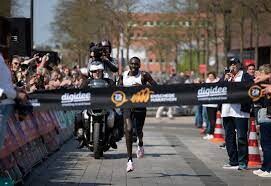
After passing half way in 1:10:06, Chepkemoi broke away with Cheyech and they clocked 1:39:19 at the 30km point. After passing 35km in 1:56:01, Chepkemoi began to edge ahead and built a lead of more than a minute over the next 5km, clocking 2:13:24 at 40km. She went on to win in 2:21:10, claiming victory by more than two and a half minutes.
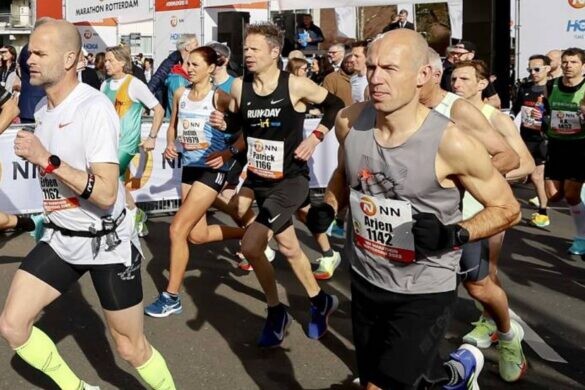
In the men’s race, Tuwei was joined by Onchari and Abate in a lead group that passed half way in 1:03:23. That trio remained together through 35km in 1:45:39 and 40km in 2:01:08 before Tuwei kicked to victory, winning by nine seconds in 2:07:43.
(04/26/2022) ⚡AMPby World Athletics
Enschede Marathon
Experience the oldest marathon in Western Europe! We write about August 1946. The European Athletics Championships were held in Olso and the I.A.A.F. conference had taken place. During that conference, an agreement was made to hold an athletics competition between the Netherlands and Czechoslovakia in Enschede in July 1947. Saturday July 12, 1947 was the big day: 51 participants took...
more...Munyao and Omare triumph at Gifu Half Marathon
Kenya’s Alexander Mutiso Munyao set a men’s course record and Dolphine Nyaboke Omare claimed a clear women’s race win at the Gifu Half Marathon, a World Athletics Elite Label road race, in Japan on Sunday (24).
In a close finish, Munyao clocked 59:56 to win by just seconds ahead of his compatriot Benard Kibet (59:57) and Emmanuel Moi Maru (59:58).
Omare, meanwhile, ran 1:08:13 to win by 47 seconds ahead of Australia’s Sinead Diver, whose 1:09:00 is a world W45 record. Japan’s Haruka Yamaguchi was third in 1:09:50.
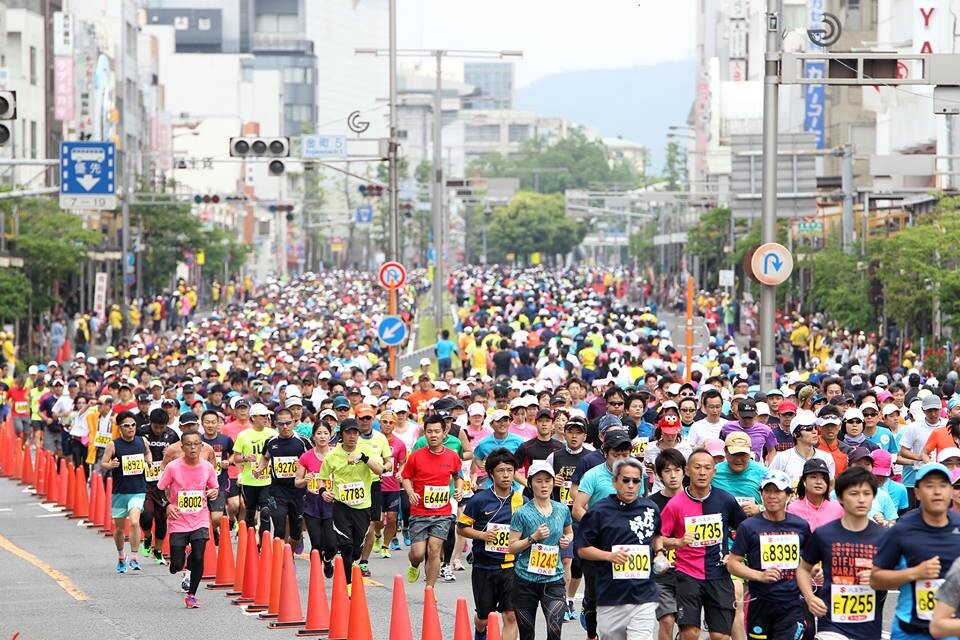
In the men’s race, five athletes – Munyao, Kibet, Maru, Joseph Karanja and Charles Karanja Kamau – remained together through 15km, which was passed in 42:52. By 20km, reached in 56:51, it was down to just Munyao, Kibet and Maru.
From there, Munyao kicked to victory to lead his compatriots under the course record of 1:00:02 set by Bedan Karoki in 2014 and the one-hour mark.
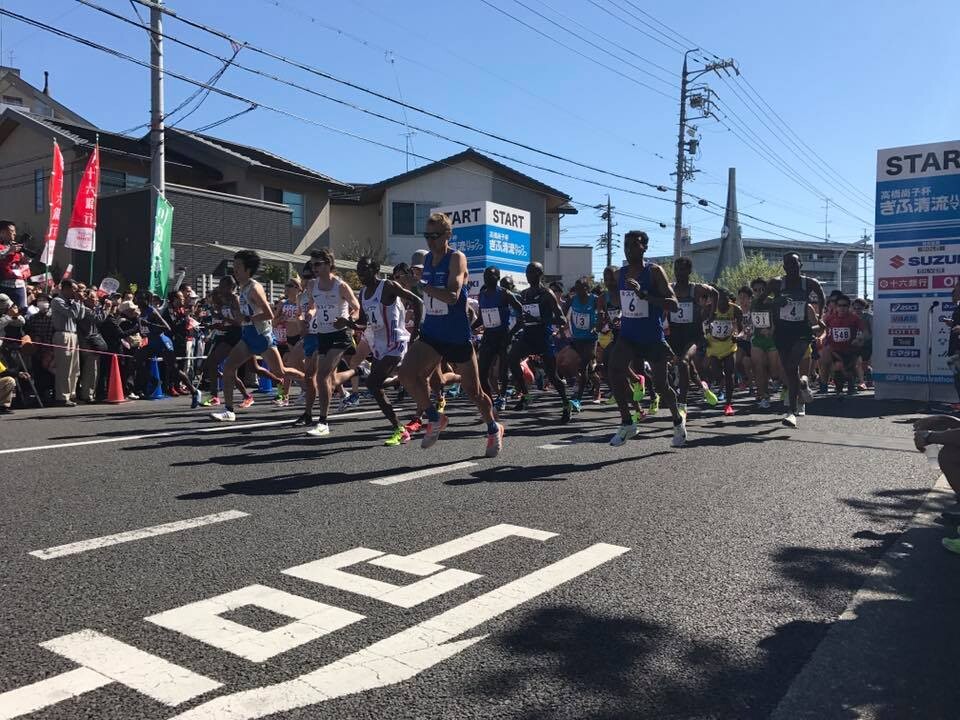
Karanja was fourth in 1:00:12 and Kamau fifth, 10 seconds behind him.
Omare had built a 31-second lead by 10km in the women’s race, passed in 32:20. Diver was just ahead of the chase group by that point, with her compatriot Eloise Wellings four seconds back from her.
Omare reached 15km in 48:46 and 20km in 1:04:40 before crossing the finish in 1:08:13. Behind Diver and Yamaguchi, Wellings was fourth in 1:10:42, one second ahead of Japan’s Reia Iwade.
(04/26/2022) ⚡AMPby World Athletics
Gifu Half Marathon
The Gifu Seiryu Half Marathon is an annual half marathon road running competition held in Gifu, Japan. First held in 2011, the race is also called the Naoko Takahashi Cup, named after Naoko Takashi, the retired local runner who won the marathon at the 2000 Sidney Olympics and broke the marathon world record in 2001, becoming the first woman to...
more...Experts nutrition tips for runners
If you are a runner, food acts as fuel and it plays a critical role in determining your performance and energy levels. Whether you prefer short jogging distances or you are a marathon runner, you must know the right type of food to consume, and when to eat it, in order to improve your overall performance. Check out these expert nutrition tips for avid runners.
Understand Nutrition Basics

When you run, your body will burn more calories, and you will need to replace them. If you are an avid runner, make sure your diet has these three macronutrients; – carbohydrates, fat, and protein. Carbohydrates are the primary source of energy in the body, and they are broken down into sugar glucose.

Fat stored in your body provides fuel when you run long distances. Protein helps your body rebuild muscles, prevents injury, repairs tissues, and facilitates the production of red blood cells responsible for carrying oxygen. You can consult your nutritionist about the specific foods items to include in your diet to ensure a constant supply of these nutrients.
Use Supplements
In addition to a balanced diet, you can also include supplements to improve your performance. Experienced nutritionists at https://kimuraathletic.com/ explain that among all supplements available, creatine is the most popular and science-backed nutrient that can play a pivotal role in helping you achieve your fitness and athletic goals. This supplement has no match, and it is safe to use. However, before you start looking into taking supplements, ensure you consult your physician.
Micronutrients
You need a diet rich in micronutrients since exercises like running are strenuous to the body. Some of the critical nutrients to include in your diet are as follows.
Calcium – is responsible for muscle contraction and bone health. It is mainly obtained from leafy greens and dairy products.
Vitamin D – is ideal for bone health, and it comes from the sun and other sources.
Iron – is vital for the development of red blood cells.
Antioxidants – reduce cell damage and come from foods like fruits, nuts, vegetables, and seeds.
Maintaining a diet consisting of whole foods will help you get sufficient micronutrients.
Timing
The timing of your diet depends on factors like the distance you want to cover, body tolerance, goals, and experience. If you intend to run for fewer than 60 minutes, you can exercise without eating or you may need a carbohydrate-rich snack. For a session that is more than 60 minutes, you will need a small meal rich in carbohydrates.
For marathon distances, you will need a strong meal rich in carbohydrates. You can include yams, potatoes, multigrain bread, whole-wheat pasta, and brown rice. During your run, you can consume micronutrients rich in carbohydrates. After the race, you can prepare a meal consisting of basic nutrients.
If you are an ardent runner, you must know the right nutrition to include in your diet to improve your overall performance. Food acts as fuel and it gives the body energy that will sustain you when you run long distances. Your basic diet should include carbohydrates, protein, fat, as well as micronutrients. You should also be cognizant of the most appropriate times to consume the different types of food before hitting the road.
(04/26/2022) ⚡AMPby Colorado Runner
The Best Stretches Before and After You Run a Race
Stretching before running is almost a universally known rule, probably because it’s drilled into us at school from a young age. We are taught that if you don’t stretch you’ll probably pull a muscle and end up injured.
We completely agree that stretching is important, but you might be surprised to know that the type of stretching taught in schools is known as static stretching, and can actually hinder your running performance.
Because of this some people question whether or not stretching is required before a race, and it’s actually a commonly debated topic.

For one perspective, check out this video by Expert Village for their view on why and how to stretch before and after a run.
So what’s this dynamic versus static stretching all about?

Basically, the stretching technique you engage will determine if your muscles become dynamic and activated (ready for a run), or static and relaxed (when you want to cool down).
The last thing that you want to do before running, or any form of strenuous exercise, is to tell your muscles to relax. You want your muscles to become activated, warmed up, and prepped for activity.
A pre-running Static Stretching Study carried out by researchers in Brazil and summarized by Runner’s World concluded that “static stretching results in “a reduced capacity of the skeletal muscle to produce explosive force” which translates into a slower starting speed during the race.
Basically, runners that stretched using static methods beforehand performed worse in the beginning of the run in comparison to those who used dynamic stretching techniques.
So now we know why dynamic stretching is better for you, but what does it involve?
Here are the main points from Expert Village.
How to Stretch BEFORE a Run
Dynamic stretches basically involve moving through a full range of motion but in an active movement.
The first example provided by Expert Village is the Straight Leg March, where you move through a full leg motion kicking you toes up towards the ceiling. Your leg during this kick is to be as straight as it can.
This will elongate the back of the thigh muscle, stretching it but keeping it activated.
The other major muscle in your thigh to be targeted is the ones at the front known as the quadriceps (or the quads).
This can be done by doing a Walking Quad Stretch, which is lifting your foot towards your buttocks while keeping your knees side by side.
You alternate legs by taking releasing your foot, taking a step forward (being active) and then raising the other leg.
Living Strong recommends stretching all the major muscle groups that’s are used in running, so this means the quadriceps, hamstrings, gluteals, and hip flexors while incorporating other movements that warm up the abdominal, back and calf muscles.
How to Stretch AFTER a Run
Stretching after a run is important, particularly if you feel any tightness or pain as the movements will help to relax your tired muscles.
This is where static stretching comes in, whereby you hold the stretch for a longer period of time and often repeat the stretch.
Static stretching is key in maintaining the flexibility of the muscle and releasing the tightness often experienced by pounding the pavement.
Exercises recommended by Expert Village include the Straight Leg Hamstring Stretch, where you sit on the floor with one leg elongate, using your hips and not allowing your back to curve, you then bend your chest over your leg to stretch your hamstring.
You’ll probably see a lot of people doing these stretches before a big race, but as we mentioned previously, that’s big no no.
For relaxing your quad muscles, try lying on the floor on your side, then lifting your foot to your buttocks whilst keeping your knees aligned. This is similar to the Walking Quad Stretch, just on the floor, and the stretch is held for a period of time.
(04/25/2022) ⚡AMPJordon Trof defens his title at Big Sur Marathon
Six days after running a career-best for a marathon in Boston, 21 days after surviving a 150-mile ultra-marathon in the Sahara Desert, Jordan Tropf treated himself to a trip to the California coast.
A mini-vacation with his wife, though, would not be complete without a little competition – or in this case, returning to defend his Big Sur International Marathon title.
“I’m just happy my schedule allowed me to get back out here and feel the energy of this crowd,” said Tropf, an orthopedic surgeon at the Walter Reed National Military Medical Center just outside Washington DC.
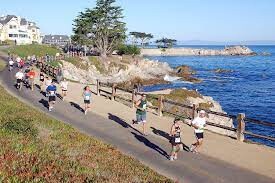
Still, on an adrenaline rush from clocking a career-best last Monday in Boston, Tropf went out and fed off the crowd down the stretch Sunday to comfortably win the 26-mile, 385-yard Big Sur Marathon in two hours, 26 minutes and 51 seconds.
The time was a record for an individual who ran both Boston and Big Sur one week apart. Tropf ran the Boston Marathon in 2:24.42. The overall meet record for Big Sur was set in 1987 by Brad Hawthorne, who ran 2:16:39.

“I’ll take it,” said the 30-year-old Tropf, who lives in Silver Spring, Maryland and is taking his wife to Yosemite Monday for hiking and sightseeing. “That is so cool.”
Anne Flower made her Big Sur debut memorable, jumping out in front early in capturing the women’s division in 2:49.49 – the only woman to break three hours.
Tropf is building a resume worth nothing, defending his title from 2019 – the last time the Big Sur Marathon was held before the pandemic shut it down the past two years.
Tropf has challenged himself over the past year in his training with 3:30 a.m. runs while becoming a surgeon.
Last year he entered the Guinness Book of World Records after running marathons in Baltimore, Chicago and Boston in three straight days, averaging 2:30 per marathon.
“My fitness is off the charts,” Tropf said. “But with all the miles I’ve logged of late, I was able to keep it together over the final 6 miles.”
The Naval Academy graduate Tropf asserted himself from the start, taking the lead early.
“I tried to keep him close,” said five-time winner Adam Roach of Pacific Grove, who took third. “He was going too fast for my pace in the first mile. I hoped I might be able to reel him in.”
Instead, Tropf set a blistering pace that he maintained over the hilly and at times windy course, averaging 5:36 per mile.
“I just went out early and took the lead,” Tropf said. “I felt good. With how my spring is going, all marathons are different.”
This was Tropf’s seventh marathon of the year, along with his 150-mile, six-stage run through the African desert four weeks ago.
(04/25/2022) ⚡AMPBig Sur Marathon
The Big Sur Marathon follows the most beautiful coastline in the world and, for runners, one of the most challenging. The athletes who participate may draw inspiration from the spectacular views, but it takes major discipline to conquer the hills of Highway One on the way to the finish line. Named "Best Marathon in North America" by The Ultimate Guide...
more...Fast times at the Meta Time Trials in Malaga
Eilish McColgan has set a UK 5km record of 14:45 at the ASICS META:TIME:TRIALS in Malaga.
She bettered her own 5km mark of 14:48 from the UAE back in February and Paula Radcliffe’s 14:51, set at Hyde Park in 2003, while McColgan is also close behind Sifan Hassan’s European 5km record of 14:44.
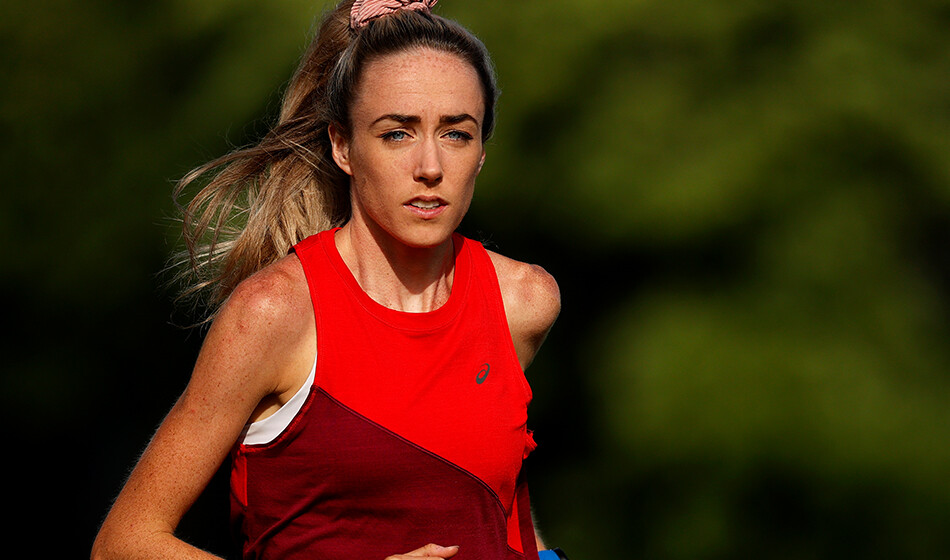
Fast times were the target and many were achieved at Sunday's META: TIME : TRIALS by ASICS, a World Athletics Label event in Malaga, with Ethiopia’s Tsegay Kidanu quickest in the men’s 10km with 27:14 and Britain’s Eilish McColgan among the national record-breakers in the 5km.
The event was specially organised to showcase the new METASPEED™+ Series footwear and McColgan, the 2018 European 5000m silver medallist, was among the athletes to go quicker than ever before. She led the women’s 5km in 14:45 to improve the official British record and finish ahead of Kenya’s Naomi Chepngeno with 14:57.
In the men’s race, Olympic finalist Mohamed Katir ran 13:20 to miss Jimmy Gressier’s European record by just two seconds. Felix Bour of France was second in 13:41.
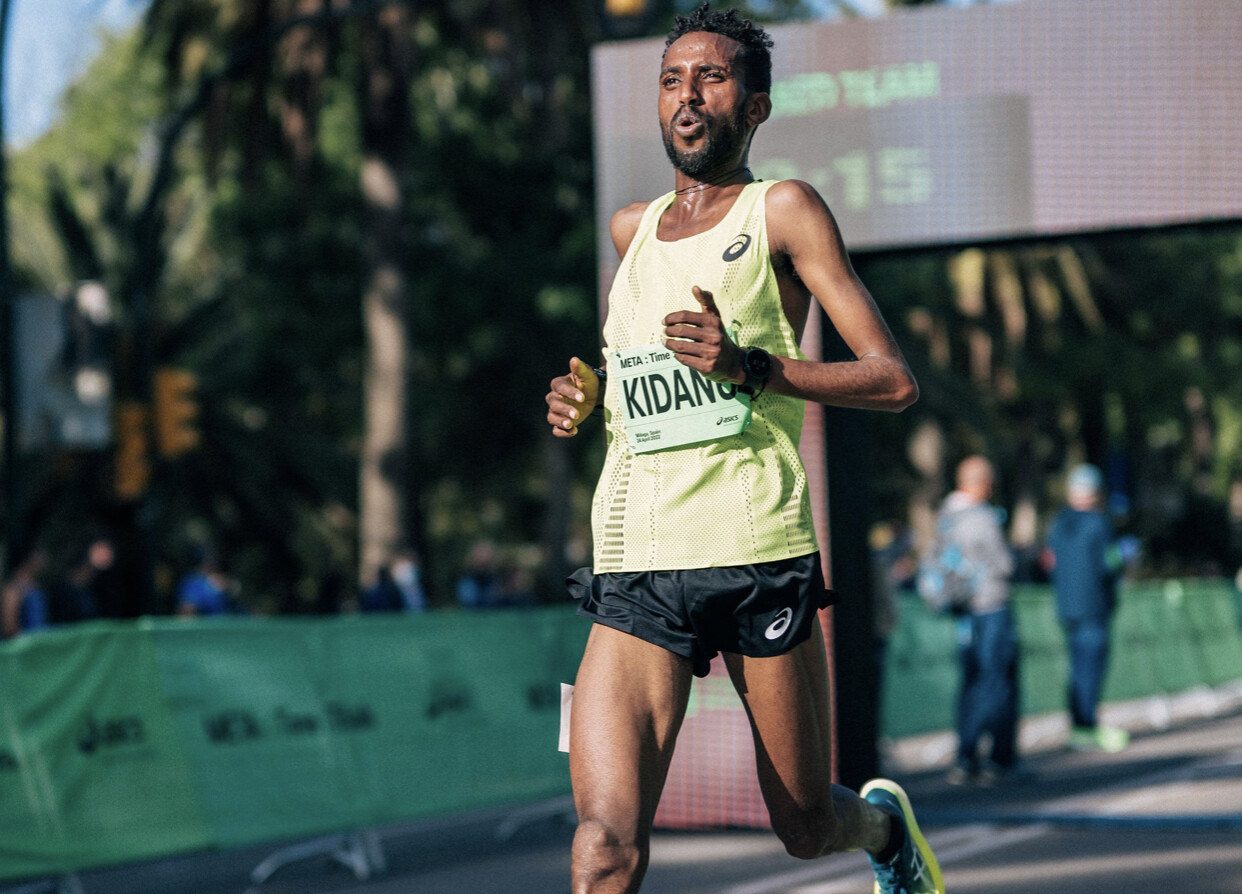
Kidanu impressed on his 10km road race debut, running 27:14 after passing half way in 13:42. That saw the 2019 world U20 cross country fifth-place finisher win by nine seconds ahead of Kenya’s Boniface Kibiwott with 27:23.
Kenya’s Vicoty Chepngeno, winner of the Houston Half Marathon in January, was this time racing over 10km and claimed top spot in 31:39, 16 seconds ahead of Sweden’s Sarah Lahti with 31:55.
Three athletes dipped under the hour in the men’s half marathon, led by Morocco’s Olympic marathon 11th place finisher Mohamed Reda El Aaraby with 59:54.
That saw him break the hour barrier for the first time, improving on his previous best of 1:00:17 set when finishing 13th the 2020 World Half Marathon Championships in Gdynia.
Kenya’s Wilfred Kimitei and Alfred Kipchirchir were just two seconds behind him, both clocking 59:56, while their compatriot Vincent Ngetich clocked exactly an hour.
Ethiopia’s Yeshi Kalayu Chekole claimed a clear win in the women’s half marathon, running a PB of 1:07:30 to finish 38 seconds ahead of Kenya’s Sharon Kemboi with 1:08:08.
(04/25/2022) ⚡AMPASICS META : Time : Trials
ASICS elite athletes from around the world came together to take part in a high-octane series of races inspired by the Tour de France, as they push each other to achieve their own fastest times ever. Over 80 athletes including British Eilish McColgan, Boniface Kibiwott, Vicoty Chepngeno and Mohamed Katir competed in World Athletics certified races of either five kilometers,...
more...Aleksandr Sorokin breaks 100K world record, Sorokin ran 6:05:41, averaging an insane pace of 3:39 per kilometer
The 100-mile and 24-hour world record holder, Aleksandr Sorokin of Lithuania, has added another world record to his resume by running 6:05:41 over 100K at the Centurion Running Track 100 in Bedford, U.K. on Saturday. Sorokin broke Japan’s Nao Kazami’s previous 100k world record of 6:09:14 from 2018 by almost five minutes.
The pace of Sorokin’s new 100K world record is three minutes and 39 seconds per kilometer, which is equivalent to running back-to-back marathons in 2:32:33. According to his Strava activity, his goal was to go out at 3:40/km pace, but he found that he felt good 70 kilometers in, picking up the pace to 3:30/km.
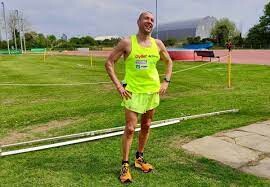
Sorokin also hit the 50K mark in 3:01:50 to set a new Lithuanian national record, breaking his previous 50K record of 3:02:39 from July 2021. The world’s fastest ultrarunner already owned three world records before this: 100 miles in 11:14:56, 12 hours (170.3 kilometers) and 24 hours (309.4 kilometres).
Leading up to his 100K world record attempt, Sorokin spent several months training at altitude in Kenya’s Rift Valley, running upwards of 250 to 300 kilometers a week (43 kilometers per day).
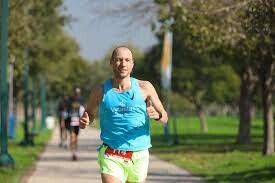
According to Ally Beaven on Twitter, Sorokin’s 50-mile split of 4:53:41 was the fourth-fastest ever, only three minutes behind Jim Walmsley‘s world record of 4:50:08.
It may not be too long until we see the Lithuanian ultrarunner go for his fifth world record over the 50-mile distance.
(04/25/2022) ⚡AMPby Marley Dickinson
Yalemzerf Yehualaw runs sensational 2:17:23 marathon debut in Hamburg and Kipchoge’s course record was shattered in men’s race
Yalemzerf Yehualaw won the Haspa Marathon Hamburg, producing a sensational marathon debut. The 22 year-old Ethiopian clocked 2:17:23 which is the fastest time by a debutant ever. So far Paula Radcliffe’s time of 2:18:56 from London in 2002 was the fastest debut time by a woman.
Yalemzerf Yehualaw became the sixth fastest women in the history of marathon running, broke the course record and set a German Allcomer record. Fikrte Wereta took second in 2:26:15 and Bone Cheluke made it an all-Ethiopian podium with 2:26:23 for third place.
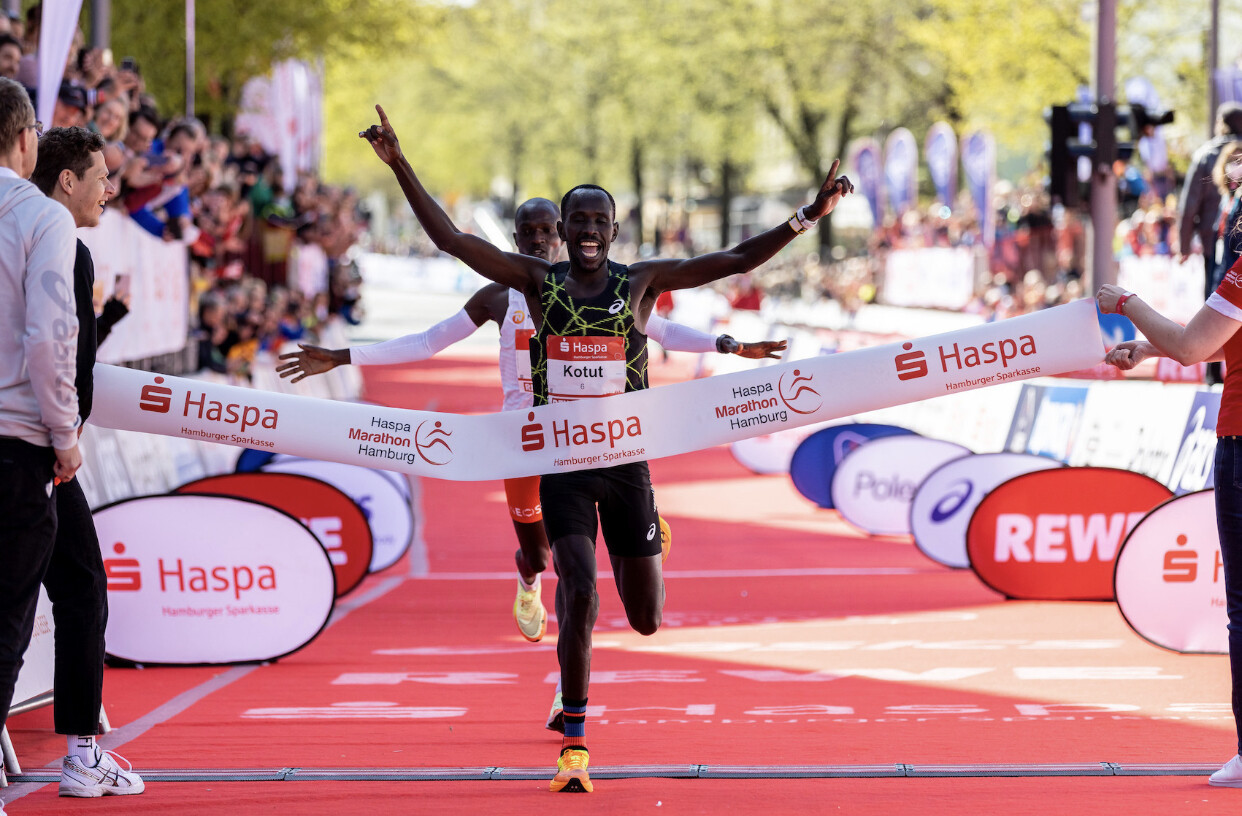
In the men’s race Eliud Kipchoge’s 2:05:30 course record from 2013 was broken by fellow-Kenyan Cybrian Kotut. He clocked 2:04:47, just edging Uganda’s debutant Stephen Kissa who crossed the line one second behind the winner. Ethiopia’s Workineh Tadesse followed in third place with 2:05:07.
A total of 20,000 entries from 68 nations were registered by organisers for the 36th edition of the Haspa Marathon Hamburg, including shorter running events on Sunday. Around 10,500 of them competed in the marathon. Additionally 9,000 children participated in a 4.2 k run on Saturday.
“That was a great spring comeback for us. We presented a stunning race on the streets of Hamburg and we are proud of the extremely strong results including two course records and a unique debut by Yalemzerf Yehualaw,“ said chief organiser Frank Thaleiser.
Yalemzerf Yehualaw came in late on Thursday and missed the pre-race press conference, but she took centre stage on Sunday when it mattered. In sunny but windy conditions and temperatures around 10 Celsius Ethiopia’s Yalemzerf Yehualaw dominated the women’s race from the beginning and constantly increased her lead.
She ran past the half marathon mark in a super fast 68:30. At this point she was already over two and a half minutes ahead. At the end of the race the gap between her and the second runner was almost nine minutes. “The race went well for me considering this was my first marathon. The fast Hamburg course suited me and the spectators helped me a lot,“ said the winner.
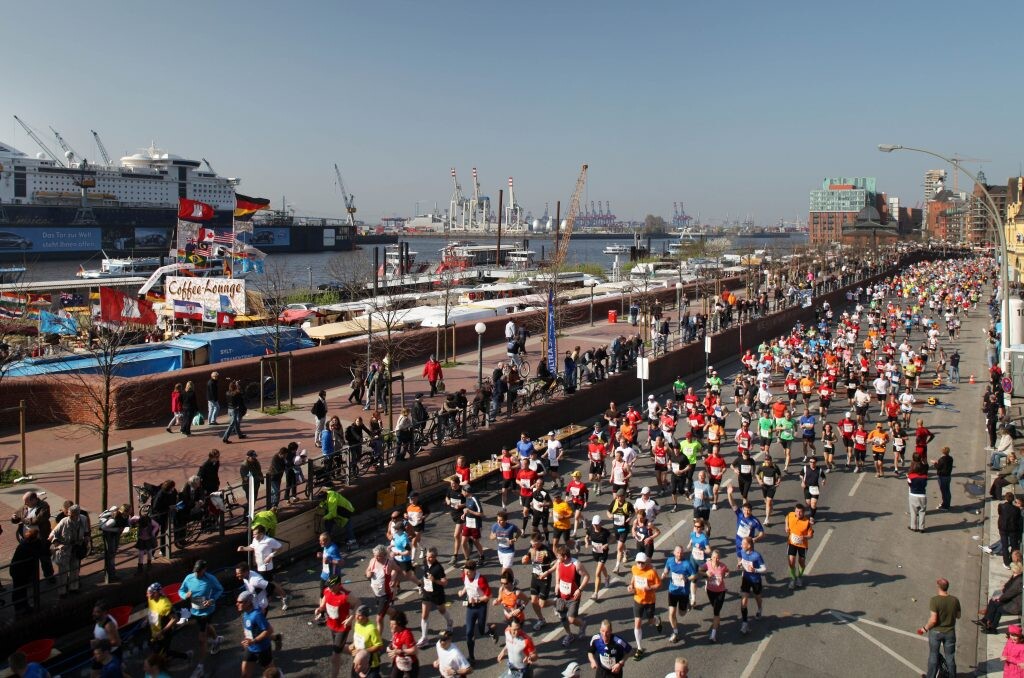
Yalemzerf Yehualaw was around four and a half minutes faster than former Hamburg course record holder Meselech Melkamu of Ethiopia (2:21:54 in 2016). Additionally she broke the German Allcomers record of Kenya’s Gladys Cherono who ran 2:18:11 in Berlin in 2018.
In the men’s race things looked a lot closer from the beginning. 17 men passed the 10k mark in 29:29. A major surge came late in the race with only four kilometres to go. Cybrian Kotut and Stephen Kissa, a debutant from Uganda, broke away from the leading group which included six runners at that point. Both delivered a stunning showdown right to the finish line.
In the final sprint Cybrian Kotut pushed himself to a close victory in 2:04:47, a second ahead of Stephen Kissa (2:04:48). Ethiopia’s Workineh Tadesse took third spot in 2:05:07. All three runners were within the former course record of Eliud Kipchoge which stood at 2:05:30. The Kenyan superstar set this record back in 2013 running his marathon debut in Hamburg. ’’I am very happy that I broke the course record.
The pacemakers covered me well from the wind. It was not easy with the wind, but overall the conditions were very good,“ said Cybrian Kotut.
The fastest German runner was Florian Röser. He ran a solid marathon debut in 2:15:03. ’’I’m very surprised to be the fastest German athlete. The race was not ideal for me but considering that this was my debut it was good,“ he said.
Kristina Hendel was the dominant German woman in the field. She finished the race in a strong fifth position with a personal best of 2:27:29. “We had to fight against the wind from kilometer 8 till 31. On top of that I got cramps but they eased later in the race. I broke my personal best and I am very proud of that. I hope I will run in a German vest at the European Championships in Munich,“ said Christina Hendel.
The former Croatian gained German citizenship in 2021 but is not eligible yet to compete for Germany internationally. Deborah Schöneborn finished the race as the second fastest German woman in 9th place with a time of 2:29:51.
Men:
1. Cybrian Kotut KEN 2:04:47
2. Stephen Kissa UGA 2:04:48
3. Workineh Tadesse ETH 2:05:07
4. Victor Kiplangat UGA 2:05:09
5. Abebe Negewo ETH 2:06:05
6. Masresha Bere ETH 2:06:44
7. Edwin Kiptoo KEN 2:06:52
8. Abraham Kiptoo KEN 2:06:59
9. Bazewe Asmare ETH 2:07:13
10. Bernard Ngeno KEN 2:07:27
Women:
1. Yalemzerf Yehualaw ETH 2:17:13
2. Fikrte Wereta ETH 2:26:15
3. Bone Cheluke ETH 2:26:23
4. Tseginesh Mekonnen ETH 2:26:29
5. Kristina Hendel CRO 2:27:29
6. Priscah Jeptoo KEN 2:28:48
7. Rosa Chacha ECU 2:28:52
8. Gadise Mulu ETH 2:28:37
9. Deborah Schöneborn GER 2:29:51
10. Jana Soethout GER 2:34:28
(04/24/2022) ⚡AMPHaspa Marathon Hamburg
The HASPA MARATHON HAMBURG is Germany’s biggest spring marathon and since 1986 the first one to paint the blue line on the roads. Hamburcourse record is fast (2:05:30), the metropolitan city (1.8 million residents) lets the euphoric atmosphere spill over and carry you to the finish. Make this experience first hand and follow the Blue Line....
more...Vibian Chepkirui defended her title and smashed the course record at the Vienna City Marathon.
The Kenyan Vivian Chepkirui won with 2:20:59 after a close battle with fellow-Kenyan Ruth Chebitok who finished second in 2:21:03. Sheila Jerotich made it an all-Kenyan podium, taking third place in 2:23:01.
Cosmas Muteti won the men’s race with 2:06:53, which is the second fastest time in the history of the Vienna City Marathon. Fellow-Kenyan Leonard Langat was second in 2:06:59 and Eritrea’s Oqbe Kibrom followed in third with 2:07:25.
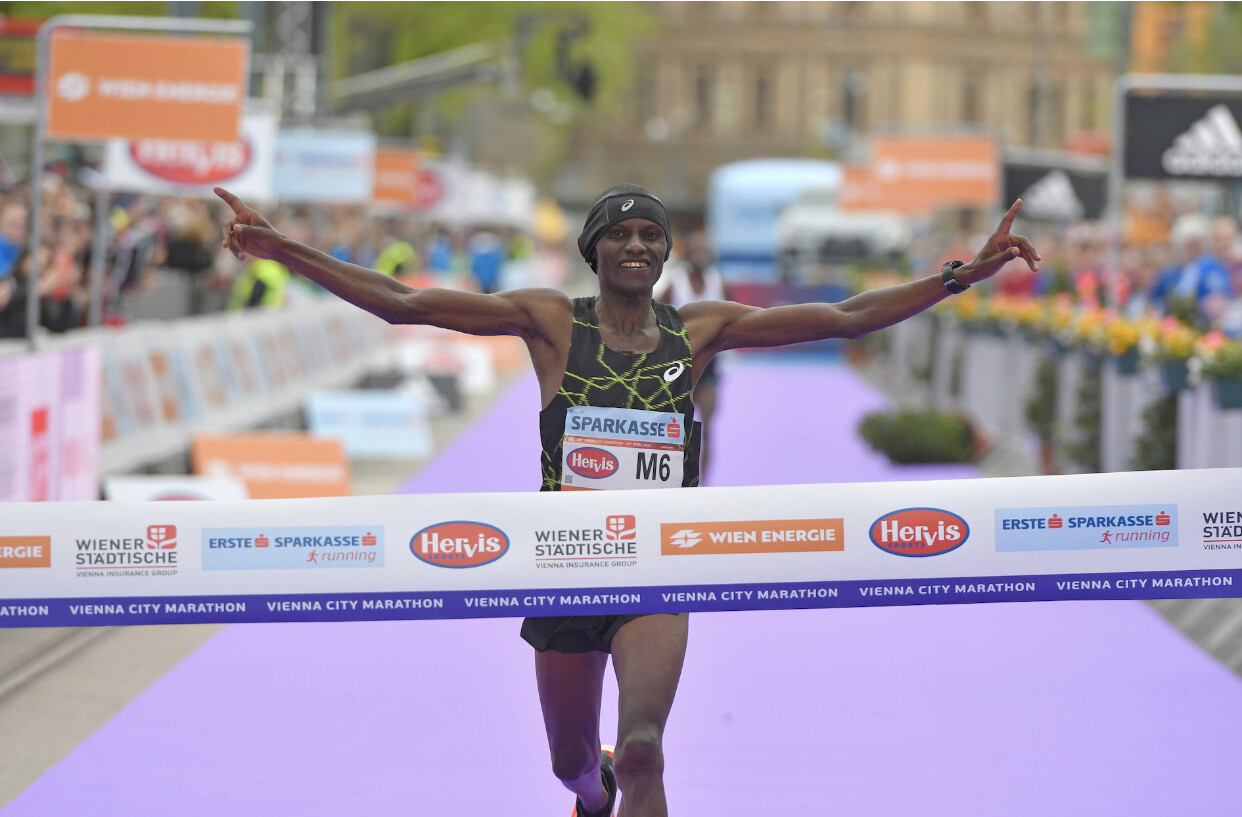
Although there was no course record in the men’s race the wider top results were the best ever in the history of the event. There have never been two results below 2:07before in Vienna. And seven times sub 2:10 is also a record for Austria’s prime road race.
A total of 32,000 runners from about 100 nations had registered for the 39th edition of the Vienna City Marathon, including events at shorter distances. Around 8,000 of them competed in the marathon. The Vienna City Marathon is Austria’s biggest sporting event and a World Athletics Label Road Race.
Men’s Race
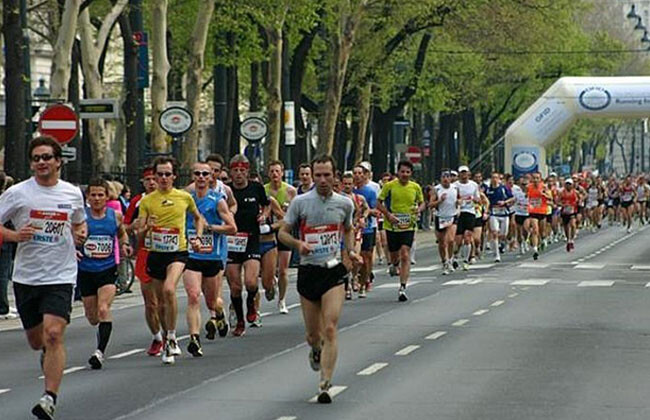
There was good pacemaking with an even pace in the men’s race for a long time although the 2:05:41 course record was never really threatened. A group of 17 runners including the three pacers passed half way in 63:21 and then went on to a 30k split time of 1:30:12. However when the pacers all dropped out at the same time right after the 30k point the race for victory was on immediately.
It was Oqbe Kibrom who surged ahead instantly. The fastest runner on the start list (PB: 2:05:53) seemed on course for a first Eritrean victory in the history of the race. However with kilometer splits of 2:54 and 2:51 for the 31st and 32k Oqbe Kibrom misjudged his potential and the picture changed.
“I knew he was strong. But I decided not go with him at 30k and run my own pace instead. I hoped to close the gap slowly,“ explained Cosmas Muteti, who soon realised that he did gain ground on the leader. With around five kilometres to go the Kenyan, who is partly coached by former world marathon record holder Patrick Makau and was fifth in Berlin last September, caught Oqbe Kibrom and then moved away from him.
In the final stages fellow-Kenyan Leonard Langat took second place and made up some ground to the leader. “I knew that he was coming nearer, but I was sure to win as I would have been able to put in a sprint if needed,“ said Cosmas Muteti, who wrote history by becoming the 50th runner of the Vienna City Marathon to achieve a sub 2:10 finish.
“This is my biggest victory. I hope to be able to defend my title here next year and then may be break the course record,“ said Cosmas Muteti, who improved his former PB of 2:08:45 by almost two minutes.
Austrian’s Lemawork Ketema was the best European runner in Vienna with a 2:15:42 finishing time in 13th place. However he missed the qualifying standard for the European Championships.
Women’s Race
In relatively good weather conditions but some wind the women’s race developed differently. Defending champion Vibian Chepkirui, who ran only her second marathon after her Vienna debut triumph in 2021, broke away after eight kilometres. At the 10k mark she had a split time of 33:11 which pointed to a 2:20 finishing time.
She was six seconds ahead of fellow-Kenyans Ruth Chebitok and Viola Yator. For an unexpected reason the 27 year-old was then not able to maintain this pace. “My husband and pacemaker Wesley Kongogo had a problem with his shoes and got a blister, so he slowed a bit,“ explained Vibian Chepkirui. While she had a lead of nine seconds at half way, which she passed in 70:38, she was unable to significantly increase it.
In contrast Ruth Chebitok, who had left behind Viola Yator after the half way mark, made up the deficit and was running right behind the defending champion at 35k.
Vibian Chepkirui stayed ahead by a step in the final section and it was with around one kilometer to go at Vienna’s Opera House when she increased the pace again and secured her second Vienna marathon victory.
“I am of course very happy to have won again in Vienna. I want to come back next year and then my goal will be to improve to 2:18,“ said Vibian Chepkirui, who ran 2:24:29 in her debut last September in warm conditions.
Slovenia’s Neja Krsinar was the fastest European runner in Vienna. She finished eighth in 2:35:30.
Results, Men:
1. Cosmas Muteti KEN 2:06:53
2. Leonard Langat KEN 2:06:59
3. Oqbe Kibrom ERI 2:07:25
4. Charles Ndiema KEN 2:08:12
5. Raymond Chose KEN 2:08:32
6. Edwin Soi KEN 2:09:10
7. Noah Kipkemboi KEN 2:09:55
8. Abdi Fufa ETH 2:10:32
9. Abraham Kipyatich KEN 2:10:51
10. Mike Chesire KEN 2:11:32
Women:
1. Vibian Chepkirui KEN 2:20:59
2. Ruth Chebitok KEN 2:21:03
3. Sheila Jerotich KEN 2:23:01
4. Urge Soboka ETH 2:27:13
5. Caroline Kilel KEN 2:29:29
6. Viola Yator KEN 2:30:40
7. Teresiah Omosa KEN 2:31:44
8. Neja Krsinar SLO 2:35:30
9. Kellys Arias COL 2:38:28
10. Chaltu Marame ETH 2:38:34
(04/24/2022) ⚡AMPVienna City Marathon
More than 41,000 runners from over 110 nations take part in the Vienna City Marathon, cheered on by hundreds of thousands of spectators. From the start at UN City to the magnificent finish on the Heldenplatz, the excitement will never miss a beat. In recent years the Vienna City Marathon has succeeded in creating a unique position as a marathon...
more...Eight classic track and road workouts to build speed
Many runners are constantly on the hunt for that magical workout that will launch them to new personal bests, but the truth is, improvement comes from consistent hard work over time. These tried-and-true workouts aren’t magical or sexy, but ask any high-level runner and they’ll tell you: these are the sessions that will get you where you want to go.
Track workouts
With a little tweaking, these sessions can be done by both beginner runners and experienced athletes. If you have access to a nearby track, we highly encourage you to utilize it — a weekly track session can do wonders for your speed development.
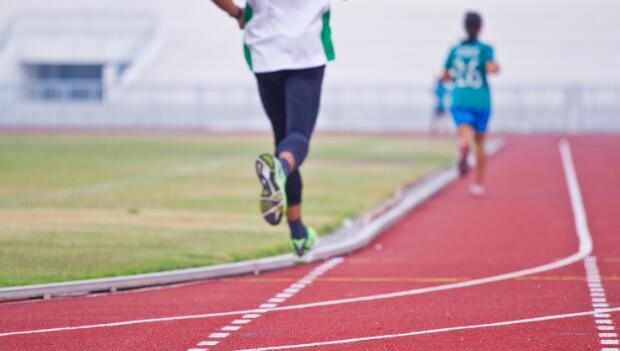
For those who are new to the track, a standard track is 400m, so the 400m repeats are one lap of the track, the 800s are two laps, the 1K’s are 2.5 laps and the mile is four laps.
8-10 x 400m/1 minute rest @1,500m pace (beginners, start with 4 intervals and work your way up)

6-8 x 800m/2 minutes rest @3,000m pace (beginners, start with 4 intervals)
4-6 x 1K/3 minutes rest @5K pace (beginners, start with 2 intervals)
3-6 x 1 mile/3 minutes rest @10K pace (beginners, start with 2 intervals)
Road workouts
If you’re training for a road race, it’s important to do at least some of your speed work on the road, because it’s beneficial to train on the surface you’ll be racing on. A GPS watch will be helpful to keep you on pace for these workouts, but if you don’t have one, do your best to run these by feel (you could try using RPE) to make sure you’re running at the right intensity.
4-5 x 5 minutes/2 minutes rest @5-10K pace
6-8 x 3 minutes/1-2 minute rest @5K pace
10 x 1 minute/1 minute rest @1,500m-3K pace
15-30 minute tempo run at 10K pace.
(04/24/2022) ⚡AMPby Running Magazine
Here's How How Evans Chebet of Kenya Won the 2022 Boston Marathon
He led a Kenyan podium sweep in the deepest Boston men’s pro field ever.
Thanks to covering the stretch between 35 and 40 kilometers in an astounding 13:55, Evans Chebet of Kenya won the 2022 Boston Marathon in 2:06:51.
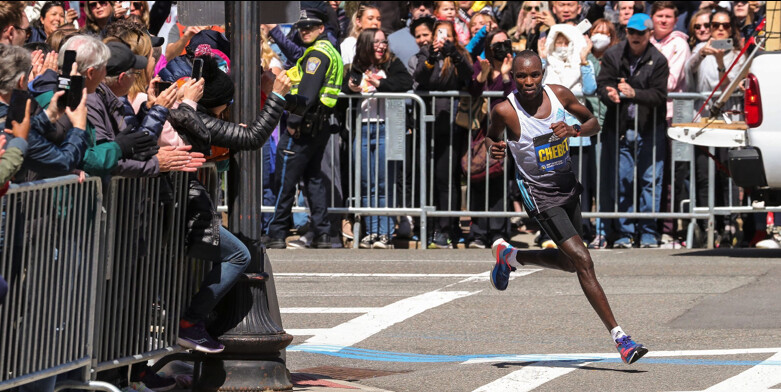
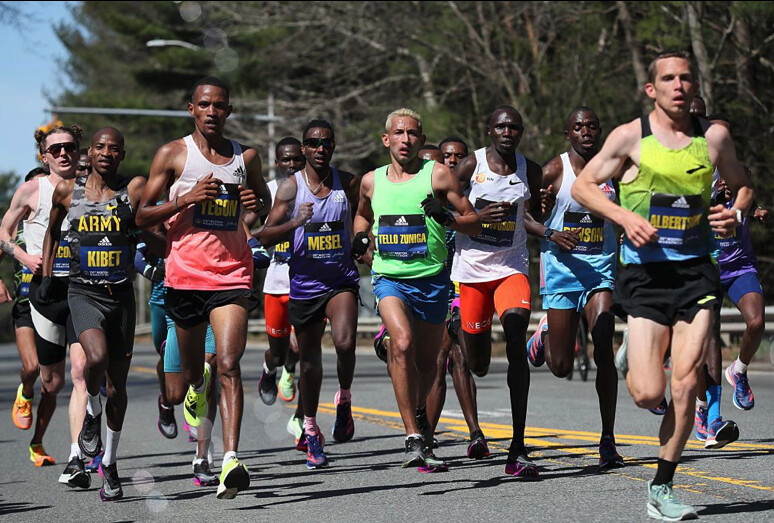
Lawrence Cherono, the 2019 winner, and Benson Kipruto, the 2021 champion, made it a Kenyan podium sweep. Cherono placed second in 2:07:21. Kipruto took third in 2:07:27.
Scott Fauble was the top American, placing seventh in 2:08:52. Fauble was also the top American in 2019, when he also finished seventh. Elkanah Kibet, ninth in 2:09:07, and CJ Albertson, 13th in 2:10:23, were the second and third U.S. finishers. All three set personal bests.
Here’s a full breakdown of the 2022 Boston Marathon men’s race, from how the race was won to the biggest surprise to the $$$.
The Winner: Evans Chebet
Chebet, 33, has been near the top of world marathoning for the past few years. Only one man in the field has a better personal best than his 2:03:00, and before today he had placed first or second in 10 marathons. But his Boston win was still a big step forward in his career.
Chebet’s best races before today were in high-level marathons such as Valencia, Prague, and Seoul, not in World Marathon Majors. He placed third in Berlin in 2016, fourth in Tokyo in 2017, and fourth last fall in London. He started Boston once before today, in 2018, when he was among the one-third of elite entrants who dropped out during that year’s horrific wind, rain, and cold.
Certainly his momentum was heading in the right direction for today’s Boston. Other than that fourth in London in October, he has been on a winning streak, taking titles in Buenos Aries in 2019 and Lake Biwa and Valencia (where he set his PR) in 2020. Chebet will no doubt cherish but not be complacent about his new status among the world’s best. He likely knows that since 2009, only one man, Lelisa Desisa of Ethiopia (2013 and 2015), has won more than one Boston title.
Where the Race Was Won
Chebet covered the 22nd mile in 4:27. Or as Geay apparently thought, “4:27?!” The Tanzanian looked at his watch, either in disbelief or in regret about how much time remained in the race now that he’d opted to go with Chebet. Whatever the case, Chebet dropped Geay a couple of minutes later en route to a 4:26 23rd mile. Then he ran another 4:26 mile.
Chebet’s 13:55 5K between 35K and 40K is good enough to win most open 5K road races. Cherono and Kipruto gave chase and overtook Geay in the process, but Chebet’s victory was never in doubt once he started his fabulous display of late-race speed. Chebet acknowledged as much at the postrace press conference, saying through an interpreter he was confident that his move would get him the win.
The Biggest Surprise
It was a fast, deep race. The 10th finisher, Kinde Atanaw of Ethiopia, ran 2:09:16. That’s 35 seconds faster than Benson Kipruto ran to win the 2021 edition.
Wait, that’s surprising? Wasn’t this said to be the best Boston field in years? Didn’t the postponement of the London Marathon to October funnel that many more elites to the start line in Hopkinton? And doesn’t everyone run fast in the super shoe era?
Well, there were super shoes six months ago when winner Kipruto was the only one to break 2:10. Also, despite what may have appeared to be the case on television, the weather was challenging. The wind was slight—usually no more than 5 miles per hour while the pros were racing—but not favorable. Des Linden, who won during the 2018 monsoon and knows from wind, said there was a persistent headwind. A weather team from the University of Massachusetts at Lowell who tracked conditions confirmed to Runner’s World there was an atypical easterly (i.e., in-their-race) wind throughout the race.
And, as we noted above, it’s become common at Boston for the men to not really start racing until the final five miles. Today, they happened to do so after an opening half of 1:03:24, almost three minutes faster than the main pack ran last year.
So, yes, a bunch of really fast guys ran fast today at Boston. But that outcome was neither predictable nor weather-enabled.
In recent years, the men’s race at Boston has often featured a large lead pack cresting Heartbreak Hill together, and then someone shattering the pack with an aggressive move soon after. That trend continued today.
Chebet was among a pack of 20 that hit halfway in 1:03:24. He occasionally appeared near the front of the pack as they moved through the Newton hills, looking eager to get going, then perhaps reminding himself it was too early, and disappearing back into the group.
Fifteen men came up and over the most famous hill in running together. With five miles to go, two-time New York City winner Geoffrey Kamworor and last year’s champ, Benson Kipruto, appeared at the front for the first time. Chebet looked around some more. Then he started to push.
Within a minute, the field was single file. Only Gabriel Geay of Tanzania went with Chebet. Kipruto and 2019 winner Lawrence Cherono ran together in third and fourth
Tidbits From the Top 20
In addition to runner-up Lawrence Cherono (2019) and third-place finisher Benson Kipruto (2021), there were two other former Boston champions in the top 20. Lemi Berhanu of Ethiopia, the 2016 winner, placed 11th in 2:09:43. Yuki Kawauchi of Japan, winner during the apocalyptic storm of 2018, finished 20th in 2:12:55.
If sixth-place finisher Albert Korir and his knock-kneed gait looked familiar, that’s because he won the 2021 New York City Marathon in November.
Besides Scott Fauble, Elkanah Kibet, and CJ Albertson, there were four other American men in the top 20: Matthew McDonald, 14thin 2:10:35 (a PR); Reed Fischer, 16th in 2:10:54 (also a PR); Mick Iacofano, 17th in 2:11:48; and Colin Bennie, 19th in 2:12:08.
The Prize Money
Evans Chebet, $150,000
Lawrence Cherono, $75,000
Benson Kipruto, $40,000
(04/24/2022) ⚡AMPby Runner’s World
Boston Marathon
Among the nation’s oldest athletic clubs, the B.A.A. was established in 1887, and, in 1896, more than half of the U.S. Olympic Team at the first modern games was composed of B.A.A. club members. The Olympic Games provided the inspiration for the first Boston Marathon, which culminated the B.A.A. Games on April 19, 1897. John J. McDermott emerged from a...
more...Fan-Favorite Molly Seidel Dropped Out of the 2022 Boston Marathon Between 25K and 30K of the Race
Molly Seidel hit her first racing setback as a marathoner when she dropped out of the Boston Marathon on Monday, April 18. In her Boston debut, the Olympic bronze medalist walked off the course between 25K and 30K.
Seidel was running with the lead pack of elite women until the 9-mile mark, where 2020 Olympic champion Peres Jepchirchir dropped the pace with a 4:59 split. The aggressive move broke up the front pack significantly, and Seidel was among the group of competitors who fell behind.
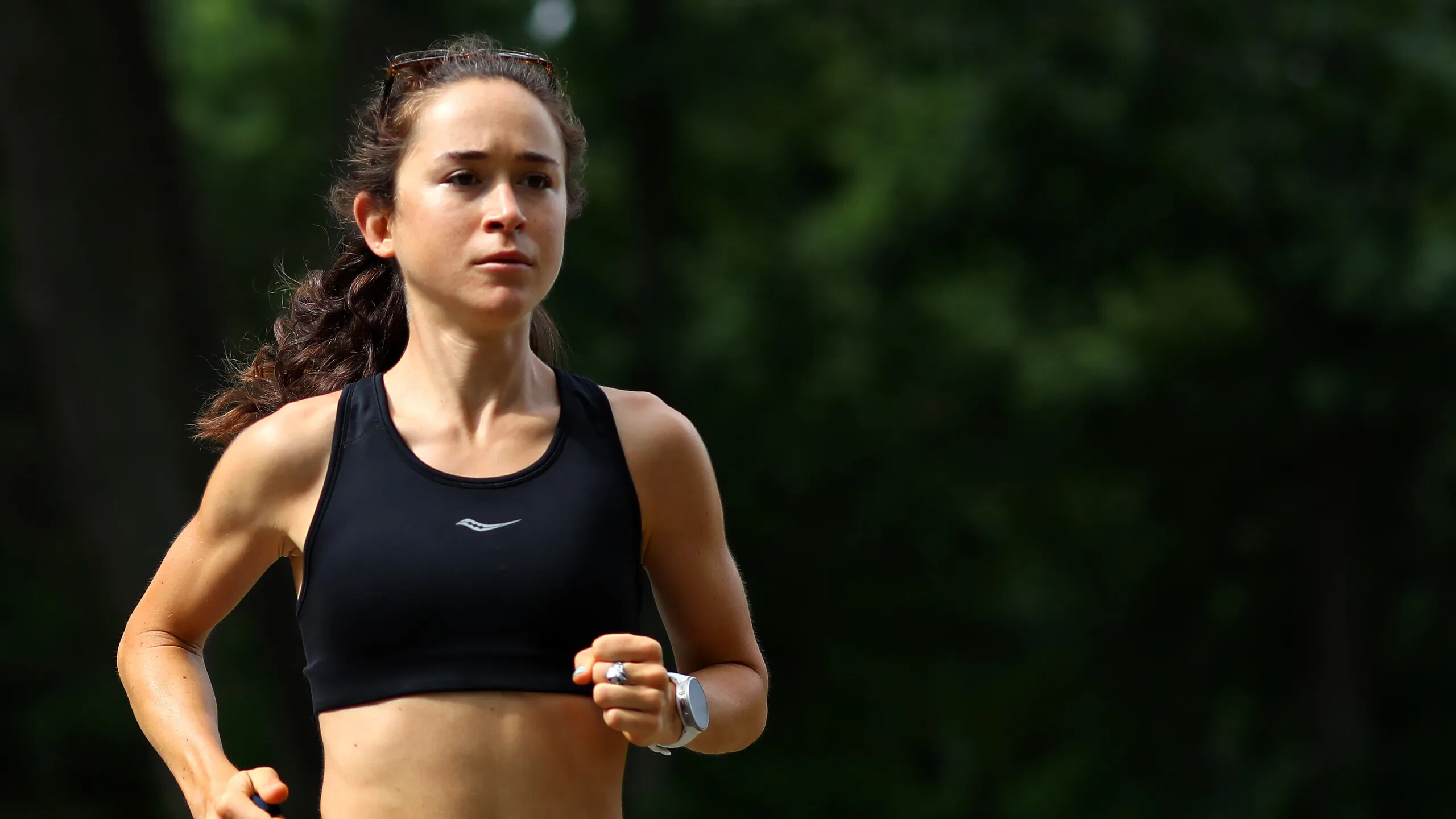
At halfway, Seidel was in 11th place and running as the top American ahead of Nell Rojas. But in the following miles, she started to slow down. Her final split was 1:25:29 at 25K. She didn’t record a split at 30K.
Boston is Seidel’s fifth marathon in about two years, which have been highlighted by incredible performances over 26.2. The 27-year-old made her debut with a runner-up finish at the 2020 U.S. Olympic Marathon Trials in Atlanta. She finished sixth in London (2:25:13) in 2020. On a blistering day in Sapporo, Seidel claimed the Olympic bronze medal at the Tokyo Games last summer.
Thirteen weeks later, she followed up her historic Olympic run at the 2021 New York City Marathon, where she finished fourth in 2:24:42, the fastest time by an American on the course. The personal best was especially impressive given that Seidel broke two ribs about a month before the race. In the postrace press conference, she didn’t share what caused the injury, but said it was so painful that she considered not lining up at all.
“It was hard coming off the Olympics and hard mentally getting back into that build,” she said after the race on November 7, 2021. “I’ve invested too much in this, I really want to do it. It means a lot to me to do it, regardless of what it turns out to be.”
Heading into the Boston Marathon, Seidel was considered a heavy favorite to make the podium. In addition to her accolades on the world stage, she came in with more experience than most on the prestigious course.
Before moving to Flagstaff, Arizona, last April, she lived in Boston for almost five years. During the elite athlete press conference on April 15, Seidel said she’s done a lot of training on the Boston course after living in the Fenway neighborhood and running the route regularly. She also babysat for a family in Wellesley and trained near the halfway point, running to Heartbreak Hill and back for about 14 miles.
Before the race, Seidel told Runner’s World that after a few “hiccups” in her training early on, including a hip impingement that curtailed her training for a few days, the last five weeks of her Boston buildup were “about as good as I could have hoped.”
“You almost have to reconcile the marathon buildup you want with the one that you get,” Seidel said. “But I think we’re in a really good place now, not only for Boston, but for world champs in the summer, focusing on a lot of strength as we build for the rest of the year.”
(04/24/2022) ⚡AMPby Runner’s World
Yehualaw runs 2:17:23 in Hamburg for fastest ever women's marathon debut
Ethiopia’s Yalemzerf Yehualaw made history in Hamburg on Sunday (24), running 2:17:23 for the fastest ever women’s marathon debut.
The 22-year-old won the Haspa Marathon Hamburg by almost nine minutes, breaking the Ethiopian record and German all-comers’ record, while just a second separated the top two in the men’s race. Kenya’s Cybrian Kotut clocked 2:04:47 to pip Uganda’s Stephen Kissa as the top four were all under the previous men’s course record of 2:05:30 set by Eliud Kipchoge in 2013.
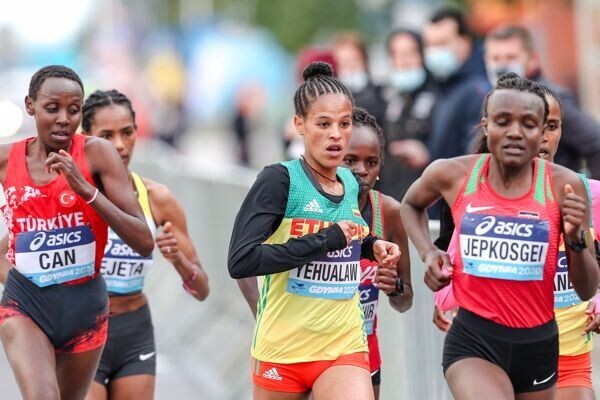
Having broken the world 10km record with 29:14 in Castellon in February and with a half marathon best of 1:03:51 to her name, Yehualaw’s marathon debut was highly anticipated and she delivered in fine style.
Fast from the start, she ran with her male pacemakers through 10km in 32:39 and was on exactly 2:17 marathon pace through half way (1:08:30). Slowing only marginally in the second half, she went through 30km in 1:37:34 before running solo through 35km in 1:53:55 once her pacemakers had done their job.
The world half marathon bronze medallist continued on to eventually reach the finish line with 2:17:23 on the clock, well under the previous fastest ever women’s marathon debut time of 2:18:56 achieved by Paula Radcliffe in 2002.
The performance puts Yehualaw sixth on the women's world marathon all time list, topped by Brigid Kosgei’s world record of 2:14:04 set in 2019, and is the third-fastest time of the year so far.
She led an Ethiopian top three, with Fikrte Wereta and Bone Cheluke clocking respective times of 2:26:15 and 2:26:23, also on their marathon debuts.
In the men’s race, Kotut and Kissa had broken away from a six-strong group that passed 35km in 1:43:38, and so began their fierce battle for the finish. They were together through 40km in 1:58:18 and with two hours on the clock Kissa kicked, looking for a win on his marathon debut, but his rival responded.
It was Kotut, last year’s Florence Marathon winner and a training partner of recent Boston Marathon winner Evans Chebet, who had the stronger finish and he edged Kissa at the end - 2:04:47 to 2:04:48.
It was a PB for Kotut, improving on his previous best of 2:07:11 from 2016, while Kissa was rewarded with a Ugandan record on his debut.
Joining them under the previous course record were Ethiopia's Workineh Tadesse with a 2:05:07 PB and Uganda's Victor Kiplangat with a 2:05:09 PB.
(04/24/2022) ⚡AMPHaspa Marathon Hamburg
The HASPA MARATHON HAMBURG is Germany’s biggest spring marathon and since 1986 the first one to paint the blue line on the roads. Hamburcourse record is fast (2:05:30), the metropolitan city (1.8 million residents) lets the euphoric atmosphere spill over and carry you to the finish. Make this experience first hand and follow the Blue Line....
more...Improve your explosiveness with this sprint workout, canadian indoor 400m record holder Lauren Gale gives tips on how to build your speed
Although sprinting and long-distance running are different disciplines, there is obviously some crossover. Both require explosive strength and power, whether to pass someone or when sprinting to the finish line. Working on your explosiveness can also reduce your risk of injury during activities that involve high power outputs with quick acceleration, as in middle-distance running or sprint events.
Canadian indoor 200m and 400m record holder and sprinter for Colorado State University Lauren Gale correlates a lot of her success with explosive work on and off the track. “When you are training for explosiveness, the goal is to build your lactate threshold,” Gale says. (Lactate threshold refers to the point at which lactic acid begins to accumulate in the blood during strenuous efforts, surpassing the body’s ability to flush/recycle it for energy production.)
The workout
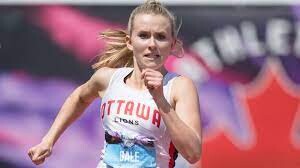
Two to three sets of 300m, 150m, 80m, all off 90 seconds’ rest, with five minutes between sets
Before you start the workout, make sure you do a proper 10- to 20-minute warm-up with dynamic stretching. Each rep should be done at close to an all-out sprint pace, with 90 seconds of standing rest between reps and five minutes of standing rest between sets.
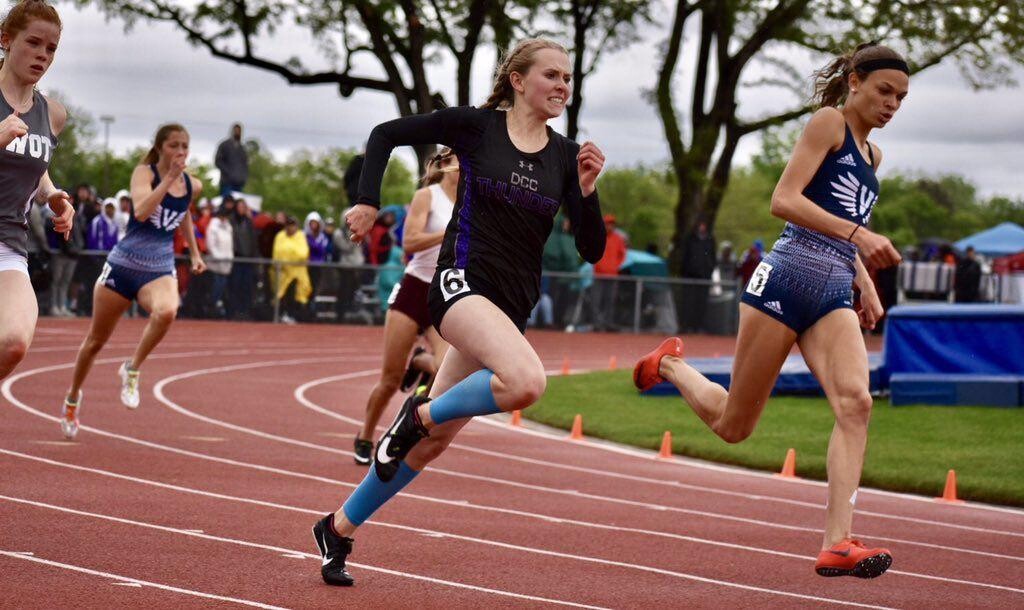
“The short rest mixed with the longer sprint reps will help build your speed for longer distances,” says Gale.
The purpose of this workout is to develop explosive power from your lower body. Each rep requires you to explode to top speed from a standstill position (like racing off the blocks), and you begin to accelerate by driving your lower body into the ground.
(04/23/2022) ⚡AMPby Marley Dickinson
What should you eat and drink after a marathon?
Well, you did it–you endured endless hours of training and preparation and completed 42.2 km to the best of your ability, and now it’s time to celebrate. After crossing the finish line, there is a lot of temptation to rest or celebrate with a few alcoholic beverages and treats, but consuming the right nutrients after a marathon will go a long way in helping you to feel less sore in the days after.
Emma Stevenson, professor of sport and exercise science at the University of Newcastle in the U.K., states that runners should try to consume 50 to 100 grams of carbohydrates within an hour of finishing the marathon, in either food or drink.
Consuming foods high in carbohydrates is necessary to restore your muscles and liver glycogen. What prolonged exercise does is deplete your glycogen stores. Therefore, when you finish a marathon there is a 30- to 60-minute window when the muscle is primed to take in the carbohydrates you consume and store them for recovery.

It’s better to choose sources of carbohydrates that can be digested immediately to maximize muscle restoration, such as sports drinks, cereal bars, bananas or a bagel. Other good sources of carbohydrates are pasta, rice and bread for three to four hours after the race, helping replenish carbohydrate stores long term.
If you are unable to grab a sandwich or snack after you finish, set aside food to have after the race beforehand. This tip can be handy if you are travelling for a marathon.
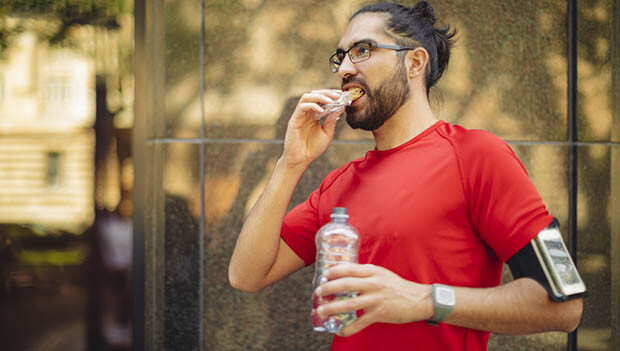
If you were to dabble in some post-run beverages, beer does contain carbohydrates and polyphenols (an antioxidant), which help aid recovery. The issue with beer is the alcohol, which may rob your body of essential nutrients and derail your metabolism. One or two beers can be beneficial toward recovery, but five or six could make more than your muscles sore.
Although non-alcoholic beer doesn’t have the same thrills, it can be a great alternative for post-run hydration. There’s a way you can make beer more nutritious–by sprinkling in a little salt to replace the nutrients you sweat out. This trick may make your beer less enjoyable, which sort of defeats the purpose of a post-run celebration beverage.
(04/23/2022) ⚡AMPby Marley Dickinson
After Years of Struggling With Anxiety, This Mom Turned to Running
“Running has, first and foremost, given me an outlet when I need to relax and just clear my mind.”
When I first arrived, I was shown to my bunk for the next couple weeks. I had a small spot to put my belongings, and shared a bathroom with six others. There was no air conditioner, so the windows stayed open at all times. It wasn’t the safest neighborhood.

There were bars on the windows, an electric fence surrounding the home, and a guard that stayed at the front door during the night. I was way out of my comfort zone.
Every morning a van dropped the volunteers off at their assigned location. I was with children at a local “daycare” that parents could take their children to for free.
We would bathe the children, feed them their only meal of the day, and pour as much laughter and fun into them as we could before sending them back home for the evening. I saw the tiny one-bedroom homes that they would go to with only dirt on the ground and no running water. But the silver lining was seeing their pure joy at the simplest things. When I came home to America, I felt immense guilt for the lives of luxury most of us live in and take for granted.
My anxiety really took root shortly after this trip when we lost our first pregnancy with twins. I became so bogged down with anxiety that I literally did not want to move from the couch. It was a horrible cycle because I knew my feelings were irrational, yet I couldn’t stop them. I would ruminate on something tiny, and in my head make it a really big issue. I then would find myself crying and spending hours on the internet trying to figure out what was wrong with me.
After we were blessed with our first born in 2012, I knew I needed to get help for my still-lingering anxiety. I was missing out on things in this life that I didn’t want to miss out on. I would be in the moment physically, but not emotionally because my thoughts would be running all over the place. I was getting so frustrated with not being able to turn off my worries.
I finally got the courage to go see an amazing doctor. I sat in the patient room waiting for him to come in, and the minute he did I started sobbing and asking what the heck was wrong with me. After sharing with him what I had been battling, he simply said, “You have generalized anxiety.” It’s like I could breathe all of a sudden. I had someone to tell me this is not uncommon, and that this is treatable.
I started running in 2015, after I had my second child. At that point, I had read up so much on anxiety, and the constant theme I kept coming across as a way to manage it was exercise. As a busy mom that didn’t have a gym I loved nearby, I decided I was going to do the easiest and most efficient thing I could. So I laced up some sneakers and went out for my first jog. To this day, I share the story that I literally thought I was going to die running one mile! But it ultimately became a mental challenge, and I just kept showing up. I would add 0.1 mile to every run.
Eventually, I found the indoor running studio STRIDE, which has helped me with not only my running, but also with so many amazing friendships and an amazing community.
After I was finally able to run 3 miles without thinking death was imminent, I told myself I was going to run a half marathon. My husband thought I was crazy, but I could tell how much running was helping me both physically and mentally. It was giving me time to listen to podcasts, music, think, be creative, and connect with my STRIDE community when I would take a class. So I set out to do something I never thought I would do.
Now, I like to do strength training three times a week, two 5- to 6-mile runs on Tuesdays and Thursdays and a longer run on the weekends if my kiddos’ schedules allow. I’m coming off a stress fracture and I know the importance of taking care of our bodies and really listening when it says to slow down.
I think so often the term “runner” is associated with those that only do half marathons, marathons, etc., but I would love to change that stigma. If you get out and run one mile, you are a runner. I actually don’t have any desire to do a marathon. My knee tends to yell at me more than I’d like right as I’m finishing a half, so I’ll stop there—it’s the right distance for me.
Running has, first and foremost, given me an outlet when I need to relax and just clear my mind. I laugh when people say, “I only run when I’m running away from something.” Maybe that’s true though. I was running from anxiety that was holding me back in my life. Call it super corny, but I’d flip it today to say I’m now running towards my dreams. Running has brought some of the best friendships I could have asked for, introduced me to many amazing people, and pushed me to open up a business dedicated to helping people tackle both their physical and emotional goals. Running has allowed me to be the best wife and mom I can be.
One of my favorite motivational expressions is: We will never meet the best version of ourselves in our comfort zone. Being uncomfortable is where growth truly happens, and it’s where we begin seeing versions of ourselves we didn’t know existed.
These three tips have made my running journey successful:
1. Strength train
Building strength is crucial for avoiding injury and ultimately leading to better runs and races. If you don’t want to strength train on your own, hop into a class that includes strength training like at STRIDE. There are so many options to get in your strength training.
2. Stretch and take rest days
Stretching is so important, yet we tend to neglect it (I know I have). Dynamic stretching preworkout and static stretching postworkout are a must. Resting is equally important. Listening to your body is crucial. Recovery allows for muscle growth and prevents injury among a long list of other things.
3. Get sleep
Your body needs sleep. There is a book called Why We Sleep by Matthew Walker—it may put you to sleep, but it’s chock-full of super good info that more people need to know!
(04/23/2022) ⚡AMPby Runner’s World
Defending champion Vibian Chepkirui hoping to run 2:20 in Vienna
Defending champion Vibian Chepkirui hopes to make another big step at the Vienna City Marathon, aiming to win her second race at the classic distance as well. The Kenyan believes she is ready to run a time of around 2:20 on Sunday. Such a result would not only smash her PB but the course record of 2:22:12 as well.
It was in September when Vibian Chepkirui won her debut marathon in Vienna with 2:24:19 in very warm weather conditions. While five women feature personal bests of sub 2:25 there are two men on the start list who have run below 2:06. Oqbe Kibrom of Eritrea is the fastest runner in the field with a PB of 2:05:53.
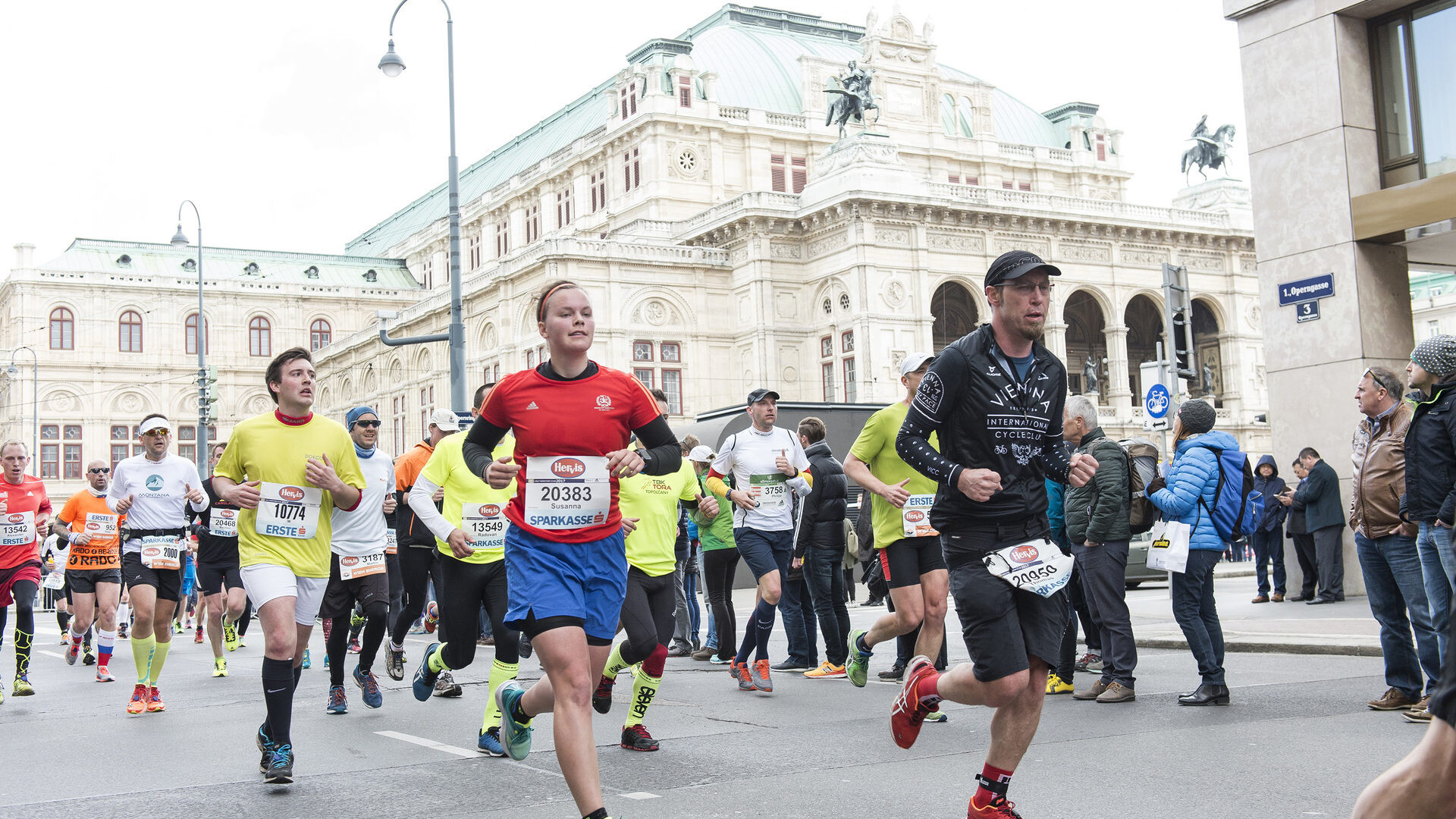
Organisers of the 39th edition of the Vienna City Marathon have registered more than 31,000 entries including events at shorter distances. Around 8,000 of them are marathon runners. The Vienna City Marathon is Austria’s biggest running event and a World Athletics Label Road Race.
The Vienna City Marathon will be streamed live from 8.30 am on Sundayat: www.vienna-marathon.com There will also be English live reporting of the elite races on the event’s Twitter account, which is accessible through the website as well.
"I have very good memories of Vienna and I am happy to be back. It is a good course and the people are fantastic,“ said Vibian Chepkirui, with her manager Julien di Maria of Ikaika helping her to answer the questions during the press conference.
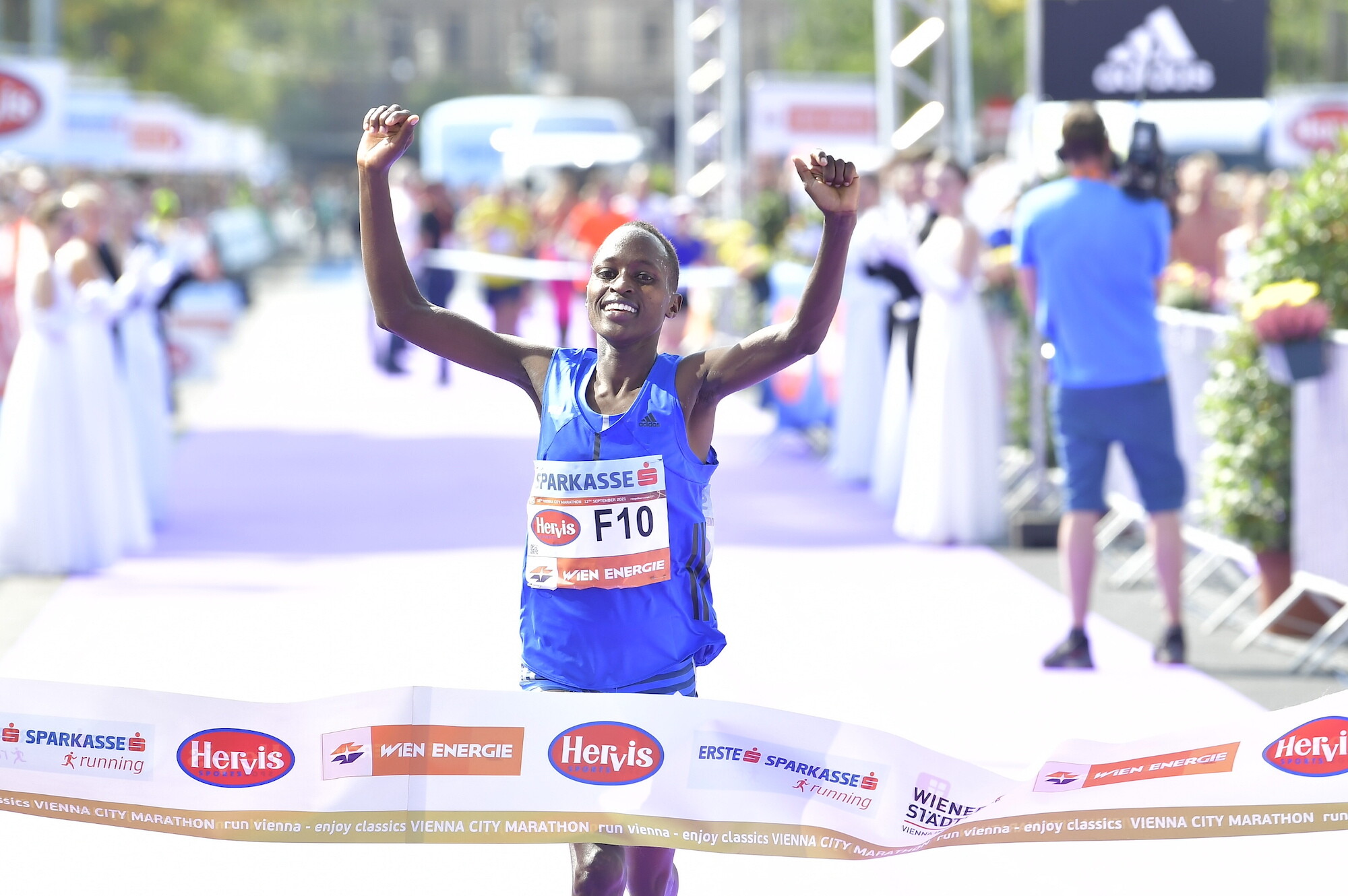
"I have prepared well and because of my training I think that in good weather conditions a time of around 2:20 is possible for me.“ As Julien di Maria explained Vibian Chepkirui became more confident when she saw the result of her training partner Joan Melly last Sunday: She won the Seoul Marathon with a course record of 2:18:04.
“Vibian and Joan always train together in Iten. And they are more or less on the same level. It was only during the final stages of some sessions when Joan was a little stronger than Vibian,“ explained Julien di Maria. Vibian Chepkirui has only run a single international race since her Vienna triumph in September and has fully focussed on defending her title in the Austrian capital.
The 27 year-old was fifth in Spain’s Santa Pola half marathon in January with 69:35. On Sunday she will again be paced by her husband Wesley Kangogo, who also acts as a pacemaker for the group when they are training in Iten.
There are four women with faster personal bests than the defending champion on the start list of the Vienna City Marathon. One of them is Ruth Chebitok, who has run 2:23:29 in Toronto in 2018. “I had injury problems for some time, but then ran quite well in Berlin last year with 2:28:18. Now I am well prepared and confident that I can run a time around my PB again,“ said the Kenyan.
The Vienna City Marathon is among a number of top road races that experienced an unusually high number of late cancellations. Goitom Kifle of Eritrea had to cancel his start because of an injury. He had been the fastest runner on the start list with a PB of 2:05:28. Another one who can not compete in Vienna is the defending champion Leonard Langat of Kenya.
There could still be a winner from Eritrea, which would be a novelty in the history of the race. Oqbe Kibrom is now the fastest runner on the start list with a PB of 2:05:53. The Eritrean, who held the national record for some time with his PB from 2020, looks ahead with confidence.
“I have trained well and hope to run a personal best on Sunday,“ said Oqbe Kibrom. The pace of the leading group will likely be perfect for him as it is planned to pass through half way in around 63:00. An attack on the course record would then still be possible. Ethiopia’s Getu Feleke holds this mark with 2:05:41 from 2014.
Cosmas Muteti might not be a pre-race favourite, but the Kenyan has developed very well recently. Coached by former world record holder Patrick Makau he improved to 2:08:45 in Berlin last year, where he took a fine fifth place in warm conditions. „Patrick is a good coach and I have improved under his guidance,“ said Cosmas Muteti, who targets his personal best on Sunday.
There is also an OPEC Fund Rookie Team competing in Vienna on Sunday. The idea is to give unknown African athletes a chance to compete internationally in Vienna and to support them to hopefully build a successful career. Victor Serem is the most experienced of the group. The Kenyan has a PB of 2:12:00 which he ran in Nairobi in 2019. “This will be my first marathon outside Kenya and I am grateful for the opportunity. I hope to improve to 2:10 on Sunday,“ said Victor Serem. The other three runners of the OPEC Fund Rookie Team are Kenya’s Dickson Kiptoo (PB: 2:23:56 in Eldoret), Fanose Tessema Gonfa and fellow-Ethiopian Chaltu Fikadu Marame.
Elite fields with personal bests
Men:
Oqbe Kibrom ERI 2:05:53
Abdi Fufa ETH 2:05:57
Raymond Choge KEN 2:08:11
Cosmas Muteti KEN 2:08:45
Weldu Gebretsadik NOR 2:09:14
Edwin Soi KEN 2:09:16
Charles Ndiema KEN 2:10:43
Lemawork Ketema AUT 2:10:44
Leonard Langat KEN 2:10:49
Noah Kipkemboi KEN 2:11:09
Victor Serem KEN 2:12:00
Anderson Seroi KEN 2:12:21
Mike Chesire KEN 2:13:28
Tomasz Grycko POL 2:13:30
Solomon Tesfamariam SUI 2:14:51
Abraham Kipyatich KEN Debüt
Timon Theuer AUT Debüt
Women:
Caroline Kilel KEN 2:22:34
Ruth Chebitok KEN 2:23:29
Sifan Melaku ETH 2:23:49
Sheila Jerotich KEN 2:24:15
Vibian Chepkirui KEN 2:24:29
Esther Kakuri KEN 2:26:11
Urge Soboka ETH 2:28:10
Nataliya Lehonkova UKR 2:28:58
Kellys Arias COL 2:29:36
Viola Yator KEN 2:30:03
Teresiah Omosa KEN 2:30:12
Benny Cheruiyot KEN 2:34:18
Neja Krsinar SLO 2:35:44
(04/22/2022) ⚡AMPVienna City Marathon
More than 41,000 runners from over 110 nations take part in the Vienna City Marathon, cheered on by hundreds of thousands of spectators. From the start at UN City to the magnificent finish on the Heldenplatz, the excitement will never miss a beat. In recent years the Vienna City Marathon has succeeded in creating a unique position as a marathon...
more...Allyson Felix’s shoe brand Saysh to offer “intentionally sexist” return policy for pregnant women
Days after Allyson Felix, the most decorated woman in track and field history, announced 2022 would be her last season of competitive running, she also implemented an industry-leading return policy for her shoe company, Saysh. The policy allows women to return shoes, no questions asked, should their foot size change during pregnancy (which commonly happens). If they need a new pair of shoes, new ones will be sent free of charge, in the proper size.
“A huge turning point in my life was becoming a mother—it opened my eyes to so much,” Felix told Footwear News this week. “As a runner, I have to pay attention to every little change in my body, and I went through a lot of change during pregnancy. I didn’t even realize that my feet could grow that much. I was tired of begging brands to meet me where I was, as both an athlete and a mother, and I was tired of sacrificing comfort and style. So I decided to make my own rules,” she says.
Advocating for all women, but especially athletes

Felix began actively advocating for pregnant women and athletes in 2019, when she spoke before the U.S. House of Representatives about the disparity in maternal mortality (which is significantly higher among Black women). Felix had serious complications while giving birth to Camryn, her daughter, in 2018, which moved her to outline the medical risks disproportionally experienced by African-American women.
Beyond advocating for better medical treatment for women, she also helped cause a pregnancy-policy reform across the sport of track and field when she spoke out against her former sponsor, Nike, in 2019. Felix said she felt pressure to come back to competing as soon as possible after giving birth, even though she had spent time in the hospital with preeclampsia (often characterized by high maternal blood pressure), and was not yet ready.
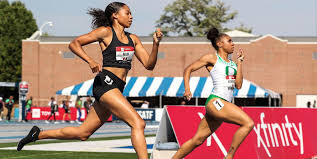
Make your own shoes
Shortly after speaking out against Nike and their lack of support throughout her pregnancy, Felix signed with clothing company Athleta. A few months later, she launched her own shoe company, Saysh.
Saysh is a company that aims to put women front and center, Felix said in a Ted Talk this week, “I feared that I would be forced to choose between motherhood and being a competitive athlete [when sponsored by Nike]. Getting pregnant in track and field has been called ‘this kiss of death.'” She continued to say that her mission is to help people to not “have to choose between parenting and doing the work that they love.”
The Saysh One, the first shoe Felix has brought to market, is $150 USD and comes in three colors.
(04/22/2022) ⚡AMPby Madeleine Kelly
Seven reigning global medalists to renew rivalry in Eugene 100m
The medalists from the men’s Olympic 100m and 200m finals in Tokyo, plus the men’s world indoor 60m final in Belgrade, will all clash in a stacked 100m field announced for the Prefontaine Classic, part of the Wanda Diamond League series, in Eugene on May 28.
Reigning Olympic champions Marcell Jacobs and Andre De Grasse will go up against Fred Kerley, Kenny Bednarek, Noah Lyles, Marvin Bracy and Christian Coleman, as well as Olympic 100m fifth-place finisher Ronnie Baker, at Eugene’s Hayward Field.
They will all be looking to make their mark ahead of the World Athletics Championships Oregon22 taking place in the same stadium in July.
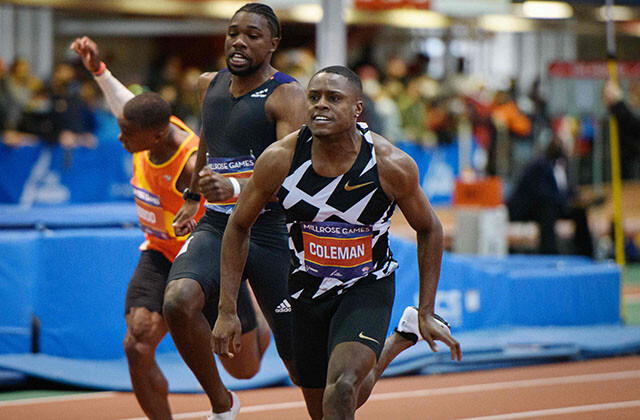
“I am honored and excited to be part of this year’s Prefontaine Classic at the University of Oregon in Eugene,” said Italy’s Olympic 100m champion Jacobs, who also claimed the world indoor 60m title in Belgrade last month.
“It’s going to be my first race in the US since the Tokyo Olympics and the adrenaline is already pumping. I can’t wait to feel the track beneath my feet.”
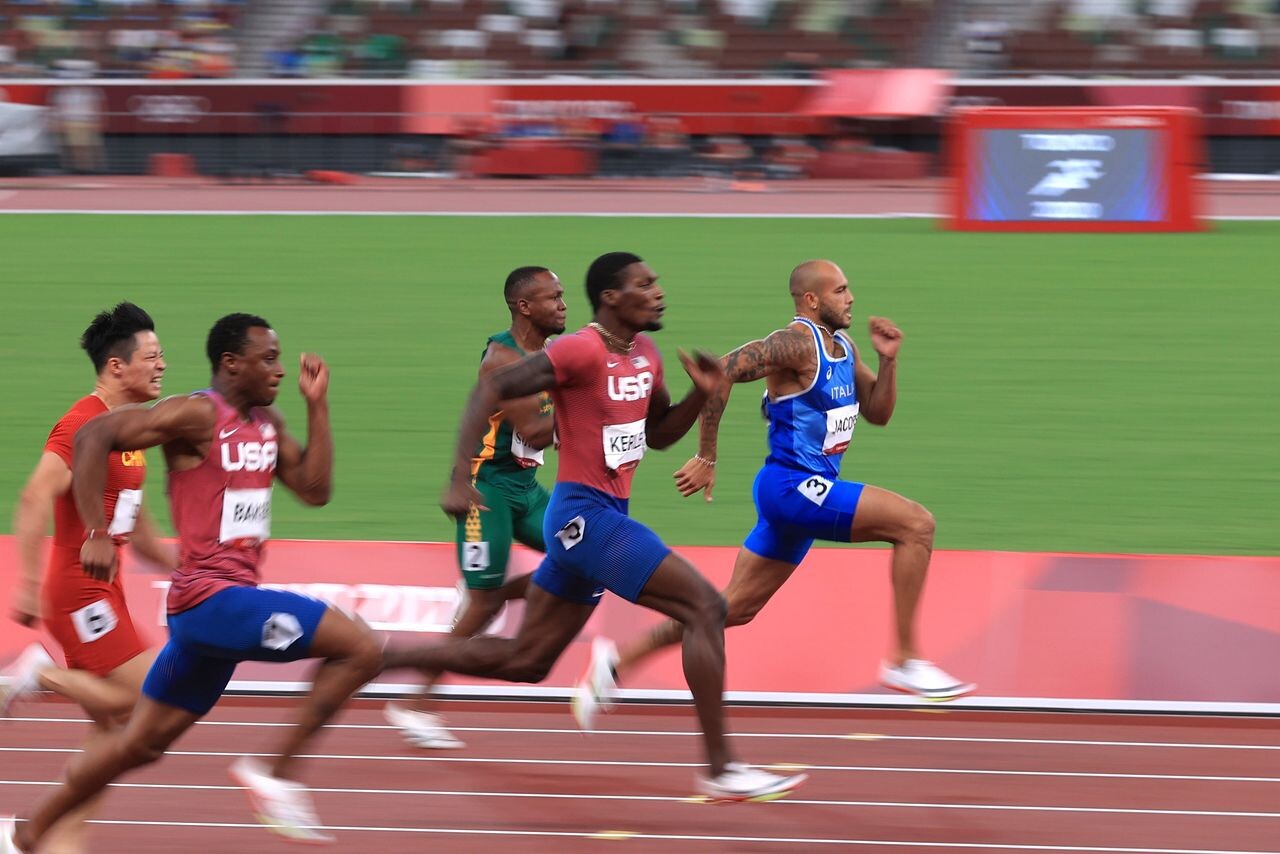
De Grasse won the 100m at last year’s Prefontaine Classic, a few weeks after becoming a three-time Olympic medalist in Tokyo. The Canadian claimed 4x100m silver and 100m bronze in Japan along with his 200m title.
Kerley secured 100m silver between Jacobs and De Grasse in Tokyo, while Bednarek gained silver and Lyles bronze behind De Grasse in the 200m. At the World Athletics Championships Belgrade 22, Jacobs was joined on the podium by silver medalist Coleman and bronze medalist Bracy.
The men's 100m is the latest in a number of strong fields announced for the Eugene meeting. All three Tokyo Olympic medallists – Athing Mu, Keely Hodgkinson and Raevyn Rogers – will race in the 800m, while champion Mondo Duplantis will take on his fellow Tokyo Olympic medalists Chris Nilsen and Thiago Braz in the pole vault.
Michael Norman, Michael Cherry and Kirani James will race the 400m, while Rai Benjamin and Alison Dos Santos will go head-to-head in the 400m hurdles and the 100m hurdles will pit Keni Harrison against Jasmine Camacho-Quinn. Yaroslava Mahuchikh and Nicola McDermott will renew their rivalry in the high jump.
(04/22/2022) ⚡AMPby World Athletics
Prefontaine Classic
The Pre Classic, part of the Diamond League series of international meets featuring Olympic-level athletes, is scheduled to be held at the new Hayward Field in Eugene. The Prefontaine Classicis the longest-running outdoor invitational track & field meet in America and is part of the elite Wanda Diamond League of meets held worldwide annually. The Pre Classic’s results score has...
more...Why distance runners should try training for the mile, Changing gears and training for a shorter distance can reinvigorate your training
Many runners tend to bump up to longer distances (like half-marathons and marathons) and then never look back, but if you’re in a rut, going shorter — a lot shorter — may be just what you need. In a training slump? Here are a few reasons why training for the mile could be the solution.
You’ll improve your form
Proper speed training will teach you how to run with good form. Many people assume that high-intensity, fast running is what causes injuries, but more often than not, injuries occur when your form starts to fall apart in the latter stages of a long run or race, or from overuse after weeks of very high mileage.
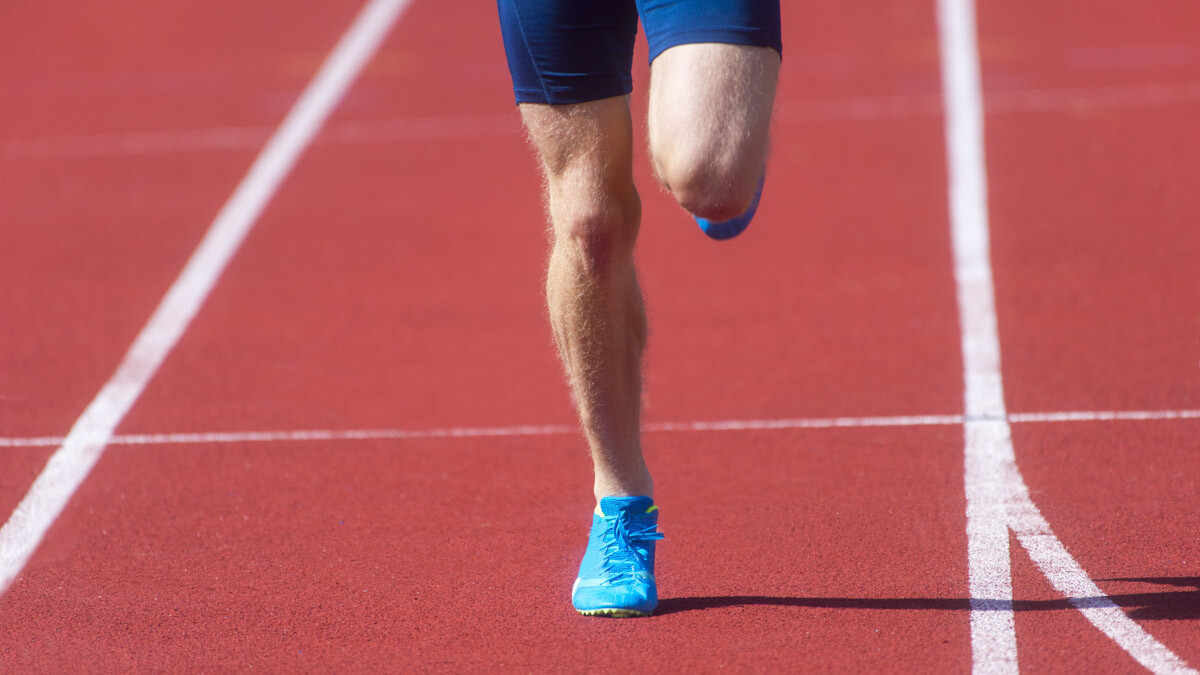
When training for the mile, it’s very helpful to enlist the help of a coach, who can give you guidance on proper running technique (and how to effectively practice it) so you can get the most out of this type of training.
You’ll get stronger
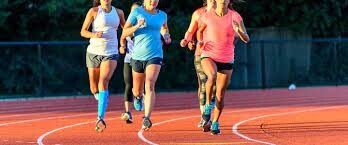
Speedwork is one of the best ways runners can build sport-specific strength. Mile training challenges your aerobic system, it also puts more stress on your mechanical system, since you’re running at a much faster pace than you would in a 5K or longer. This allows you to build the strength you need to maintain good running form over longer distances.
You’ll improve your lactate threshold
To run well in the mile, you need to have a very high lactate threshold, which allows you to run at faster speeds for much longer. Mile training programs are designed specifically to do this, which is also very beneficial for longer distances, since it will allow you to run faster in the 5K, 10K or even the marathon without hitting your breaking point.
It’ll bust you out of a rut
Training for the same distance over and over again can start to get stale, which can often lead to a plateau in performance. If this is the case for you, changing things up and training for something completely different than what you’re used to may be exactly what you need to reinvigorate your training and get you excited to lace up your shoes again. At the very least, doing some tough mile workouts will allow you to appreciate those marathon-pace workouts when you bump back up in distance again.
If you’re thinking of giving the mile a try, we highly recommend hiring a coach, or at the very least, following an online training program to make sure you do it properly. This will ensure your training is effective and that you stay healthy so that when you do decide to try a longer distance again, you’ll be ready for it.
(04/22/2022) ⚡AMPby Running Magazine
2022 Maui Marathon celebrates return, 50th year this Sunday
The long wait for the return of the Maui Marathon, celebrating its 50th year, is almost over.
Race director Jon Emerson said Tuesday that the Valley Isle Road Runners board, volunteers and runners are ready to hit the pavement from Kahului to Kaanapali on Sunday as the race is conducted in person for the first time in two and a half years due to the pandemic.
“We have all been under the umbrella of COVID for over two years, but this weekend, people finally have the opportunity to break out from under that umbrella and enjoy being with others as an organized group,” Emerson said. “We can’t wait to host the Maui Marathon again for family and friends and the whole running community.”
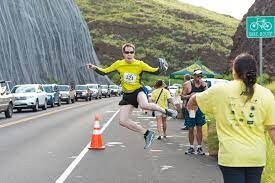
The Maui Marathon includes the marathon, half marathon, 10- and 5-kilometer run/walk, and a four-person marathon relay, and is the longest consecutively held running event in the state, according to the race website.
The Maui Marathon would have celebrated its 50th year in October 2020, but the event was canceled due to COVID health and safety protocols. It switched to a virtual event in April 2021.
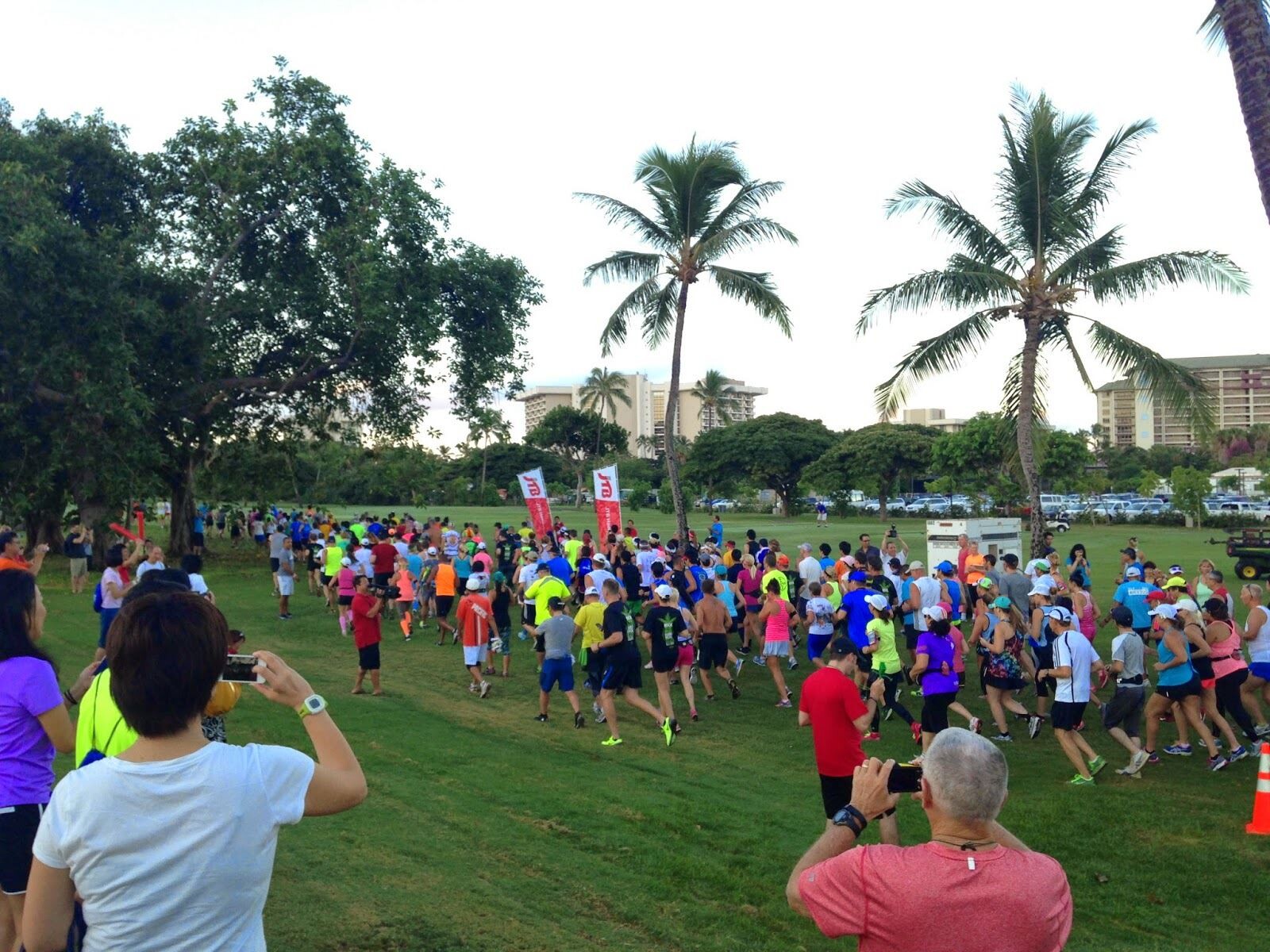
To keep consistency in the future, the Maui Marathon will permanently become a spring race held in April.
There are about 2,000 people who registered for the event this year, Emerson said. The races usually attract another few thousand spectators.
The 26.2-mile race begins at 5 a.m. at the Old Sugar Mill on Maui Veterans Highway in Kahului. Runners will then embark over the pali heading to West Maui, winding through Lahaina and finishing in the Ka’anapali Beach Resort.
The other races will start at 5:30 a.m. and end at the resort for a out-and-back route.
“I’m very excited to see so many people running with other runners and enjoying the outdoors in the fresh air as the sun comes up,” Emerson said. “This is going to be a great, family-friendly day that many of us have been waiting for.”
There will be a packet pickup at the Ka’anapali Beach Hotel in the Ohana Room on Friday from noon to 6 p.m. and from 9 a.m. to 5 p.m. on Saturday.
Though online registration is closed, late race entries will be accepted at packet pickup.
Race course director Jim Lynch said that drivers should expect traffic delays, road closures and re-routing throughout the morning of the event and until approximately 1:30 p.m. Sunday. Several off-duty Maui police officers will be posted throughout the course directing traffic and drivers are asked to be aware of runners on the road.
Virtual runners can participate by choosing between the distances and run any route anytime from now until April 30.
A pre-race 3-mile shakeout run with Jackie and Martin of Level Up Maui is set for 6:30 a.m. on Saturday in front of the Ka’anapali Beach Hotel.
For more information, visit mauimarathon.com.
(04/21/2022) ⚡AMPby Dakota Grossman
Maui Marathon
The Maui Marathon features one of the most scenic courses in the world – a point-to-point route that starts in Kahulu, passes sugar cane fields, and then hugs the spectacular Pacific coast line for more than 17 breath taking miles before the race finish in Ka’anapoli. Scenic beauty, however, is only one of the things this event has going for...
more...Aliphine Tuliamuk, Jared Ward, Caroline Rotich and Abdi Abdirahman are ready to race the streets of Pittsburgh
Aliphine Tuliamuk, Jared Ward and Abdi Abdirahman are ready to race the streets of Pittsburgh in the UPMC Health Plan Pittsburgh Half Marathon, scheduled for Sunday, May 1. Each of the members of this talented trio have a special connection to the City of the Champions and will embrace the city’s renowned sports fans and spectators to help them shine on race day.
Men’s Division
Ward and Abdirahman lead a talented field of top international and American runners who will be competing for the $10,000 top prize. Abdirahman, who is a 5-time Olympian, has never been to Pittsburgh but is a big fan of the city.
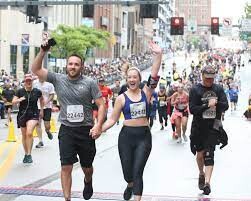
“It has been a dream of mine to race in Pittsburgh,” Abdirahman said. “It will be my first time in the city, and I am a big Steelers fan. I am looking forward to running the Pittsburgh Half Marathon. Training has been going great leading to this race, and I am excited to test my fitness.”
Ward will finally make his Pittsburgh racing debut after planning to run in 2020 and 2021 before the in-person events were canceled both years. He is excited to return to the city, which he hasn’t visited since he spent two years on Mormon mission after high school.
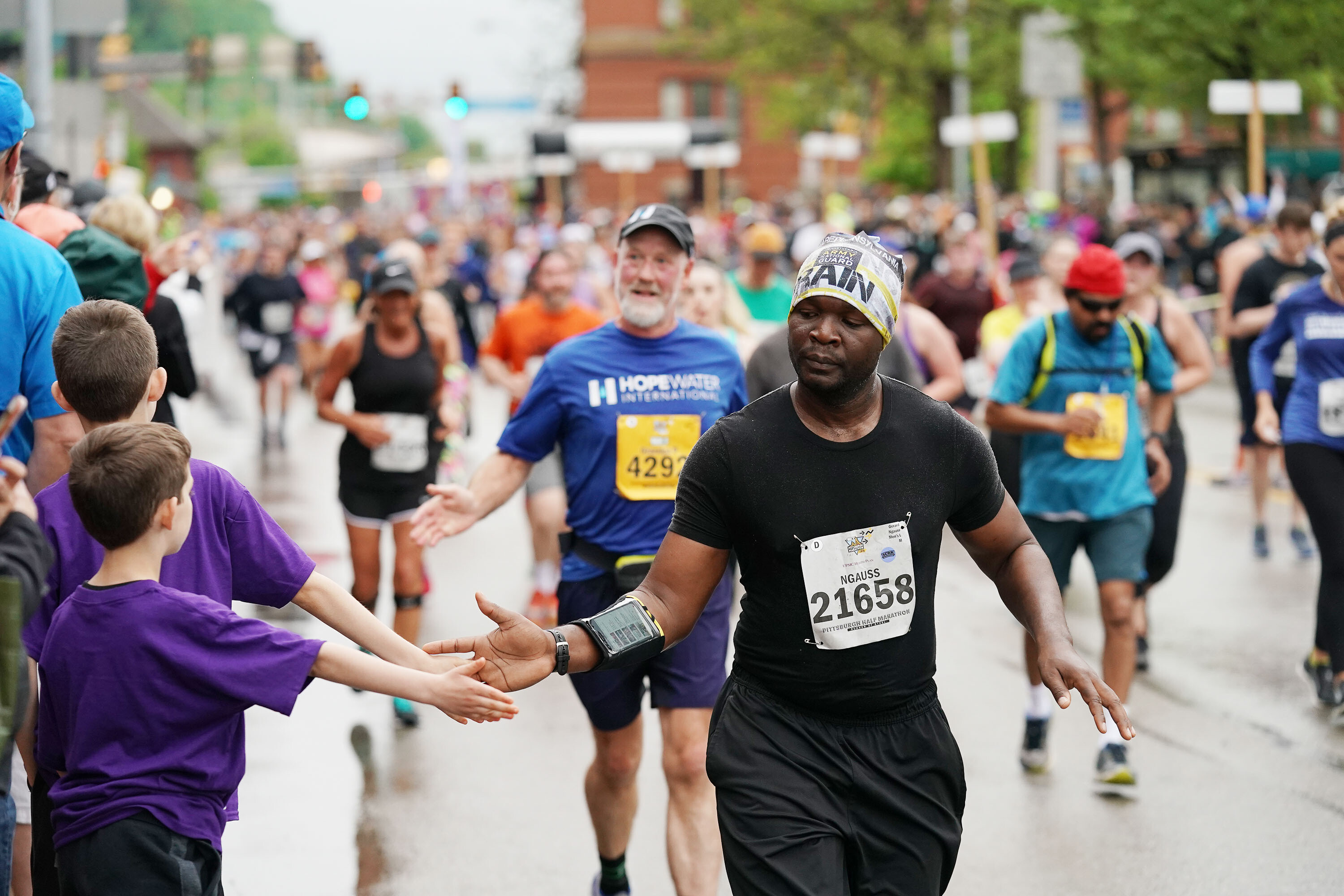
“I’m beyond excited to return to Pittsburgh,” Ward said. “I feel like I grew up here, while serving a mission for the Church of Jesus Christ of Latter-day Saints. I look forward to seeing friends and touring around ‘dahntahn’ – this time on the streets as a runner.”
Joining Abdirahman and Ward in the men’s race is James Ngandu of Kenya, who earlier this year won the Houston Marathon, and American Lawi Lalang, an eight-time NCAA champion who holds a half-marathon personal best of 1:02:49. Wesley Kiptoo, who was the 2021 NCAA Indoor National Champion at 5,000 meters, will also make his half-marathon debut at the event. Local runners Colin Martin, who holds a personal record of 1:05:19, and Nick Wolk, who won the 2021 Richard S. Caliguiri City of Pittsburgh Great Race 5K and 10K, will also race.
Women’s Division
Aliphine Tuliamuk is excited to return to Pittsburgh to run her first race since the Tokyo Olympics. In 2015, she ran her first marathon at the DICK’S Sporting Goods Pittsburgh Marathon, finishing in second in 2:34:44. She returned in 2018 to win the USA Half Marathon Championships.
“Pittsburgh has become a special city for me,” Tuliamuk said. “It’s where I learned that the marathon was painful but worth the struggle. Winning the 2018 USATF Half Marathon Championship gave me much needed confidence as I built toward the 2020 U.S. Olympic Trials. This year I am hoping for the same competitive atmosphere that Pittsburgh always brings. It will be my first race in a while, and I wanted to come to a place where I feel comfortable.”
Her speed will be tested against Caroline Rotich, who won the 2015 Boston Marathon and has a half-marathon personal best of 1:08:53.
“This will be my first time coming to Pittsburgh,” Rotich said. “It’s always exciting to travel to new places and Pittsburgh has been on my bucket list. I’m motivated to capitalize on my training this spring, rather than refocus on another marathon. I am feeling fit and ready to run fast in Pittsburgh.”
The field also includes Jordan Hasay, who is the fourth fastest U.S. women’s marathoner of all-time and Canadian cross-country skier and Olympian Anne Marie Comeau. Local Pittsburgh runner Margo Malone, who ran in the 2020 U.S. Marathon Olympic Team Trials, will also compete.
This year’s UPMC Health Plan Pittsburgh Half Marathon offers a prize of $58,000, including $10,000 each for the top men’s and women’s finishers. For the first time, the event has been awarded a World Athletics Road Race Label. Only five other U.S. races carry a label from World Athletics.
About the DICK’S Sporting Goods Pittsburgh Marathon Weekend of Events
The Pittsburgh Marathon was held annually from 1985-2003. After a five-year hiatus, the DICK’S Sporting Goods Pittsburgh Marathon was relaunched in 2009 and debuted with a sold-out field of 10,000 participants. It has grown each year since, evolving from a single race day into a weekend of events for the whole family that annually attracts nearly 40,000 runners.
For more information about the 2022 DICK’S Sporting Goods Pittsburgh Marathon Weekend of Events, visit www.thePittsburghMarathon.com.
(04/21/2022) ⚡AMPby Running USA
Dick's Sporting Good Pittsburgh Marathon
This race is your game - however you decide to play it. As a competitor. A fund raiser. An enthusiast. A veteran. A team player. It's whatever you want it to be. It's whatever you make it. It's YOUR game..... Run it. Play it. Own it. Love it. Runners will race on the North Shore of Pittsburgh, cross each of...
more...Yalemzerf Yehualaw among strong field of elite runners in Hamburg
The Haspa Marathon Hamburg returns to its traditional spring date on Sunday for the first time since 2019 with probably the strongest elite fields in the history of the event. Last year’s race was held under strict Covid regulations with less than 5,000 runners and almost no elite athletes.
The event on Sunday (April 24) will be the complete opposite: Including events at shorter distances organisers registered over 20,000 athletes from 65 nations and the elite fields boost eleven runners with personal bests of sub 2:08 and seven women who ran below 2:27. However the star name on the start list is not among them: Ethiopia’s 10k world record holder Yalemzerf Yehualaw will run her much anticipated debut at the Haspa Marathon Hamburg.
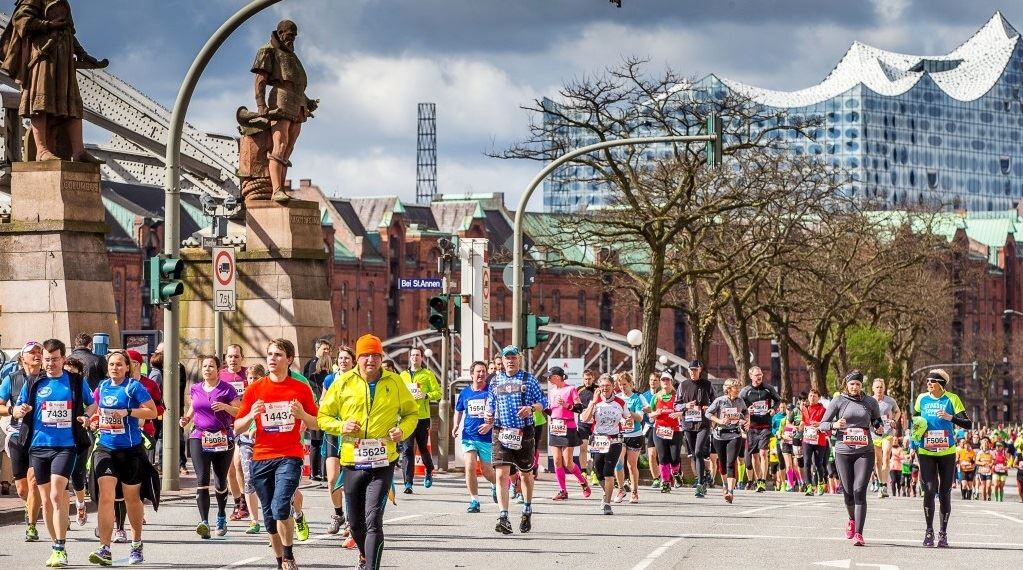
Germany’s biggest spring marathon, which will see its 36th edition, will be streamed live worldwide on Sunday from 9.20am (European time) at: www.haspa-marathon-hamburg.de
“We are happy to be back in the spring with a large race and with a very strong elite field. I am really looking forward to some very good performances. We hope to see a women’s course record on Sunday,“ said chief organiser Frank Thaleiser.
The city of Hamburg might well be the place to see a new marathon star emerge on Sunday. And it would not be the first time this happens in the “Hansestadt“: Kenya’s superstar Eliud Kipchoge won his marathon debut here in 2013 with 2:05:30 which is still the course record.
Could Yalemzerf Yehualaw start an extraordinary marathon career in Hamburg as well? The 22 year-old Ethiopian brings all the requirements and characteristics for success in the marathon. With a half marathon PB of 63:51 she is the second fastest ever at this distance. Additionally Yalemzerf Yehualaw smashed the 10k world record this February with 29:14 in Castellon, Spain.
“Yalemzerf has trained well and we are looking forward to a promising and interesting marathon debut,“ said Jurrie van der Velden, who is the elite coordinator of the Haspa Marathon Hamburg.
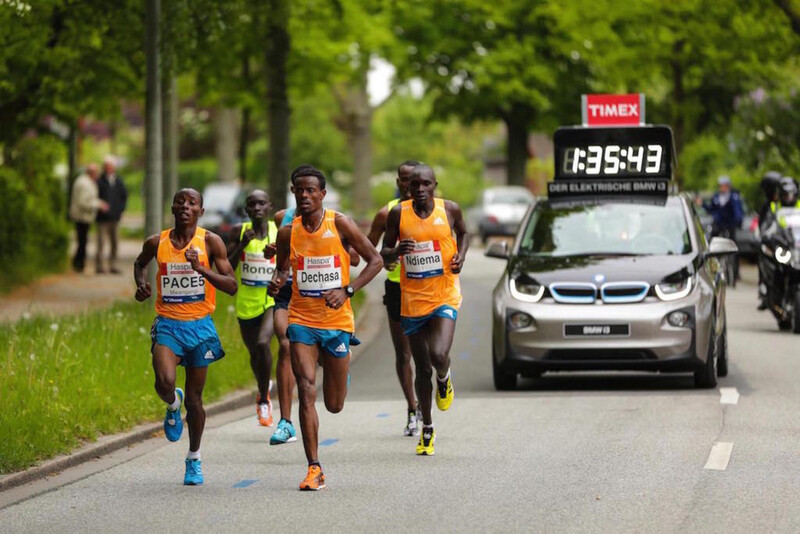
Unfortunately Yalemzerf Yehualaw’s flight to Hamburg was delayed so that she missed the press conference on Thursday. The Ethiopian could produce one of the fastest debuts ever and break the course record. Fellow-Ethiopian Meselech Melkamu is the current course record holder with a time of 2:21:54 from 2016. Despite running her debut Yalemzerf Yehualaw must be regarded as the favourite.
While the Olympic silver medallist of the London Games in 2021, Priscah Jeptoo of Kenya, is the fastest on the start list with 2:20:14 there are two women in the field who have won the Haspa Marathon Hamburg. Gadise Mulu is the defending champion and fellow-Ethiopian Dibabe Kuma, who took the race in 2019, is the second fastest on the start list with her PB of 2:23:24.
While the elite women often have their individual pacemakers Jurrie van der Velden hopes that a group of athletes will run together for at least the first half of the race. “The pace for this group will likely be between 70:30 and 71:00,“ he said.
Deborah Schöneborn and Kristina Hendel are the the top German runners in Hamburg. Schöneborn, who achieved a strong 18th place in the Olympic marathon last year, has a PB of 2:26:55. However she carried an injury during the winter months and is probably not yet at her best. Hendel has received German citizenship and hopes to be eligible to compete for Germany at the European Championships. Internationally at the moment she is still registered as Croatian. Kristina Hendel ran a 2:27:31 debut marathon last autumn and hopes to improve to around 2:25 in Hamburg.
Three men will be going to the starting line on Sunday knowing they have run faster than Eliud Kipchoge’s Hamburg course record of 2:05:30. Since Guye Adola had to withdraw due to an injury fellow-Ethiopian Abebe Negewo, who was also known as Abebe Degefa, now heads the start lists with a PB of 2:04:06 which he ran in Valencia in 2019. With Ethiopia’s Tsegaye Mekonnen the winner of the Haspa Marathon Hamburg 2017 returns.
He still is the unofficial world junior record holder with a time of 2:04:32. It was around half a year ago when Barselius Kipyego of Kenya clocked his PB of 2:04:48 in Paris.
“For a number of athletes this will be their first major international race since the start of the pandemic. We hope that they will do very well,“ said Jurrie van der Velden. “The weather looks good at the moment. If it is like this on Sunday we are optimistic to see times of around 2:05.“
Philipp Pflieger, who has a personal best of 2:12:15, and Johannes Motschmann carry national hopes on Sunday. Motschmann ran 2:12:18 in Rotterdam last autumn and showed promising form recently at the Berlin Half Marathon where he improved to 61:45. As a number of other athletes he hopes to achieve the qualifying standard for the World Championships of 2:11:30 in Hamburg.
Elite runners with personal bests
Men:
Abebe Negewo ETH 2:04:06
Tsegaye Mekonnen ETH 2:04:32
Barselius Kipyego KEN 2:04:48
Dejene Debele ETH 2:05:46
Simon Kipkosgei KEN 2:07:07
Cybrian Kotut KEN 2:07:11
Bernard Ngeno KEN 2:07:18
Amos Mitei KEN 2:07:28
Workineh Tadesse ETH 2:07:42
Abrar Osman ERI 2:07:46
Mustafa Kedir ETH 2:07:49
Alfred Koech KEN 2:09:01
Victor Kiplangat UGA 2:10:18
Bazezew Asmare ETH 2:10:51
Masresha Bere ETH 2:10:55
Arturo Esparza MEX 2:11:04
Philipp Pflieger GER 2:12:15
Johannes Motschmann GER 2:12:18
Gasper Csere HUN 2:14:34
Dario Castro MEX 2:14:51
Marco Salami ITA 2:14:57
Stephen Kissa UGA Debut
Ronald Kirui KEN Debut
Ibrahim Hassan DJI Debut
Filimon Abraham GER Debut
Women:
Priscah Jeptoo KEN 2:20:14
Dibabe Kuma ETH 2:23:24
Carla Rocha POR 2:24:47
Tseginesh Mekonnen ETH 2:24:50
Gadise Mulu ETH 2:26:20
Alice Cherono KEN 2:26:51
Deborah Schöneborn GER 2:26:55
Kristina Hendel CRO 2:27:31
Rosa Chacha ECU 2:28:17
Andreia Hessel BRA 2:34:55
Maria Sagnes Wagan NOR 2:35:34
Camilla Elofsson SWE 2:35:37
Yalemzerf Yehualaw ETH Debut
Alia Mohamed UAE Debut
(04/21/2022) ⚡AMPHaspa Marathon Hamburg
The HASPA MARATHON HAMBURG is Germany’s biggest spring marathon and since 1986 the first one to paint the blue line on the roads. Hamburcourse record is fast (2:05:30), the metropolitan city (1.8 million residents) lets the euphoric atmosphere spill over and carry you to the finish. Make this experience first hand and follow the Blue Line....
more...Big Sur International Marathon makes its return Sunday
Three years is a long time to wait at the starting line. But the Big Sur International Marathon is raring to go.
Canceled in both 2020 and 2021 because of COVID-19 safety concerns, the world-renowned race returns this weekend, where a sold out slate of about 9,800 entrants will take part.
“It feels good to be back,” said Doug Thurston, race director and executive director of the Big Sur Marathon Foundation, which organizes both the Big Sur International Marathon and Monterey Bay Half-Marathon each year. “Runners have responded well, and we’re ready for a great race.”

Speaking to an unabated enthusiasm for the event, Thurston explained that racing slots filled as quickly – if not quicker – than they “ever had before.” The Big Sur International Marathon has sold out in each of the past 10 years it has been held. To the excitement of Thurston, the Big Sur Marathon Foundation, and a more than 100-person organizing committee that manages the event year-round, 2022 proved to be no different.
“It’s a great testament to our volunteers and the community,” said Thurston. “The scenery can’t be beat, but good scenery doesn’t mean a great race. Great volunteers and community support for more than 30 years speaks volumes to how important the race is. (And) they’re anxious to provide a world-class experience to people this weekend.”
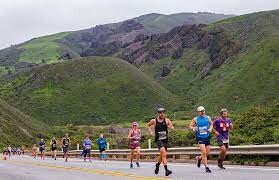
The much-anticipated affair will kick off early Sunday morning, with marathoners taking their mark at Big Sur Station at 6:35 a.m. Beyond the 26-mile, 365-yard scenic stretch along Highway 1, runners are set to take part in a host of other races happening alongside the big distance, including a 21-miler, 11-miler, 12K and 5K. All are set to commence before 8 a.m. Sunday.
Though years have passed since runners were last invited to skirt the Big Sur coastline, Thurston said the course itself is reminiscent of previous races, barring a few recent upgrades meant to render routes safer. Those include a freshly paved roadway and a revamped starting line process, Thurston said.
Yet, what may bring an added element of notoriety to this year’s slate of races – apart from the anticipation of their return – is an enhanced backdrop, Thurston continued, even if topping the peak of picturesque is hard to imagine.
“I think these mid-spring rains that we had last weekend and are anticipating over the next couple of days will make this one of the most green and most spectacular races for runners to enjoy,” he explained. “There’s going to be some special color along hills with wildflowers and things. … It’s going to be beautiful.”
Entrants set to relish in the panoramic trek include five-time Big Sur International Marathon men’s champion Adam Roach, defending 2019 men’s champion Jordan Tropf and elite runner Ben Bruce. Between the three, Thurston is anticipating an “interesting” race, particularly among Tropf and Bruce, who both just competed in the Boston Marathon Monday.
The Big Sur International Marathon includes a special category for those runners determined enough to take on both events: Boston 2 Big Sur. Attracting 400 of the world’s fittest athletes, the challenge combines Boston and Big Sur chip times and awards participants for their pace across the two marathons. This year, the races are less than six days apart. That’s more than 52 miles of running in the span of a week.
Besides those poised to push racing limits, Thurston said he’s particularly looking forward to a group of runners he dubs the “grizzled veterans,” who have participated in every Big Sur International Marathon since it started in 1986.
Still, Thurston said well over a majority – more than 80% – of entrants in the races each year are first and only timers to the event.
“For thousands and thousands of runners, this is their one opportunity to experience something like this,” he said.
That desire to check off the Big Sur International Marathon on a larger running bucket list, Thurston added, is a factor in why 30% of runners previously entered in the canceled 2020 event returned this year to finally satisfy their ambition. These already listed entrants had priority coming into the 2022 race. Thurston is glad to see some retain their racing plans two years later.
“People had invested time and energy in preparing for the race,” he said. “Nobody knew in the summer of 2019 when folks registered that there would be a pandemic in late winter of 2020. …But it was canceled five to six weeks before they could participate. Now they can look forward to doing it again.”
For non-runners looking to watch, the only spectating opportunity will be at the finish line at Rio Road in Carmel. There will be no points to watch at the start or along the course. Non-official bicycles are likewise not allowed Sunday. While the marathon goes on – which is bound to a six-hour course limit – Highway 1 will be closed to traffic. It will reopen at 1 p.m. Sunday.
While proof of vaccination or recent negative test will not be required to attend the event per current county guidelines, organizers are strongly encouraging all entrants and attendees to arrive fully vaccinated or be tested for COVID within 48 hours of their visit if unvaccinated. Thurston also noted that masks will be worn on buses carting runners to the starting line. Those taking part in Friday and Saturday’s pre-race Health and Fitness Expo at the Monterey Conference Center will also be asked to wear masks, Thurston said.
More information about this weekend’s Big Sur International Marathon can be found at https://www.bigsurmarathon.org/.
(04/21/2022) ⚡AMPby Tess Kenny
Big Sur Marathon
The Big Sur Marathon follows the most beautiful coastline in the world and, for runners, one of the most challenging. The athletes who participate may draw inspiration from the spectacular views, but it takes major discipline to conquer the hills of Highway One on the way to the finish line. Named "Best Marathon in North America" by The Ultimate Guide...
more...Should I base my training off of RPE? Rate of perceived exertion is a great way to monitor your effort levels without the tech, and can help you out of a slump
There are many ways to measure your effort levels on a run: pace, heart rate and blood lactate levels are just a few. Rate of perceived exertion (RPE) is often overlooked by runners in favour of more data-driven approaches but it’s a valuable tool to gauge your effort level and control your pace for different types of runs during your training.
What is RPE?

RPE involves measuring how hard you’re working, typically based on a scale of 1-10, with 1 being no activity and 10 being an all-out sprint. It’s a great way to get in touch with your body and monitor your effort levels without relying on technology or getting too caught up in the numbers.
No two runs are the same, and every day your performance could be affected by a number of internal and external factors, including weather, what type of shoes you’re wearing, the terrain, your own fatigue levels, how well-fueled you are and even how motivated you are to train. The advantage of RPE is that it accounts for all of these factors. One day, you could be running at 5 minutes/kilometre and you might put yourself at a 5 on the RPE scale, while on another day the same pace could feel more like a six or seven.

RPE vs. HR
Heart rate (HR) training is a close cousin to RPE. There are a few similarities, namely that both account for the internal and external factors that could affect your body on a run. This is because in general, your heart rate tends to correspond quite nicely with RPE, with a few notable exceptions:
It may not work for new runners or de-conditioned runners. When you’re first starting out (or coming back after a long layoff) and you don’t have a high degree of running fitness, your heart rate will climb much higher and faster than a well-trained athlete. You might be running at what you feel is a five or six on the RPE scale, but your heart rate might be much higher, suggesting you’re running at a much higher intensity.
It may not be accurate in the heat. When it’s really hot outside (and especially when it’s humid), your heart rate will be much higher than in the cool weather, even if you’re running at an intensity that feels easy or moderate.
Cardiac drift could affect your heart rate data. It’s normal for your heart rate to naturally drift upward during a run, even if you maintain the same pace throughout the entire thing. It’s mostly caused by the natural rise in body temperature as you run, and can cause a heart rate increase of up to 10-20 beats per minute, even if your effort level stays the same.
The advantages of RPE
While there are many reasons to use heart rate or other metrics to measure your effort level, there are a number of advantages to using RPE:
You don’t need any gadgets. For the runner who prefers to go tech-free, RPE is great because it doesn’t require a watch, heart rate monitor or any other gadgets.
RPE accounts for other external factors. Your heart rate can be affected by sleep, stress, caffeine, warm temperatures, warm temperatures and even some medications. RPE takes these factors into account, allowing you to push yourself to the right level within those specific circumstances.
It helps you listen to your body. One of the best weapons for any runner is understanding your own body and learning its signals, so you know when to push yourself harder and when to back off. This will help you avoid injuries and overtraining, which will ultimately improve your performance.
Disadvantages of RPE
RPE is a great way to measure effort and intensity for most runners, but there are a few disadvantages:
For sedentary people. If you’re just starting to run after being mostly sedentary, even a slow, short run is going to feel difficult. Once you’ve been running for a while and your fitness starts to improve, you’ll be able to use the scale more effectively.
It’s subjective. Without actual numbers, RPE is difficult to accurately measure, and some people will underestimate their effort while others may overestimate it.
The bottom line
RPE is an excellent tool for runners to measure their effort because it takes into account the internal and external factors that may affect your ability to perform. While many runners prefer to use a more data-driven approach to their training, RPE can help you bust out of a slump by teaching you to listen to your body so you know when to go hard and when to back off.
(04/21/2022) ⚡AMPby Brittany Hambleton
Former athlete Catherine Makau aiming to produce world beaters
When former athlete Catherine Makau visited the hilly area of Kea in Kitui County to distribute food to athletes in September, 2020 during the height of Covid-19, she was met with extraordinary scenes.
Over 300 athletes turned up for the exercise and it left Catherine’s mind brimming with ideas.
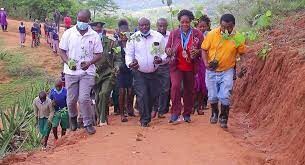
“As a former athlete, I saw potential, this being a high altitude area with lovely weather,” said Catherine, who is the wife of former world marathon record holder, Patrick Makau.
Catherine decided to start an athletics camp in the area in January last year, and the camp that is the latest in the country, now has over 60 athletes both junior and seniors.
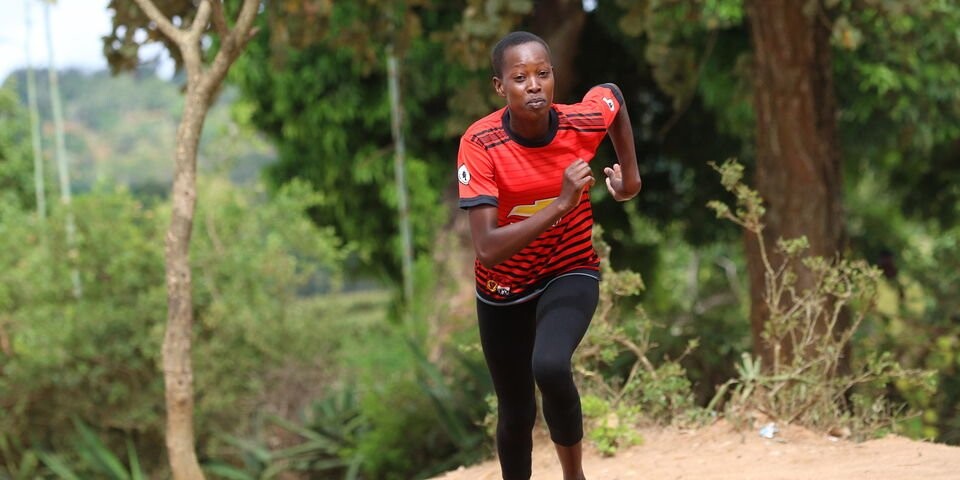
Kea Athletics Club is among three that were picked by Athletics Kenya to host holiday camps in the Southern region to prepare juniors for the World Under-20 Championships trials.
The others are Iuani Athletics Club in Makueni County and Talent Discovery and Development Centre, Machakos County.
Catherine is confident that just like Iuani and Machakos, they will be able to not only compete effectively during the trials, but also qualify some athletes for the world event.
Machakos produced seven athletes for the World Athletics Under-20 Championships held last year in Nairobi.
The World Under-20 Athletics Championships are slated for August 1 to 6 this year in Cali, Colombia.
Among the athletes that Catherine singled out from her pool of 20; 10 boys and 10 girls, are the 1,500m runner Josephine Kalekye, who finished fourth in the girls under-18 5km race during the Memorial Agnes Tirop World Athletics Cross Country Gold Tour in February.
Naomi Kimanzi (3,000m), Joshua Kithoku (5,000m), Alexander Matiti (1,500m) are the others with great potential to make Team Kenya.
“I only pray for an injury free season and hope to represent Kenya,” said Kimanzi, who finished seventh in women’s Under-20 6km race during the National Cross Country Championships in January in Eldoret.
“I want to emulate the World 5,9000m champion Hellen Obiri.”
Nelson Mandela (3,000m/5,000m), who finished fourth in men’s 10,000m during the third Athletics Kenya Track and Field Meeting at the Nyayo National Stadium, is among 50 juniors preparing at Iuani hills.
Others are Justus Muasya (1,500m) and Dennis Mutuku (3,000m).
Other juniors not in camp, but likely to make the Iauni team are Emmanuel Lemama and Faith Salome (800m).
Lemama, who finished second in men’s 1,500m to qualify for last year’s world under-20, but was later dropped due to injury, is currently at the Kenya Defence Forces Recruit Training College, while Salome is attending the Elite Youth Camp by the National Olympic Committee at Kenyatta University.
Machakos once again should provide a huge number from Southern to Team Kenya including Peter Kithome, who claimed bronze in 4x400m at the world under-20 and Jonathan Mutua.
Kithome and Mutua are currently with Kenyan juniors receiving specialised training at Miramas Athletics Club in France.
Javelin thrower Christine Musembi looks promising from Machakos alongside Jackline Mikayo (200m), Damaris Nduleve (400m), Agnes Syometi (400m hurdles), Sebastian Sinoti (400m) and Alex Nzioka (3,000m).
(04/20/2022) ⚡AMPby Ayumba Ayodi
400m workout to build strength and speed endurance
The key to running well over long distances is having the right balance between strength, speed and endurance. All three of these factors need to be cultivated over time through plenty of slow, easy mileage, as well as workouts like these 400m repeats. Unlike your classic 400m workout, the rest after each interval is slowly diminished, giving you less and less recovery time to build your strength and endurance while running fast.
Less rest for a big payoff
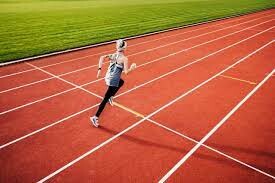
This workout is tough, but it’s an effective way to cultivate the skills you need to run well at the 10K or half-marathon distance. Both races are short enough that you can still attack them with some speed (especially the 10K) but long enough that you need a solid amount of endurance to make it to the end.
In each set, you take 60 seconds of rest after the first interval, 45 seconds after the second and 30 seconds after the third. The goal is to maintain your pace during each interval, despite the shorter recovery time. If you’re training for a 10K, aim to do two sets at 10K pace, and if you’re training for a half-marathon, aim for three sets at half-marathon pace (or faster, if you have it in you near the end).
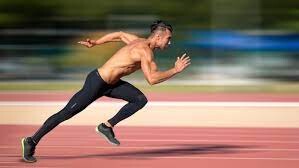
The workout
Warmup: 15-20 minutes easy jog, followed by form drills and strides.
Workout: 2-3 x (400m/60 sec rest/400m/45 sec rest/400m/30 sec rest/400m), take 3-4 minutes between each set.
Cooldown: 10-15 minutes easy jog, followed by light stretching.
(04/20/2022) ⚡AMPby Running Magazine
Boston Marathon race director Dave McGillivray completes his 50th Boston Marathon
On Monday afternoon, long after Lawrence Chebet and Peres Jepchirchir stormed to victory through the streets of Boston, race director Dave McGillivray crossed the finish line of the Boston Marathon for the 50th time.
McGillivray has been an avid runner for most of his life. He’s organized and completed multiple massive charity runs (including an 80-day, 3,452-mile run from Oregon to Massachusetts), competed in nine Ironman triathlons and ran, cycled and swam for a total of 1,522 miles through the six New England states.
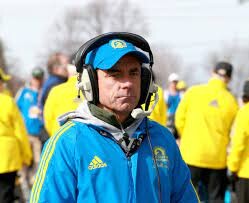
The first time McGillivray ran the Boston Marathon was in 1973 when he was 19 years old. He ran it with all the other runners for the next 16 years (including in 1982, when he ran 3:14 while blindfolded and escorted by two guides to raise more than $10,000 for the Carroll Center for the Blind in Newton, Massachusetts).
In 1988, McGillivray became the technical director for the race, so he began to run the course after the race was finished. He continued doing this every year, even when he became the official race director in 2000.
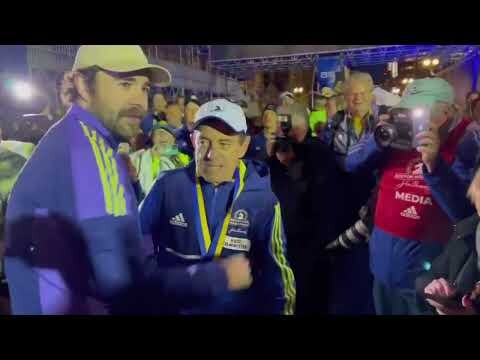
“Hard to put into words, 50 years have gone by so fast,” McGillivray told CBS Boston at the finish line. “But I have been blessed with being able to do a lot of this for charity, give back to a lot of different causes, and that’s what I hope my legacy is someday. Being able to help those in need.”
(04/20/2022) ⚡AMPby Brittany Hambleton
Boston Marathon
Among the nation’s oldest athletic clubs, the B.A.A. was established in 1887, and, in 1896, more than half of the U.S. Olympic Team at the first modern games was composed of B.A.A. club members. The Olympic Games provided the inspiration for the first Boston Marathon, which culminated the B.A.A. Games on April 19, 1897. John J. McDermott emerged from a...
more...Improve your aerobic threshold with this pyramid tempo workout
Albert Einstein once said, “If you do the same things as everyone else, you will have the same results as everyone else.”
Instead of doing a steady tempo over a certain amount of time, switch things up by breaking up the interval and speed on each rep. A tempo workout is a slight injection of speed that you can run at a comfortable level. A previous coach once told me that if you can’t answer a question or talk without feeling fatigued, then you are going too fast.
Switch up your workouts this spring/summer with this pyramid progression tempo designed to get your legs moving and help build your aerobic endurance, so that when you run your next race, you’ve got an extra gear when you need it.
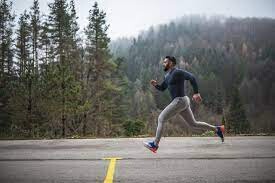
The workout
Four minutes, eight minutes, 12 minutes, eight minutes, four minutes (two minutes slow jog rest between reps)
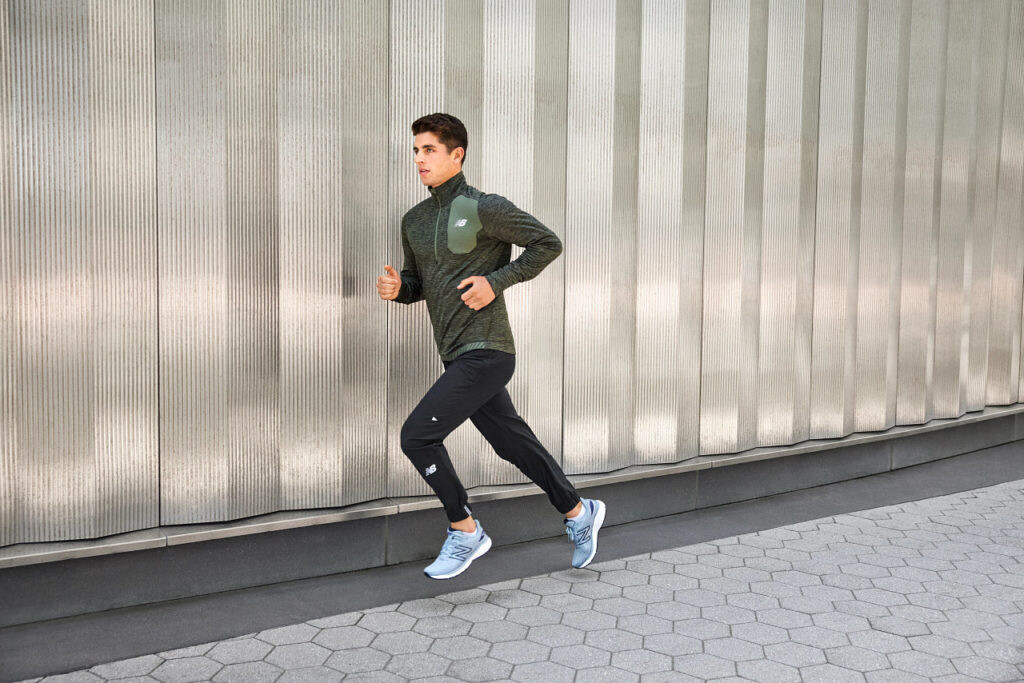
Start the workout around 30 to 40 seconds per kilometre slower than your 5K or 10K race pace for the first four-minute section, then gradually increase the pace by five seconds per kilometre for each rep. The first two reps should feel extremely easy, with your legs beginning to feel fatigued near the end of the third and fifth rep.
By the time of the last rep, your pace should be around 20 to 25 seconds faster than the pace you started at. On the last two reps, focus on maintaining your form and staying comfortable as you start to feel tired.
This workout is ideal for all runners training for races between 5K and the half-marathon, as it increases your lactate threshold, which is particularly important because it increases the speed you can run long distances without having lactate build up in your muscles.
(04/20/2022) ⚡AMPby Marley Dickinson
Foods to add to your grocery cart this spring, these seasonal foods will keep you running strong during the spring racing season
While parts of the country are still grappling with the last of their winter weather, runners can take heart knowing that spring is on its way. Not only do the warmer temperatures mean we can finally break out our shorts and t-shirts and work on our watch tans, they also mean local produce will begin popping up on grocery store shelves. As you’re doing your shopping in the next few weeks, look out for these foods to give your nutrition a spring cleaning.
Asparagus
Asparagus season starts early, so expect these slender green stalks to show up at your local farmers market any day now. A fantastic food for runners, asparagus contains the antioxidant glutathione, which helps repair the oxidative damage that occurs in your muscles after long, hard runs. This can help reduce your recovery time so you can feel fresh for your next run.

Asparagus also contains inulin, a prebiotic fibre that supports gut health. Having a healthy gut is important for runners because it keeps your immune system strong, which becomes even more crucial when you’re in the middle of a hard training block.
Beets
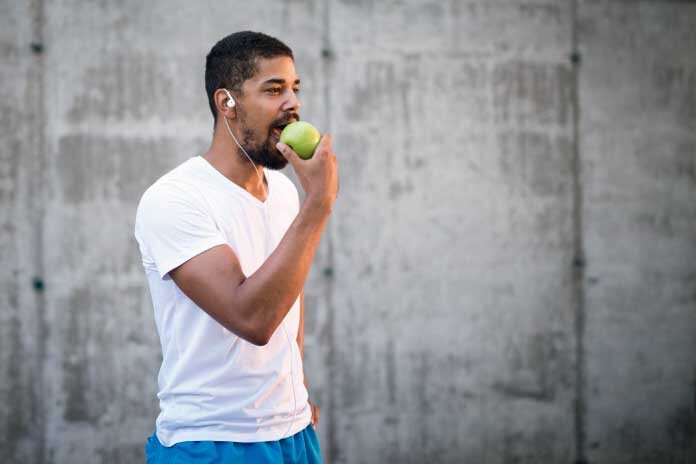
These earthy veggies have been in the spotlight before, thanks to their ability to increase the levels of nitric oxide (NO) in your blood, which increases blood flow to the muscles, stimulates mitochondria growth and strengthens muscle contractions, leading to significantly enhanced endurance in athletes. (Bonus: have some watermelon with your beets to boos their effects)
Beets are also high in folate, which helps your body regenerate healthy red blood cells that are needed to transport oxygen to your muscles during activity, as well as magnesium and potassium, both important nutrients to help you recover after a run.
Kale
Kale has hefty doses of over 20 nutrients and contains more than 45 different flavanoids that fight against oxidative stress and chronic inflammation. This can help you recover faster after hard runs and reduce muscle soreness so you can continue training, day after day.
Strawberries
Local strawberries start appearing on grocery store shelves near the end of spring and the beginning of summer, and they are worth the wait. These tasty little berries contain high levels of polyphenols and vitamin C, both of which can help repair muscle damage after a run. They’re also a good source of potassium, which can replace what you lost through sweat after a warm spring run.
Salmon
While you can get salmon year-round, spring is prime time for this healthy fish. Salmon is an excellent source of DHA and EPA omega-3 fatty acids, which reduce your risk for cardiovascular disease, improve your brain health and reduce your risk for injuries. They’re also great for fighting inflammation, which is especially important for runners, who often have higher levels of inflammation caused by heavy training. Salmon is also a great choice for runners who don’t eat dairy because it’s high in calcium and vitamin D, which are important for bone health.
Spring onion and garlic scapes
Both spring onions and garlic scapes are full of sulfur-containing compounds that fight inflammation to help speed up recovery after a hard run. Milder than regular garlic and onions, these goodies are delicious when tossed into a salad or stir fry. (As a bonus, you can often find large bundles of garlic scapes at farmers markets for barely a few bucks!)
Cucumber
The humble cucumber is a spring salad staple and contains at least 73 different phytonutrients, including Quercetin and Naringenin, two antioxidants that can reduce your risk for illness and injury. They’re also fantastic for re-hydrating after a warm run, thanks to their high water content.
(04/19/2022) ⚡AMPby Brittany Hambleton
Try this gear-changer workout to prepare for your next 5K
A key element to running well in the 5K is having a strong finishing kick. The following workout will teach you how to effectively change gears and crank up the pace when you’re already tired, so you can run strong straight through the finish line.
The workout
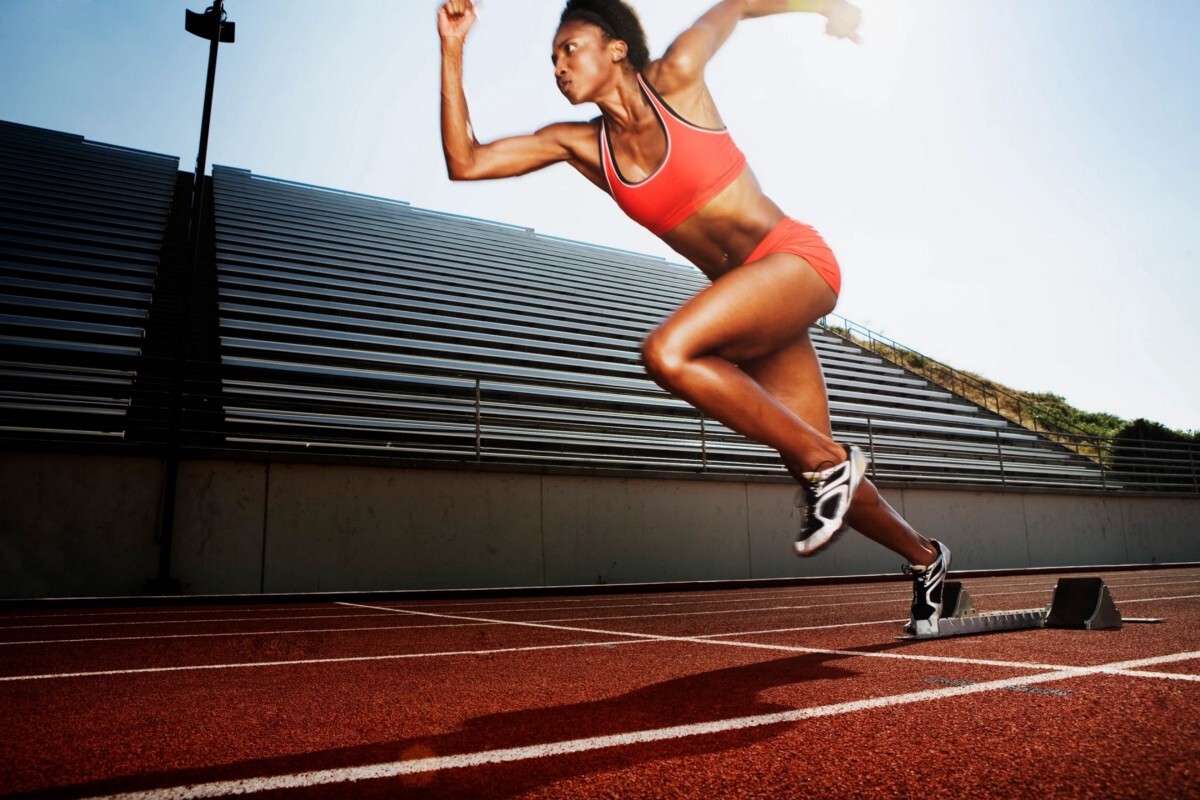
You can do this workout twice: once four weeks out from your goal race, and then again two weeks later. Each interval is broken up into two parts. In the first section, which ranges from 700m long down to 400m, run your goal 5K pace. In the second section, which ranges from 100m to 400m long, the goal is to accelerate and go all out to the finish line.
Warmup: 15-20 minute easy jog, followed by form drills and strides.
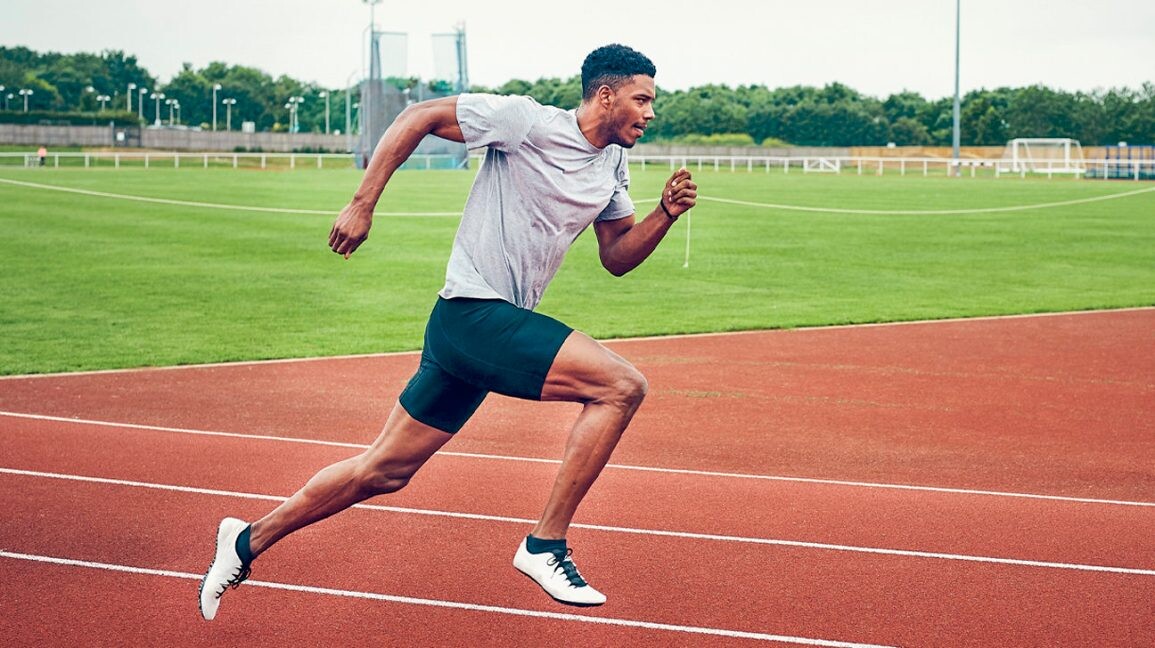
Workout: 4 x 800m with three to four minutes rest in between each. In the first interval, run 700m at 5K race pace, then accelerate for the final 100m. In the second, begin your acceleration after 600m, the third after 500m and the fourth after 400m.
Timed version: 4 x 3 minutes. In the first, run 5K pace for 2:30, and accelerate for the final 30 seconds. In the second, accelerate after 2:15, in the third accelerate after 2:00 and in the fourth accelerate after 1:30.
(04/19/2022) ⚡AMPby Running Magazine
Nell Rojas and Scott Fauble top americans at Boston Marathon
It was a Kenyan sweep at the Boston Marathon with Evan Chebet winning the men’s race in 2:06:51 and Peres Jepchirchir capturing the women’s title in 2:21:01.
The top Americas both have Colorado ties. Boulder’s Scott Fauble, who graduated from Wheat Ridge High School and is a two-time CHSAA champion, finished seventh among the men in 2 hours, 8 minutes, 52 seconds.
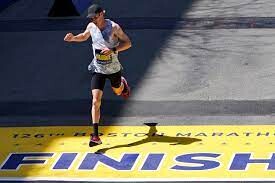
Boulder’s Nell Rojas, who was also top American last year, came in 10th among the women at 2:25:57.
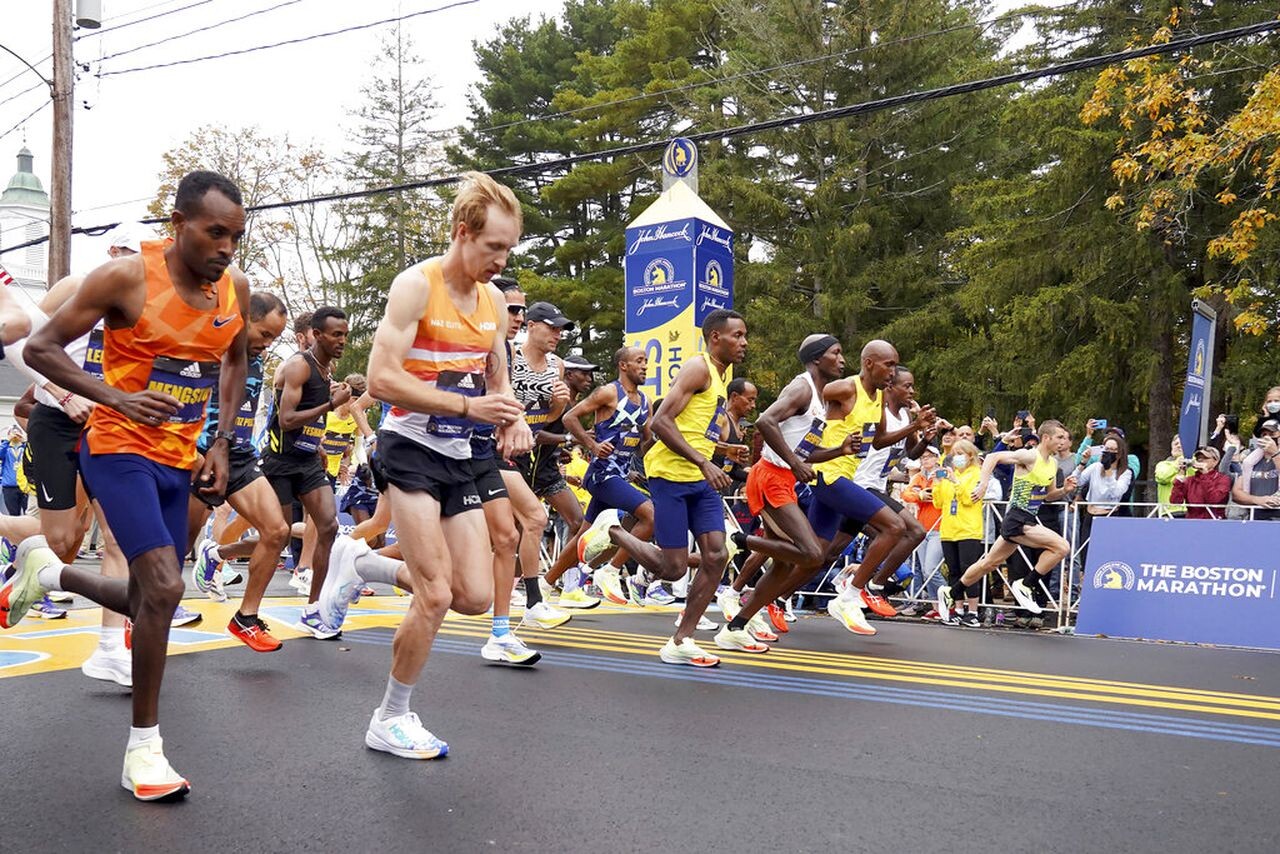
The 126th running of the Boston Marathon marked the event’s return to its spot on Patriots’ Day, the Massachusetts state holiday, for the first time in two years due to the coronavirus pandemic.
The Hopkinton, Massachusetts starting line saw 30,000 participants for the oldest annual marathon in the world.
(04/19/2022) ⚡AMPby Colorado Runner
Boston Marathon
Among the nation’s oldest athletic clubs, the B.A.A. was established in 1887, and, in 1896, more than half of the U.S. Olympic Team at the first modern games was composed of B.A.A. club members. The Olympic Games provided the inspiration for the first Boston Marathon, which culminated the B.A.A. Games on April 19, 1897. John J. McDermott emerged from a...
more...Five running mistakes that could lead to injury
Most running injuries are not caused by one little mistake, such as losing your footing as you’re running on a trail. They usually develop over the course of weeks, when you’re making LOTS of little mistakes, such as not varying your routine, running in worn-out shoes, or overtraining. Are you putting yourself at risk for injuries? Don’t make these common mistakes to avoid running injuries and keep running strong.
1.- Running Mistake: Doing Too Much, Too Soon
Many runners, especially people who are new to running, make the “terrible too’s” mistake. They get so excited about their running and eager for progress that they do too much mileage, too fast, too soon.
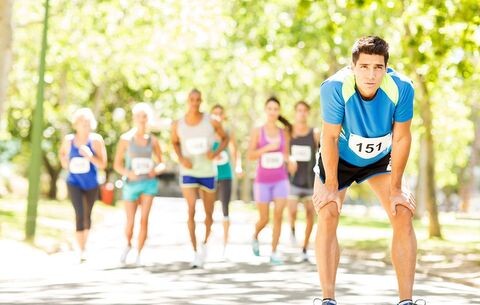
Some runners mistakenly think that “more is better” when it comes to running. As a result, they often start to develop common overuse running injuries, such as shin splints, runner’s knee, or ITB syndrome.
Be more conservative than you think you need to be with how often, how long, and how much you run, especially early on in your development. Increase your mileage gradually. Don’t let your weekly mileage increase by more than 10%. If you’re new to running or are coming off a long break, start with walking first, and then progress into a run/walk program.
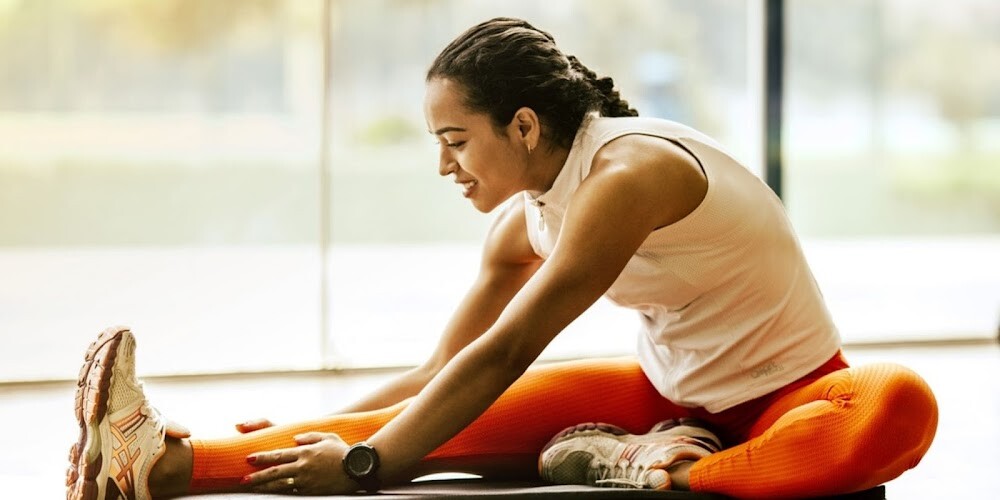
Pay attention to aches and pains. If a pain gets worse as you continue running, that’s a warning sign that you should stop your run. Listen to your body for injury warning signs and know when you shouldn’t run through pain.
Take at least one complete day off from exercise each and every week. Don’t ignore rest days — they’re important to your recovery and injury prevention efforts. Your muscles build and repair themselves during your rest days. So if you run every day, you’re not going to gain much strength and you’re increasing your risk of injury.
2.- Running Mistake: Not Varying Your Training
Most running injuries are repetitive stress injuries, caused by repeating the same movement (running the same way, at the same pace) over and over again.
Varying your workout routines can help reduce your injury risk. You can easily alter your training by running at different paces, changing your terrain and running surface, varying the elevation, cross-training, and rotating your running shoes.
Switching up the elevation, distance, and pace of your runs will not only help you prevent injury, you can also improve your running. Try adding some hill running, fartlek runs, and a long run to your weekly routine.
Of course, following a training schedule will give you variety in your training, but it’s also important that you listen to your body. If you have some nagging pain, don’t force a run at a certain pace or distance just because it’s on the schedule. Play it safe and cross-train or take a rest day.
3.- Running Mistake: Not Strength-Training
Many running injuries, especially knee and hip-related problems, develop because of muscle weaknesses or imbalances. Core and lower body exercises are particularly important when it comes to preventing injuries.
You don’t need fancy equipment or a lot of time to get in an effective, beneficial strength-training workout that can help you avoid running injuries. Even just 20 minutes of strength-training 2-3 times a week will help make you more injury-resistant and, as an added bonus, improve your running performance.
Here are some simple exercises to work into your routine:
Strengthening Workouts for Runners
Stand-up Core Strengthening Exercises for Runners
More Core Strengthening for Runners
Upper Body Exercises for Runners
4.- Running Mistake: Not Replacing Your Running Shoes
Your running shoes lose shock absorption, cushioning and stability over time. Continuing to run in worn-out running shoes increases the stress and impact on your legs and joints, which can lead to overuse injuries. The easiest thing you can do to prevent those types of injuries is replace your running shoes when they’re worn-out.
So how do you know when shoes need to be retired? Don’t judge by the treads of your running shoes. The midsole, which provides the cushioning and stability, usually breaks down before the bottom shows major signs of wear.
If you’ve been feeling muscle fatigue, shin splints, or some pain in your joints — especially your knees — you may be wearing running shoes that no longer have adequate cushioning. Bi-lateral pain (in both knees, for example) is often a tell-tale sign that your shoes need to be replaced.
A good rule of thumb is to replace your running shoes every 300 to 400 miles, depending on your running style, body weight, and the surface on which you run.
Smaller runners can get new running shoes at the upper end of the recommendation, while heavier runners should consider replacement shoes closer to the 300 mile mark. If you run on rough roads, you’ll need to replace your running shoes sooner than if you primarily run on a treadmill.
5.- Mistake: Not Using Injury Prevention Tools
One of the best ways for runners to avoid running injuries is to use effective injury prevention and recovery tools.
It’s always good to have an ice pack or a bag of frozen peas ready in the freezer to ice down any pain after long runs. If you’re feeling pain on the bottom of your foot, freeze a water bottle and roll your foot on top of it.
Massage tools such as foam rollers, the Stick, or even a tennis or lacrosse ball can be used for post-run self-massage, which is extremely beneficial for runners. Regular rolling can reduce tightness and help you avoid common injuries such as ITBS and shin splints.
(04/19/2022) ⚡AMPby Christine Luff
Peres Jepchirchir wins Boston in a final sprint and Evans Chebet takes the men's title
It was not until 1972 that the Boston Marathon’s organizers allowed women to race as official entrants. Before then, those who were brave enough to defy the ban were often jeered or forcibly pulled off the course. Among the rationales cited? That women were “physiologically incapable” of running 26.2 miles.
It all seems so painfully misguided now, of course, but that pockmarked piece of the event’s history was worth remembering Monday as Peres Jepchirchir of Kenya and Ababel Yeshaneh of Ethiopia charged through Kenmore Square, in the shadow of Fenway Park, not far from the finish line. The rest of a decorated women’s field had splintered in their wake, and now Jepchirchir and Yeshaneh went back and forth, trading the lead several times as they staged a memorable duel.
Finally, with one last push, Jepchirchir lengthened her stride to create some separation as she sprinted to the finish, her narrow win coming 50 years after women first vied for Boston Marathon glory. Perhaps the only person surprised by the outcome was Jepchirchir herself.
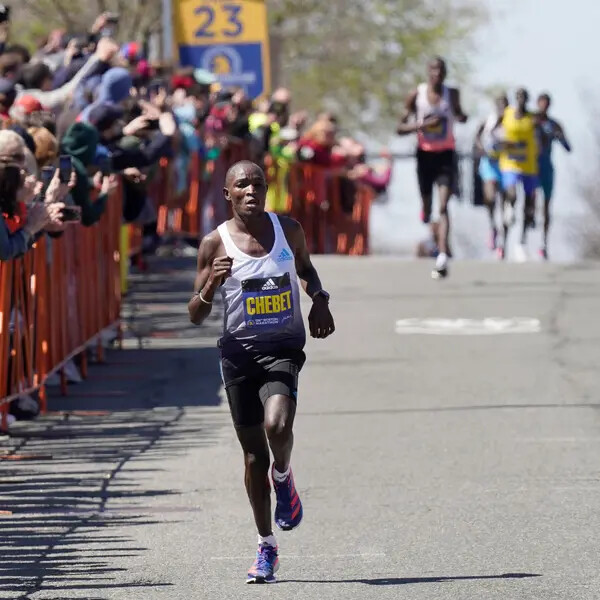
“I was not expecting to win,” said Jepchirchir, the reigning Olympic champion. “But I’m feeling grateful, and now I can say that I believe in myself more.”
For the first time since 2019, the Boston Marathon returned to its traditional slot on the calendar. Until the coronavirus pandemic, the marathon had been staged every April since 1897. But in 2020, the race was canceled for the first time in its history. And last year, the race was pushed to October, when it competed for elite entrants with a cluster of other marathons.
Order was restored this year, as a full field of about 30,000 participants — runners, wheelchair racers, para athletes, hand cyclists — formed a giant wave from Hopkinton, Mass., to Boston on a cool, sun-splashed day.
No one shined brighter than Jepchirchir, 28, who finished in 2 hours 21 minutes 1 second, just four seconds ahead of Yeshaneh. Mary Ngugi of Kenya placed third after running a smart race: She knew enough to pace herself when Jepchirchir and Yeshaneh pounded the gas, blowing away the field.
“I’m glad I didn’t follow them and just die,” Ngugi said.
Establishing herself as the most formidable female marathoner on the planet, Jepchirchir has now won her last five marathons and three in the last eight months: After surviving extraordinarily hot conditions to win at the Tokyo Games in August, Jepchirchir won the New York City Marathon in November. Now, after another triumph, she is already looking ahead.
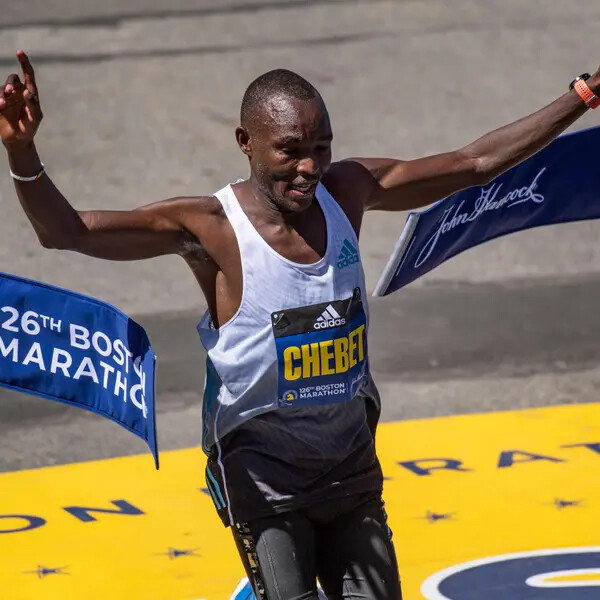
“I still have more to do,” she said.
Kenyans swept the men’s podium. Evans Chebet, 33, won his first world marathon major when he broke clear of a large pack, finishing in 2:06:51. Lawrence Cherono was second, and Benson Kipruto, last year’s winner, was third.
The pack began to dissolve behind Chebet after he covered the 22nd mile in 4:27, a preposterous tempo. Crushing his opposition only seemed to spur him forward.
“My counterparts were nowhere close to me,” he said through a translator, “and that gave me the motivation and the determination to hit it off and seize the win.”
On Monday, fortune largely favored the brave — but not everyone. CJ Albertson, a 28-year-old Californian who trains for marathons by doing marathons, pushed the pace from the start.
“My only chance to really win or be up there in the top is to kind of break some people,” he said. “I had the mind-set that I’m invincible, and you kind of have to run like that.”
The problem: “There are limits,” he said.
Albertson faded to a 13th-place finish in 2:10:23, which was still a personal best. Scott Fauble, 30, was the top American man, in seventh. “I think I do well with hills,” he said.
Molly Seidel, a crowd favorite and a former Boston-area resident, struggled in her Boston debut, dropping out at Mile 16. She said in a statement that she had been dealing with a hip injury.
“I had to make the difficult call to stop at a medical tent to avoid really damaging anything,” she said.
Seidel, the bronze medalist in the women’s marathon at the Tokyo Games, was coming off a fourth-place finish at the New York City Marathon with broken ribs.
Nell Rojas was the fastest American woman, finishing 10th in 2:25:57.
Manuela Schӓr of Switzerland won the women’s wheelchair race, cruising to her fourth victory in the event, and Daniel Romanchuk of the United States won the men’s title for a second time in Boston.
Many runners were drawn to this year’s race by the opportunity to accomplish a one-of-a-kind feat: running back-to-back Boston Marathons mere months apart.
“It feels almost a little bit too soon,” said Joyce Lee, who was running her sixth Boston Marathon after serving as guide for a visually impaired runner in the October race.
Many were also grateful for the chance to compete on the 50th anniversary of women’s official inclusion in the marathon. “It’s incredible to think that was a thing back then and women had to work so hard to participate in this event,” said Christine Valdes, 46. “They paved the way for us.”
Sport is seldom immune from global politics, and this year’s marathon was no different. Amid the war in Ukraine, runners from Russia and Belarus were barred from competing by the Boston Athletic Association, which organizes the race. (Citizens of Russia and Belarus who are residents of other countries were still allowed to take part.)
And there were, as always, reminders of the terror that tore through the marathon nine years ago. Henry Richard, 20, crossed the finish line at 2:52 p.m., and the timing could not have been more poignant: It was around that time in 2013 when two bombs exploded and killed his 8-year-old brother, Martin, and two other people, and wounded 264 others.
“I know Martin would have been doing it with me,” Richard said after the race on Monday. “That’s all I could think about.”
Richard finished in 4:02:20. “I did it for both of us, and my sister and the rest of our family,” he said. “I couldn’t be more happy now. I’m going to do it again.”
In her own subtle way, Jepchirchir offered a counterpoint to some of the world’s divisions. In the race’s late stages, she and Yeshaneh appeared to work together to extend their lead. At one point, Jepchirchir offered Yeshaneh some of her water.
It all seemed straight from the Jepchirchir playbook. Consider her performance in New York last year, when she encouraged Viola Cheptoo, a fellow Kenyan, to stick with her as they entered Central Park side by side. Jepchirchir eventually pulled away, but Cheptoo lauded her sportsmanship.
On Monday, it was more of the same, all those years after eight women broke the gender barrier by racing against more than a thousand men.
“I love my competitors,” Jepchirchir said, “because I can’t do it by myself.”
(04/18/2022) ⚡AMPby New York Times
Boston Marathon
Among the nation’s oldest athletic clubs, the B.A.A. was established in 1887, and, in 1896, more than half of the U.S. Olympic Team at the first modern games was composed of B.A.A. club members. The Olympic Games provided the inspiration for the first Boston Marathon, which culminated the B.A.A. Games on April 19, 1897. John J. McDermott emerged from a...
more...There are two basic ways to measure a run: time and distance, Many runners prefer one over the other, but both metrics are useful depending on the scenario
Time and distance. Many runners have a preference for one over the other, but is there one metric that’s better? The truth is, both have their place, and depending on the scenario, one may work better than the other.
When to run by time
While we typically race in terms of distance (5Ks, 10Ks, etc.), many runners prefer to do a lot of their training runs by time. Running by time isn’t always your best option, but it works well in the following scenarios:

When you’re crunched for time. If you only have one hour to fit your run in between other commitments, go ahead and run by time (just make sure you don’t stop your watch at stoplights). This way, regardless of how far you run, you know you won’t go overtime and be late for whatever else you need to do.
To increase enjoyment. Running by time is a great opportunity to turn off your GPS and stop worrying about things like pace or distance. If you find you’re constantly looking at your pace and distance and getting stressed out if you’re not as quick as usual, removing those metrics and simply running by time can help you enjoy your runs more.

For recovery days. To continue off the last point, running by time is a great option for recovery days because you won’t see your pace and be tempted to speed up when you really should be slowing down. If you’re an easy day pace-pusher, this is an effective way to prevent yourself from doing that.
Hone a sense of effort. When you aren’t distracted by things like pace and distance, you can really focus on how your body is feeling at different speeds. Being able to gauge effort by feel is a great way to control your pace, but it takes a lot of practice.
When to run by distance
There are a few instances when running by distance is the better option, and most of them involve trying to run faster:
When you’re trying to hit a mileage goal. This may sound obvious, but if you’re trying to reach a weekly mileage target, you’re better off measuring your runs by distance to make sure you reach your goal.
To learn pacing. The easiest way to learn how to pace yourself for different distances is to measure how far you’re running with a GPS that tells you how fast you’re going. Once you’ve learned how to pace yourself for various distances, like one kilometer, five kilometers, etc., you can start to pay attention to how those paces feel, which will allow you to turn off the GPS and run by time, as mentioned above.
To run faster. People tend to run faster over a set distance, compared to running by time, because when you run by distance the finish line is fixed. If you run faster, you get to stop sooner. When you run by time, on the other hand, running faster doesn’t get you to the finish any faster, so it’s less motivating. So when you’re trying to push yourself to run a little harder (like you would in workouts), distance may be your better option.
(04/18/2022) ⚡AMPby Brittany Hambleton
Henry Richard, Brother of Bombing Victim Martin Richard, Runs Boston Marathon
Henry Richard, the 20-year-old brother of Boston Marathon bombing victim Martin Richard, was among the 28,000-plus participants in Monday's 126th Boston Marathon, according to The Boston Globe.
Henry Richard is the older brother of Martin Richard, the 8-year-old boy killed in the 2013 Boston Marathon bombing. Martin would have turned 18 this June.

Henry is a student at Pace University in New York, the Globe said. He has participated in other Boston Athletic Association events in the past, but this is his first time running the 26.2-mile Boston Marathon.

He was reportedly part of a team of runners representing the Martin Richard Foundation. According to its website, the foundation "works to advance the values of inclusion, kindness, justice and peace."
(04/18/2022) ⚡AMPby Marc Fortier
Boston Marathon
Among the nation’s oldest athletic clubs, the B.A.A. was established in 1887, and, in 1896, more than half of the U.S. Olympic Team at the first modern games was composed of B.A.A. club members. The Olympic Games provided the inspiration for the first Boston Marathon, which culminated the B.A.A. Games on April 19, 1897. John J. McDermott emerged from a...
more...Kenyans Evans Chebet, Peres Jepchirchir win men's and women's titles
Olympic champion Peres Jepchirchir outlasted Ethiopia's Ababel Yeshaneh in the final stretch down Boylston Street to capture the women's crown at the Boston Marathon on Monday.
The Kenyan star crossed the finish line in two hours 21 minutes and one second, four seconds ahead of Yeshaneh, who dueled with Jepchirchir in the final few hundred meters. Jepchirchir's win gave Kenya both the men's and women's titles as Evans Chebet topped the men's race in 2:06:51 — his first major marathon win.
He led a 1-2-3 finish for Kenya with countrymen Lawrence Cherono second in 2:07:21 and Benson Kipruto, the defending champion, third in 2:07:27.
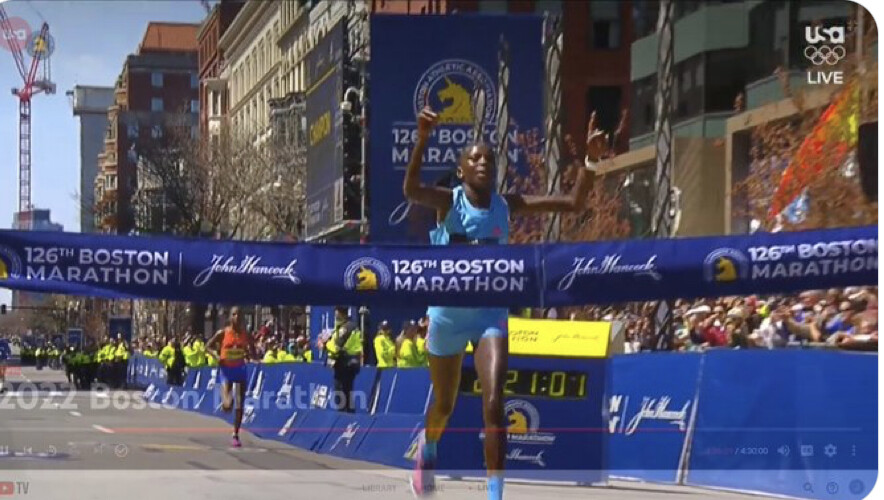
The fastest Americans have crossed the finish line: Scott Fauble finished seventh among the men in 2 hours 8 minutes 52 seconds and Nell Rojas came in 10th among the women at 2:25:57.
American Daniel Romanchuk, who captured Boston in 2019, won the men's wheelchair event in 1:26:58. Defending champion Marcel Hug of Switzerland pulled out just before the start of the race due to medical reasons.
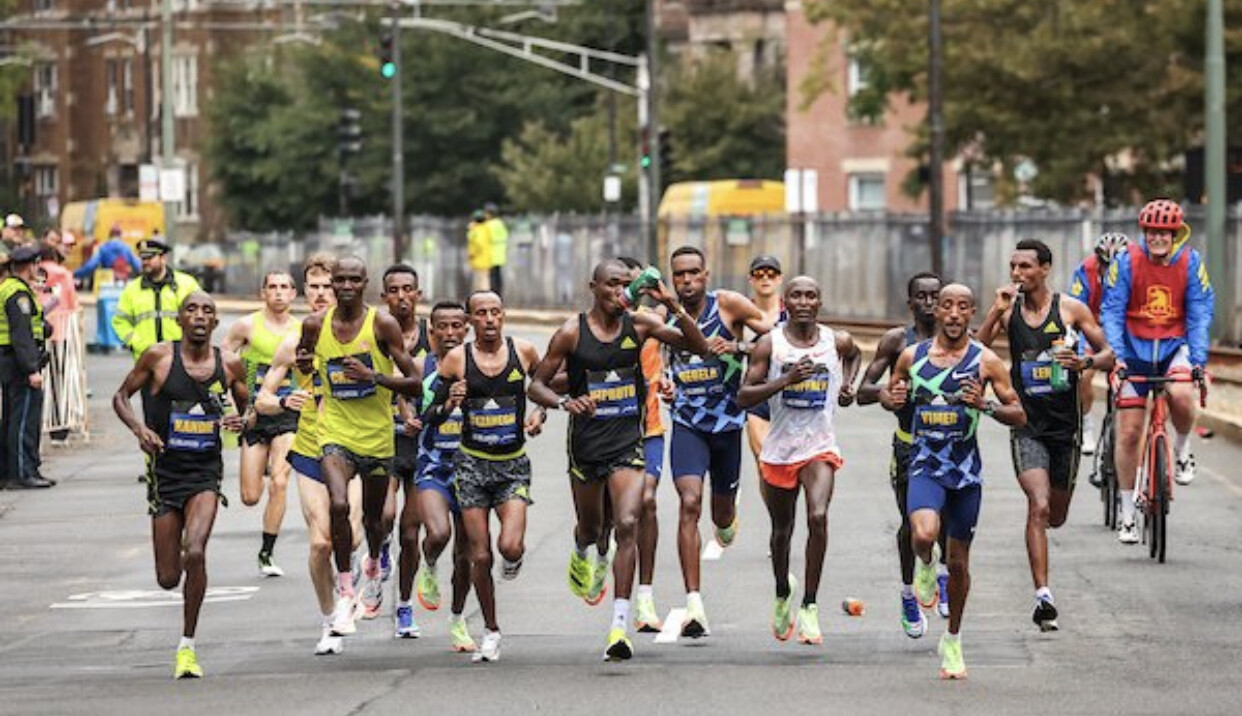
On the women's wheelchair side, Manuela Schar of Switzerland captured her fourth Boston title in 1:41:08.
The marathon returned to its traditional Patriot's Day timeslot after a three-year absence due to the COVID-19 pandemic. The in-person event was canceled in 2020 for the first time in history. It returned in 2021 but was held in October with a smaller field of around 20,000 runners. More than 30,000 competitors were registered for Monday's event.
(04/18/2022) ⚡AMPBoston Marathon
Among the nation’s oldest athletic clubs, the B.A.A. was established in 1887, and, in 1896, more than half of the U.S. Olympic Team at the first modern games was composed of B.A.A. club members. The Olympic Games provided the inspiration for the first Boston Marathon, which culminated the B.A.A. Games on April 19, 1897. John J. McDermott emerged from a...
more...Are these mental blocks slowing you down? These three common thinking patterns can derail your training and negatively impact your performance on race day
There is no doubt that your mind impacts your performance, and many well-trained runners allow their thoughts and emotions to derail what should have been a great workout or race. The following three mental barriers are common pitfalls for many runners — are they impacting your performance?
1.- Negative self-talk
How do you talk to yourself during a run, especially as you get tired or when the workout isn’t going as well as you’d hoped? Negative self-talk like “I’m a terrible runner,” or “why do I even bother trying, I’ll never actually reach my goal,” can easily get into your head when you hit a rough patch in your training, but it serves no purpose other than to erode your self-confidence.
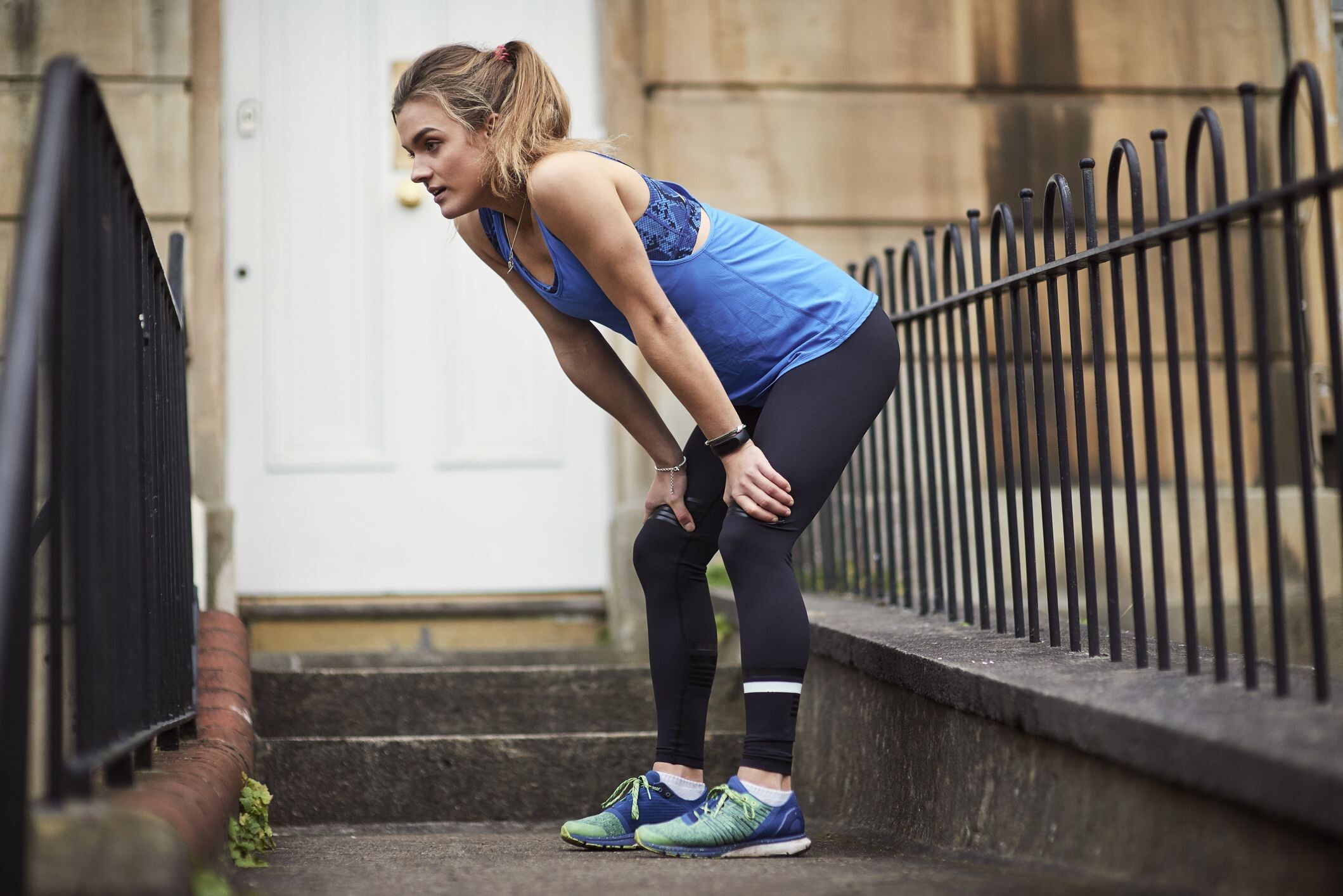
You will never achieve your running goals if you don’t believe in yourself, so it’s important for all runners to learn how to counteract negative self-talk with positive affirmations and mantras. Whenever you find yourself saying something that’s self-defeating, counteract that voice with something positive like “that’s not me,” or “I can do hard things.”
2.- Catastrophizing

When a run, workout or race doesn’t go well, it’s easy for runners to start spiraling and turn the situation into an all-out catastrophe. One bad workout, and suddenly you’re out of shape and completely unprepared for your upcoming goal race. One bad race and now you’ve wasted weeks or months of training, and should probably pick a different hobby. Another good example is getting injured. Something starts to bother you on your run (your hip, your knee, etc.) and you instantly start to panic, fearing you’ll lose weeks or even months of training.
Whenever you catch yourself mentally spiraling out of control, take a moment to breathe and calm down. One bad workout doesn’t erase all the good ones you had before it. One bad race doesn’t mean you’re a terrible runner. If you do get injured, you may have to take a few days or weeks off running, but you can probably still do other things in the meantime, like cross-training, until you’re able to get back out there.
In other words, don’t make something into a bigger problem than it really is. Setbacks happen, but they’re usually not permanent, and with time and patience, you’ll get through them.
3.- Perfectionism
Runners love to make a race plan and follow it down to the letter, but unfortunately, life rarely works out that way. Training runs have to get skipped for important family matters, a head cold or flu takes you out for a couple of days or a snowstorm blows through leaves you housebound for a day.
Perfectionism makes you far more likely to fall prey to both negative self-talk and catastrophizing. It causes you to berate yourself when things go wrong, and to panic when you have to miss a day or two of training. As a runner, it’s important to accept that things will rarely if ever, go perfectly. You need to be mentally flexible to deal with the ups and downs involved in a training cycle so that you’re not completely thrown off by everything that doesn’t go exactly right.
Train your mind as well as your body
This highlights how important it is for runners to train their minds alongside their bodies. Even the fittest runners can sabotage themselves by allowing negative self-talk, catastrophizing or perfectionism to affect their performance in a run or race. If you’re struggling with your mental game, consider talking to a coach or sports psychologist, who can help you come up with your own tools for managing your mind so you can enjoy the sport and run to your full potential.
(04/18/2022) ⚡AMPby Brittany Hambleton
Canada’s Charles Philibert-Thiboutot wins B.A.A. 5K while ethiopia’s Senbere Teferi breaks the course record
The Quebec native ran 13:35 and broke the Canadian 5K road record in the process.
Canada’s Charles Philibert-Thiboutot kicked off the Boston Marathon weekend in style this Saturday, winning the Boston Athletic Association (B.A.A.) 5K in 13:35. His time took one second off the previous Canadian 5K road record, set by Paul Williams in Carlsbad, California in June 1986.
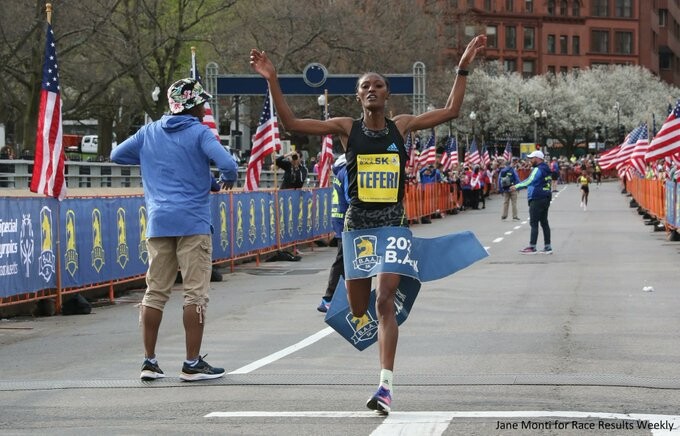
Philibert-Thiboutot ran a strong race from start to finish, but the win wasn’t handed to him. New Zealand runner Geordie Beamish and Zouhair Talbi of Morroco unleashed a couple of hard kicks in the final metres of the race in an attempt to overtake C.P.T., but fell short to finish second and third, both in 13:36.
“I’m really happy,” he said in an interview with Radio-Canada. “Honestly, it’s not the strongest Canadian record that existed, but it’s still my first Canadian record.”

Ethiopia’s Senbere Teferi breaks course record
The Women’s-only 5K world record-holder, Teferi, broke the tape in the women’s race in 14:49, taking one second off Molly Huddle’s previous course record from 2015. Unlike in the men’s race, Teferi had a commanding lead over the rest of the field, with Weini Kelati, who holds the American women’s-only 10K record, finishing second in 15:04. Kenya’s Sharon Lokedi rounded out the podium in third in 15:16.
(04/18/2022) ⚡AMP
by Running Magazine
B.A.A. 5K
The B.A.A. 5K began in 2009, and became an instant hit among runners from far and wide. Viewed by many as the “calm before the storm,” the Sunday of Marathon weekend traditionally was for shopping, loading up on carbohydrates at the pasta dinner, and most importantly- resting. But now, runners of shorter distances, and even a few marathoners looking for...
more...Who is Ready? Who is Not? What the Pros Said at Boston Marathon Media Day
2022 Boston Marathon and it’s time to get excited. The weather is nice, the trees are starting to bloom (well, some of them), and two dozen of the world’s best distance runners have descended upon the Hub for the most loaded Boston Marathon in race history.
LetsRun.com will have boots on the ground all weekend, and we had a chance to talk to a number of top athletes, agents, and coaches at this morning’s media availability ahead of Monday’s race. The B.A.A. announced two race updates, with 2017 champ Geoffrey Kirui scratching from the marathon and US 10,000m champ Emily Sisson scratching from Saturday’s B.A.A. 5K. Here are the other things we learned on Friday from speaking to Molly Seidel, Peres Jepchirchir, Geoffrey Kamworor, CJ Albertson, and many more.
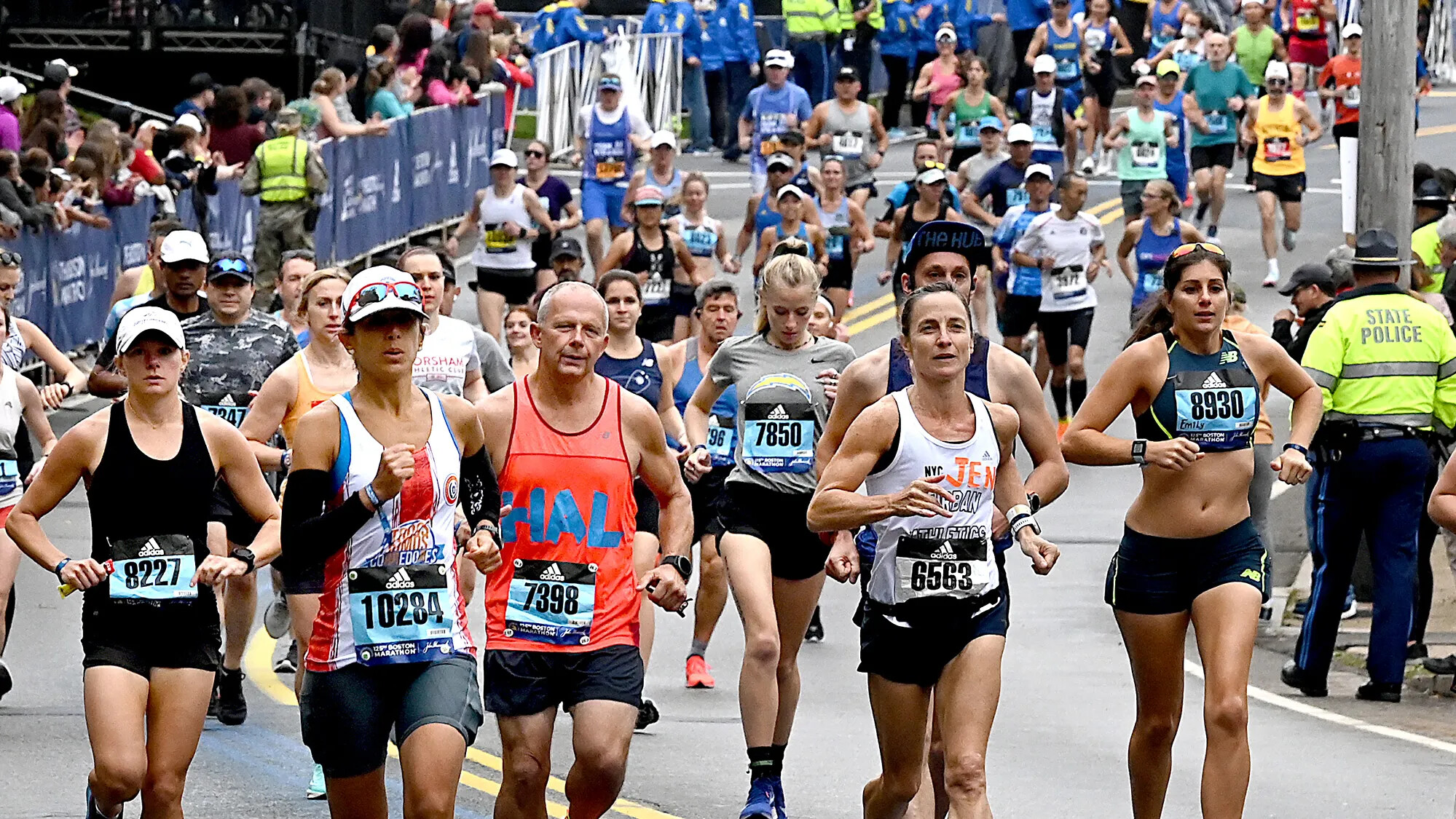
Molly Seidel says she has had some privacy concerns with her Strava account but is feeling excited and fit for Boston
Seidel will run two marathons in the first seven months of 2022, with Boston on Monday and the World Championship marathon in Eugene in July, and she and coach Jon Green have built their strategy for the year around those two races.
“We were looking [at] Boston as coming into this with a lot of strength and using this to try and carry through and hone the speed for Worlds,” Seidel said. “Right now I feel like we’ve set it up really well like that, and I’m hoping that the speed’s gonna be there. Fingers crossed.”
Seidel will likely need that speed over the final, mostly downhill 10k in Boston, as that is where the race is often broken open. And with two top half marathoners leading the field – World Half champ Peres Jepchirchir and former HM world record holder Joyciline Jepkosgei – the pace could get very hot at the end of the race.
Challenging for the overall win will be tough, but Seidel said she is excited to race the best in the world on Boston’s hallowed course.
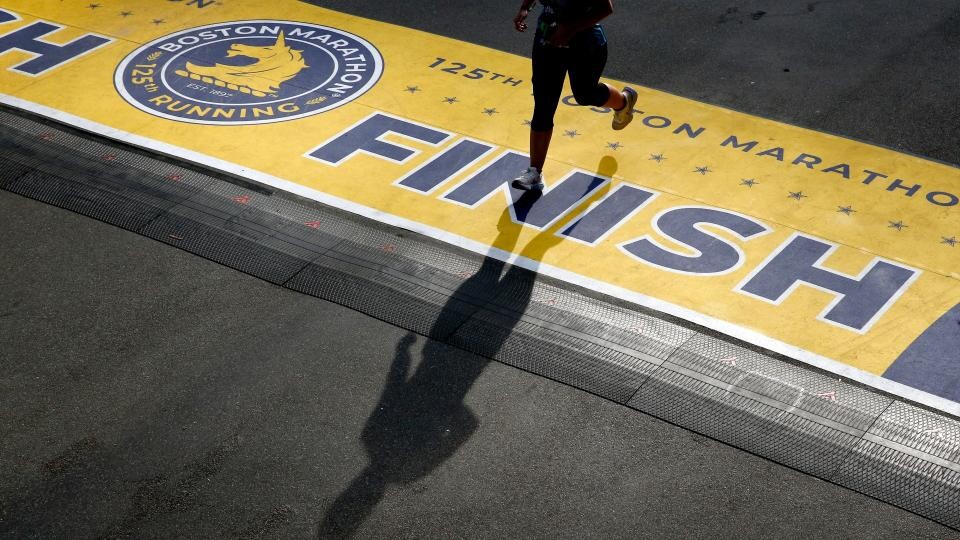
“Obviously intimidated, they’re incredible, and I’ve gotten my ass kicked by Peres the two times I’ve raced her,” Seidel said. “But getting to be in a race with a huge amount of competition like that, women with incredible credentials, that fires me up like nothing else.”
Seidel’s buildup wasn’t perfect, as she dealt with a hip impingement about a month ago and had to miss the NYC Half as a result. But she’s logged multiple 130+ mile weeks since then, which you can tell by visiting her Strava page. And while it’s great for most of the running community to be able to see what an Olympic medalist does for training – transparency that Seidel says she values – recently, she has met with some of the Strava staff out of concerns that some people have been using the data to figure out where she lives.
“It can be a lot sometimes, realizing you’ve got 60,000 people following your every move and a little bit scary sometimes when people start tracking that,”’ Seidel said. “So it’s something that I’m still figuring out, honestly. And I’ve wavered back and forth on getting off the platform, mainly because of that.”
Geoffrey Kamworor (photo) is all-in on the marathon and ready to go in his Boston debut
For the first decade of his professional career, Kamworor developed a reputation as a man for all seasons. He ran 12:58 and 26:52 on the track and earned a silver in the 10,000 at Worlds, won World XC twice, and won the World Half three times. He also mixed in two NYC Marathon titles during that span, but the marathon was never his full focus.
That, says his agent Valentijn Trouw, has now changed. Boston will be Kamworor’s first spring marathon since 2014, and he has already committed to the World Championship marathon in July. At this point, he is all-in on the marathon.
And that could be a scary prospect for the rest of the field. Kamworor’s 2:05:23 pb may only be 10th-best in the field, but he ran that in Valencia in December in a race Kamworor had barely been able to train for due to an ankle injury. For this buildup, Trouw said, Kamworor did not miss a step.
While the deep men’s field is pretty wide-open on paper, one prominent agent we spoke to (not Trouw) said he views Kamworor as the favorite due to his two NYC wins and his killer speed in the half marathon – two assets that should help significantly in Boston.
Defending champ Benson Kipruto ready to take on some big names
Kipruto was a surprise winner last year, but will not be able to sneak under anyone’s radar this year. He gave the platitudes about being “happy to be back” this year. But he said his training has gone well and the goal is the same as last year — to win, despite the field being stronger this year. “There are some strong guys, but I don’t care…my preparation was good.”
CJ Albertson isn’t a 2:06 guy yet, but he’s trying to think of himself that way
Albertson has run some insane efforts in practice, including a 2:09 marathon on a treadmill in 2020 and a 2:10:28 “split” three weeks ago at the Modesto Marathon (his result is listed officially as 2:11:56, but the lead bike led Albertson the wrong way, causing him to run extra distance). Yet Albertson’s official marathon personal best is still 2:11:18 from the Marathon Project in 2020. Is he leaving his best efforts in practice? Albertson doesn’t view it that way.
“At some point, I’m gonna run fast,” he said. “Hopefully it’s on Monday.”
Albertson also had an interesting perspective when we asked about all those hard efforts in practice. They might seem crazy for a guy whose official pb is 2:11, but Albertson said his goal is to run 2:06 one day and that he tries to think of his training in that context.
“Whatever you want to be, you have to mentally be there first before you’re actually there,” Albertson said. “I want to work out and train like I am an American record holder. Because one day I’m going to be or I’ll have a shot to be in that position and those two weeks before aren’t gonna matter, it’s gonna be what I did the five years leading up to it…The workouts that I’m doing, if you look at me like an American record holder and it’s like, he’s going out and running 5:00 pace on the weekends, it’s no big deal.”
He had one of those workouts on Sunday, running 4:50 pace (2:06:43 marathon pace) for 15 miles and feeling great doing it.
As for Monday, Albertson, who led for the first 20 miles last year and ultimately finished 10th, said he will likely go out hard again but expects he will have more company this time given the strength of the field and great conditions in the forecast.
Colin Bennie is running Monday’s race for the Play Ball Foundation while his contract situation with Reebok is sorted out
Bennie was the top American at last year’s Boston Marathon, finishing 7th in 2:11:26. It is a bit of a surprise, then, that he will not be racing on Monday in the colors of the Reebok Boston Track Club. The reason why is a bit complicated. Reebok has been undergoing an ownership change, and in March was officially sold by adidas to Authentic Brands Group. Bennie’s Reebok contract was up at the end of 2021, and as a result he’s in limbo as Reebok did not want to offer a new contract in the midst of an ownership change. The new owners are still figuring out what to do with the Reebok Boston Track Club, but Bennie is hopeful that the group’s strong recent performances, such as Josette Norris’ 5th-place finish in the 1500 at World Indoors, are proof that the team is still worth supporting (he is still training with the team and coach Chris Fox in Virginia).
“There’s been good support throughout,” Bennie said. “These things just do take time.”
With no sponsor for the moment, Bennie, a Massachusetts native, will be running Monday’s race for the Play Ball Foundation, a local charity dedicated to providing sports opportunities to middle schoolers in underserved communities. Play Ball’s logo is the letters PB in large, blue font – good letters for a marathoner.
“It’s a very good thing to have on you on race day,” Bennie said.
Jake Riley and Jared Ward are hoping things turn a corner for them in Boston
Riley and Ward are both US Olympians, but both have hit some rough patches recently. They’re hoping Boston is a first step back in the right direction.
Riley, 34, had been struggling in practice and had an awful tuneup race for Boston, running 46:27 at the US 15K champs on March 5 to finish in 35th place. After searching for answers, Riley finally determined, with the help of his nutritionist, that he was underfueling between runs, which meant that he struggled to finish workouts and races strong.
Riley pointed out that he was able to go out with the pack at the 15K but just could not get his body to go faster over the final 5k when the racing picked up.
But Riley said that he has made some changes to his diet and that the last four weeks of training have gone very well.
“Since I’ve tried to fix that, things have finally started to come around,” Riley said. “My energy levels are better, I’ve been able to close out workouts better.
”Four weeks may not be enough to turn things around for a big race in Boston, though. Riley admitted that there is a wide range of outcomes for him on Monday.
As for the 33-year-old Ward, he was wondering, after a rough 2020 season, whether he might be nearing the end of his marathon career. Now a father of five, Ward was feeling more tired in practice and daily live and simply chalked it up to getting older
“I just kind of thought, this is just, I guess, how you feel,” Ward said.
But in marathon years, 33 really isn’t that old. So Ward endeavored to find out what was wrong. Ultimately, he was diagnosed with hypothyroidism and prescribed Levothyroxine, a thyroid-replacement drug, by his doctor. But Ward is well aware of the stigma around thyroid medication in the running world, and for two weeks, the medication sat untouched in his cupboard. Ultimately, however, he decided that he would take the supplement – which is legal under the WADA Code and does not require a TUE – but that he would be open and honest about exactly what he was taking and why ( this Instagram post has more details). So far, Ward says, the reaction has been positive from fellow athletes, who are grateful that Ward has addressed the issue in an honest manner.
“It’s around us a lot more than you might think, and for people that need it, it’s important,” Ward says.
Ward says that since taking the medication, his energy levels feel back to normal, which have made it easier for him to train – and to play with his kids. But he also said that his fatigue issues before that meant that he was not able to push as hard in practice as he would have liked, meaning he probably doesn’t have the base quite yet to get back to his best marathoning.
“I think it might take a year or two to climb back to where I’d like to be,” Ward says.
Jared Ward starting new pro group in Utah: the Run Elite Program
Utah has produced a lot of really good runners, but up until now it was not known for its pro training groups, despite being at altitude and a good place to train. Jared Ward and Isaac Wood (of the Wood Report) wanted to change that and set out to get funding for a pro running group in Utah. Mike McKell, a state senator in Utah and a big runner, said they should try to get state funding, which they did to the tune of multiple hundreds of thousands of dollars a year. Wood talks about the foundation of the group below, which is designed to be shoe brand agnostic.
Peres Jepchirchir and Joyciline Jepkosgei ready to battle
Jepchirchir and Jepkosgei will battle for the title of World’s #1 marathoner on Monday. They sat next to each other in the media room and were both confident they would handle the Boston course on their first try.
Both said their preparations have gone well. While neither has run Boston, they both are New York City Marathon champions and have shown they can win non-rabbited hilly marathons.
Viola Cheptoo Lagat has found her event
Viola is the sister of 1500m star Bernard Lagat. So she naturally thought she was a 1500m runner and made the Olympic team for Kenya. But she never ran faster than 4:04. Turns out her event really was the marathon. Coming off her 2nd place finish at the New York City Marathon where she battled Jepchirchir nearly to the line, Lagat’s goal is to win on Monday, but with this tough field knows a top 3 finish would be a good accomplishment.
Ageless Edna Kiplagat discusses longevity: “This year the field is so strong, but I have no fear”
Kiplagat was born in the 1970s and she’s still a force in the pro running ranks, getting 2nd at 2021 Boston in the fall. Winning may be out of the question but it’s a strong bet Kiplagat will have a good race on Monday. She said the key to her longevity has been staying focused and not over racing. As for this year, “This year the field is so strong, but I have no fear.”
Scott Fauble doesn’t mind flying under the radar in 2022
Since Meb Keflezighi’s win in Boston in 2014, no American man has run faster in Boston than Scott Fauble’s 2:09:09 in 2019. That led to a lot of attention and expectations over the next couple of years, but also pressure.
“I sort of was the belle of the ball and I put a lot of pressure on myself,” Fauble said.
The spotlight on Fauble has faded recently, however, as he was only 16th in Boston last year and is currently unsponsored (he will race Monday’s race in a Lululemon singlet he bought himself). But it would be a mistake to sleep on him: Fauble, now working with coach Joe Bosshard, ran 61:11 in the Houston Half and knows what it takes to succeed on this course.
(04/17/2022) ⚡AMPBoston Marathon
Among the nation’s oldest athletic clubs, the B.A.A. was established in 1887, and, in 1896, more than half of the U.S. Olympic Team at the first modern games was composed of B.A.A. club members. The Olympic Games provided the inspiration for the first Boston Marathon, which culminated the B.A.A. Games on April 19, 1897. John J. McDermott emerged from a...
more...

